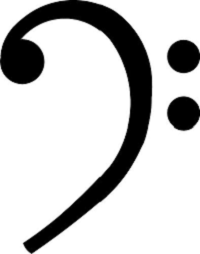В основных моментах, связанных с образованием звука мы разобрались. Теперь пришло время поговорить о более конкретных вещах, а если более конкретно – о нотном письме. Сегодня будем вникать в суть того, как выглядит нотное письмо, как читать ноты и т.д.
Ноты, длительности и их обозначения
Собственно, первое, что нам нужно усвоить в вопросе записи нот, это факт того, что нотное письмо – устоявшаяся система записи звуков при помощи специальных знаков – нот. То есть, иных вариантов нет и быть не может. Сам нотный знак (нота) обозначается кружком, который может быть либо полностью черным, либо пустым.
К кружочкам пририсовываются линии, вертикальные палочки (штили), а также хвосты и ребра. Все это придумано для компактности записи нот. Также к нотам пририсовывают горизонтальные линии, которые соединяют короткие по длительности ноты в группы.
Для того, чтобы понять, каким образом обозначается каждый конкретный звук, нужно посмотреть на нотный стан – пять параллельных полос, в которых записывают ноты. Линии отсчитываются снизу, а в начале нотного стана (каждой строки) ставится вертикальная черта. Точно такая же черта будет стоять и в конце строки, что логично.
Сами ноты записываются на линиях, а также между ними. Помимо основных линий, также применяются дополнительные короткие линии для отдельных (слишком низких или слишком высоких) нот. Дополнительные линии могут располагаться как под нотным станом, так и над ним. Вертикальные полосы приписываются к нотам с правой стороны, по направлению вверх или вниз. В зависимости от длительности звука, к штилям дорисовывают хвосты.
Длительность нот, как уже сказано в предыдущем абзаце, обозначается хвостами у штилей. Чем короче нота по своей длительности – тем больше хвостов имеется у ее обозначения. Разница в длительностях довольно проста: каждая последующая длительность звучит вдвое короче предыдущей. Помимо этого, каждая предыдущая длительность состоит из двух следующих длительностей.
Для упрощения понимания, стоит обратиться к математике. Представим, что целая нота – это единица. Дальнейшие ноты будут составлять половины (и прочие части) от целой ноты. То есть:
1 = 1/2 + 1/2 = 1/4 + 1/4 + 1/4 + 1/4 = 1/8 + 1/8 + 1/8 + 1/8 + 1/8 + 1/8 + 1/8 + 1/8 и т.д.
Аналогично можно принять целую ноту за цифру 4, если мы говорим о музыке, размер которой составляет 4/4.
Ключи
Все мы слышали о скрипичном ключе. Помимо него существуют и другие разновидности ключей: басовый, альтовый и т.д. Собственно, ключ нужен для того, чтобы человек, читающий ноты, имел представление того, какая высота звуков используется в рамках записанных нот. Каждый ключ можно сопоставить с октавами фортепиано. Другими словами, ключи нужны, чтобы избежать огромного количества добавленных линий во время записи музыки нотами.
Ключ ставится в начале нотного стана и обозначает высоту определенного звука. Скрипичный ключ также именуется Ключ Соль – его “завитушка” своим центром указывает на расположение ноты Соль первой октавы на нотном стане, т.е. получается, что нота Соль располагается на второй линии.
Басовый ключ (или Ключ Фа) своей точкой обозначает высоту звука Фа малой октавы. Альтовый ключ отсылает нас к ноте До первой октавы, которая находится на третьей линии. Также применяется Теноровый ключ, который также отсылает нас к ноте До, но для него она будет находиться на четвертой линии. Альтовый и теноровый ключи применяются для небольшого количества инструментов – альта, тромбона и виолончели, фагота и снова тромбона, соответственно.
Гитаристы используют скрипичный ключ, бас-гитаристы – басовый ключ, клавишники – скрипичный и басовый ключ.
Знаки альтерации
Мы уже говорили об альтерации звуков в прошлых статьях. Для тех, кто не помнит, напоминаю вкратце: альтерация отвечает за изменение высоты звука на полтона выше или ниже. Альтерация – понижение или повышение основной ступени – обозначается диезами, бемолями, дубль-диезами и дубль-бемолями, а также знаком бекара, который отменяет действие предыдущих знаков.
Знаки альтерации ставятся перед нотами по мере надобности, а также ставятся при ключе (справа от него). Знаки альтерации около нот действуют в рамках одной ноты, а вот знаки у ключа действуют на протяжении всего произведения. То есть, если мы видим при ключе диез на одной из полосок, то все ноты в рамках музыкального произведения на этой линии будут диезами.
Дополнительные знаки, увеличивающие длительность
Кроме основных обозначений длительности нот (штилей, хвостов и т.д.) используются дополнительные знаки. К ним относятся: точка, две точки, лига и фермата.
Точка увеличивает действительную длительность ноты на ее половину, и ставится справа от головы ноты.
Две точки увеличивают длительность на половину и еще четверть. Ставятся две точки аналогично одной точке – у головы ноты.
Лига – выгнутая линия, связывающая между собой две ноты, находящиеся рядом. Длительности нот могут быть совершенно разными, а продолжительность общего звучания конкретной ноты будет равна сумме залигованных нот. Лига может применяться как в конкретном такте, так и для переноса звучания ноты между тактами.
Фермата – это знак в виде полукруга с точкой, который дает понять, что нота может звучать сколько угодно времени.
Паузы
Перерывы в звучании нот называются паузами.
В эти моменты не звучит ничего, кроме тишины. Продолжительность пауз аналогична продолжительности нот – каждая пауза имеет собственное обозначение длительности, а система работы аналогична длительности нот.
Тем, кто решил познать в музыке хоть что-либо серьезное, не избежать знакомства с различными нотными записями. Из данной статьи вы узнаете о том, как научиться читать ноты, не заучивая их, а лишь поняв те логические принципы, на которых базируется нотная грамота.
Что входит в понятие нотной грамоты? Это все то, что относится, так или иначе, к записи и чтению нот; это такой своеобразный язык, который понятен всем музыкантам Европы и Америки. Как известно, каждый музыкальный звук определяется 4-мя физическими свойствами: высотой, продолжительностью, громкостью и тембром (окраской). И с помощью нотной записи музыкант получает информацию обо всех этих четырех свойствах того звука, который он собирается спеть или сыграть на музыкальном инструменте.
Я предлагаю разобраться с тем, как отображается в нотной записи каждое из свойств музыкального звука.
Звуковысотность
Весь ряд музыкальных звуков выстроен в единую систему – звукоряд, то есть такой ряд, в котором все звуки следуют друг за другом по порядку, от самых низких до самых высокихзвуков, или наоборот. Звукоряд разделяется на октавы – отрезки музыкального звукоряда, каждый из которых содержит набор одинаковых по названию нот – до, ре, ми, фа, соль, ля, си.
Для записи и чтения нот используют нотный стан – это строка для записи нот в виде пяти параллельных линий (правильнее сказать – линеек). Любые ноты звукоряда записываются на нотном стане: на линейках, под линейками или над ними (ну и, естественно, между линейками с равным успехом). Линейки принято нумеровать снизу вверх:
Сами ноты обозначаются головками овальной формы. Если для записи ноты не хватает основных пяти линеек, то для них вводятся специальные дополнительные линейки. Чем выше нота звучит, тем выше она располагается и на линейках:
Представление о точной высоте звука дают музыкальные ключи, из которых наиболее всем известны два – скрипичный и басовый. Нотная грамота для начинающих базируется на изучении скрипичного ключа в первой октаве. Они записываются так:
О способах быстрого запоминания всех нот читайте в статье «Как быстро и легко выучить ноты», выполните предлагаемые там практические упражнения и вы не заметите, как проблема отпадёт сама собой.
Длительности нот
Продолжительность каждой ноты относится к области музыкального времени, которое представляет собой непрерывное движение с одной и той же скоростью равных долей, сравнимых с мерным биением пульса. Обычно одна такая доля ассоциируется с четвертной по длительности нотой. Посмотрите на рисунок, вы увидите графическое изображение разных по длительности нот и их названия:
Конечно, в музыке используются и более мелкие длительности. И вы уже поняли, что каждая новая, более мелкая длительность, получается в ходе деления целой ноты на число 2 в n-ой степени: 2, 4, 8, 16, 32 и т.д. Так, целую ноту мы можем разделить не только на 4 четвертных, но с равным успехом и на 8 восьмых или 16 шестнадцатых нот.
Музыкальное время очень хорошо организовано, и в его организации помимо долей участвуют более крупные единицы – такты, то есть отрезки, которые содержат точно заданное число долей. Такты выделяются визуально путём разделения одного от другого вертикальной тактовой чертой. Количество долей в тактах, и длительность каждой из них отражается в нотах с помощью числового размера.
И размеры, и длительности, и доли тесно связаны с такой областью в музыке, как ритм. Нотная грамота для начинающих обычно оперирует наиболее простыми размерами, например, 2/4, 3/4 и т.п. Посмотрите, как в них может быть организован музыкальный ритм.
Громкость
На то, как сыграть тот или иной мотив – громко или тихо, также указано в нотах. Тут всё просто. Вот, какие значки вы будете встречать:
Тембр
Тембр звуков – это область, которая нотной грамотой для начинающих почти совсем не затрагивается. Однако, как правило, в нотах есть разные указания по этому поводу. Самое простое – название инструмента или голоса, для которого предназначено данное сочинение. Самое сложное связано с техникой игры (например, включение и выключение педалей на рояле) или с приёмами извлечения звука (например, флажолеты на скрипке).
На этом следует остановиться: с одной стороны, вы узнали уже многое о том, что можно прочитать в нотах, с другой – немало ещё предстоит узнать. Следите за обновлениями на сайте. Если вам понравился данный материал, порекомендуйте его своим друзьям, используя кнопки внизу страницы.
Вверх

Урок 2. Нотная грамота

Этого достаточно, чтобы приступить к изучению нотной грамоты «с нуля». Если нотная грамота вам знакома, все равно просмотрите материал урока с целью убедиться, что вы ничего не пропустили, когда изучали нотную грамоту ранее.
Цель урока: познакомиться с нотной грамотой «с нуля», получить представление о паузах и длительностях нот, их расположении на нотном стане и других связанных с этой темой понятиях.
Это нужно, чтобы вы могли в будущем самостоятельно разбирать ноты, записанные на нотном стане, и ориентироваться в табах и аккордах, если вам попадется аккордовая запись мелодии либо табулатура.
Содержание:
- Кто придумал ноты
- Расположение нот на нотном стане
- Знаки альтерации
- Ключи на нотном стане
- Длительности нот
- Паузы
- Тест на проверку знаний
Заметим, что большинство современных музыкальных сайтов чаще предлагают для гитары именно аккорды либо табулатуру (табы) к песне, нежели традиционную запись на нотном стане. Для начинающих музыкантов нужно уточнить, что аккорды и табы – это те же самые ноты, только записанные в другом виде, т.е. в другом виде музыкальной нотации, поэтому выучить ноты нужно обязательно. В общем, приступаем!
Кто придумал ноты
Начнем с небольшого исторического экскурса. Считается, что первым человеком, кому пришла в голову идея обозначать высоту звука знаками, был флорентийский монах и композитор Гвидо д’Ареццо. Это случилось в первой половине 11 века. Гвидо учил монастырских певчих различным церковным песнопениям, а чтобы добиться слаженного звучания хора, придумал систему знаков, указывающих на высоту звука.
Это были квадратики, расположенные на четырех параллельных линиях. Чем более высокий звук нужно было издать, тем выше располагался квадратик. В его нотации было всего 6 нот, а названия они получили от начальных слогов строк Гимна, воспевающего Иоанна Крестителя: Ut, Resonare, Mira, Famuli, Solve, Labii. Несложно заметить, что 5 из них – «ре», «ми», «фа», «соль», «ля» – используются и сегодня. К слову, музыку к гимну написал сам Гвидо д’Ареццо.
Позже в нотный ряд добавилась нота «си», в нотный стан – пятая линейка, скрипичный и басовый ключи, знаки альтерации, которые мы сегодня будем изучать. В эпоху Средневековья, когда зарождалась буквенная нотация, звукоряд было принято начинать с ноты «ля», за которой закрепилось обозначение в виде первой буквы латинского алфавита А. Соответственно, следующей за ней ноте «си» досталась вторая буква алфавита В.
Поскольку процесс формирования способов записи звуков развивался в разных странах параллельными курсами, возникли разные варианты нотаций. Так, в немецкой музыкальной традиции дополнительной ноте «си» присвоили букву Н, следующую за буквой G. Это связано с тем, что у немцев буква В была уже занята нотой «си-бемоль», которую располагали сразу за нотой «ля».
Современное понимание звукоряда и основных его ступеней сложилось в 17 веке, а звук, соответствующий по высоте «си-бемолю», долгое время считался базовым элементом музыкальной системы, т.е. не пониженным и не повышенным. Сегодня общепринятой считается система нотации в виде C, D, E, F, G, A, B. Хотя и обозначение ноты «си» в виде Н тоже можно встретить. Мы уже начали и далее продолжим изучать системы нотации и записи нот на нотном стане, принятые в современном мире музыки.
Расположение нот на нотном стане
Вы уже знаете, что нота – это музыкальный звук. Ноты отличаются по высоте, и за каждой нотой закреплено свое обозначение. Также вы уже поняли, что нотный стан представляет собой 5 параллельных линий, на которых расположены ноты. За каждой нотой закреплено свое место. Собственно, именно так и можно идентифицировать ноты, глядя на обозначения в нотном стане. Теперь давайте совместим эти знания и посмотрим, как выглядит нотный стан с нотами в самом общем виде (на значки слева пока не смотрим):
Нотный стан (он же нотоносец) – это те самые 5 параллельных линий, которые вы видите на картинке. Кружочки на нотах – это условные обозначения нот. На верхнем нотоносце вы видите ноты для 1-й октавы, на нижнем – ноты для малой октавы.
Точкой отсчета в обоих случаях является нота «до» 1-й октавы, и для нее предусмотрена добавочная линейка. Разница в том, что на верхнем нотоносце ноты идут снизу вверх, поэтому нота «до» 1-й октавы находится внизу. На нижнем нотоносце ноты идут сверху вниз, поэтому нота «до» 1-й октавы находится сверху.
Однако мы помним, что музыкальные звуки охватывают намного больший диапазон, чем малая и первая октавы. Поэтому, чтобы получить полное представление о расположении нот на нотном стане, вам нужно изучить более подробную схему размещения нот:
Самые внимательные из вас увидели, что и на подробной схеме мы видим не все октавы. Чтобы увидеть правильное расположение всех нот, нам снова понадобятся добавочные линейки. Посмотрите, как это выглядит, на примере контроктавы:
А теперь вы уже готовы к тому, чтобы выучить расположение всех нот на нотном стане. Для удобства скоординируем изображение нотного стана с клавиатурой фортепиано, которую вы уже успели рассмотреть, когда проходили урок №1. Обратите внимание, где находится первая нота «до» 1-й октавы относительно линий верхнего и нижнего нотоносца. Мы отметили ее красным цветом:
У большинства из тех, кто видит всю эту картину впервые, возникает вопрос: а как же это запомнить?!.. В общем-то, запомнить вам нужно только расположение первой ноты «до» 1-й октавы, а все остальные ноты располагаются в определенной логической последовательности относительно первой ноты «до».
Более легкому запоминанию нот поможет упражнение «Лезгинка». Как ни удивительно, к музыке оно никакого отношения не имеет, а предназначено для развития координации работы правого и левого полушарий головного мозга у детей [А. Сиротюк, 2015]. Представьте, что кулак или ладошка с поджатыми пальцами – это кружок для обозначения ноты, а прямая кисть руки, которая упирается в середину ребра ладони – это добавочная линейка нотоносца:
Так вы запомните, что добавочная линейка рассекает пополам кружок, обозначающий ноту «до»:
Дальше будет проще. Ноту «ре» можно представить как кулак, расположенный над вытянутой кистью. Следующая нота «ми» будет рассечена пополам вытянутой кистью, но кисть уже будет изображать не добавочную линию, а нижнюю из пяти линий нотоносца. Для ноты «фа» мы поднимаем кулак над линией, а ноту «соль» рассекаем вытянутой кистью, которая теперь изображает вторую снизу линию нотоносца. Думается, принцип построения нот вы поняли. Аналогично можно выстроить ноты, идущие вниз относительно «до» 1-й октавы.
Если вы хотите освоить специальные мнемотехники, которые помогут запоминать любую информацию, записывайтесь на наш курс «Мнемотехники», и за короткий срок (чуть больше месяца) вы поймете, что никаких проблем с памятью у вас нет. Есть лишь более эффективные техники запоминания, нежели те, которыми вы пользовались ранее.
Итак, с расположением нот на нотном стане, думаем, в целом все понятно. Самые внимательные уже заметили, что при рассмотренной выше расстановке нот места для диезов и бемолей, т.е. повышения и понижения ноты, уже не остается. И вот для этого нам нужны знаки альтерации в нотах.
Знаки альтерации
В конце предыдущего урока вы уже выучили символы диеза (♯) и бемоля (♭). Вы уже поняли, что если нота повышается на полутон, к ней добавляют значок диеза, если понижается на полутон – значок бемоля. Так, повышенная нота «соль» будет записана как G♯, а пониженная нота «соль» как G♭. Диез и бемоль называются знаками альтерации, т.е. изменения. Слово происходит от позднелатинского alterare, что переводится как «изменять».
Повышение на 2 полутона обозначается двойным, т.е. дубль-диезом, понижение на 2 полутона обозначается двойным, т.е. дубль-бемолем. Для дубль-диеза есть специальный значок, похожий на крестик , но, т.к. его трудно подобрать на клавиатуре, может использоваться обозначение ♯♯ или просто две решетки ##. Чтобы обозначить дубль-бемоль, пишут либо 2 значка ♭♭, либо латинские буквы bb.
Чтобы обозначить повышение или понижение ноты на нотном стане, значок диеза или бемоля располагается либо непосредственно перед нотой, либо, если ту или иную ноту нужно снизить или повысить во всем произведении, в начале нотного стана с нотами к произведению. Для случаев, когда изменение ноты предусмотрено на протяжении всего произведения, за символами диезов и бемолей закреплены определенные места на нотном стане:
Уточним для надписи на картинке, что под словосочетанием «в скрипичном ключе» подразумевается нотоносец для нот 1-5 октав, а под словами «в басовом ключе» – нотоносец для всех остальных октав от малой до субконтроктавы. Чуть позже мы расскажем про скрипичный и басовый ключи подробнее. Пока поговорим о том, как запомнить расположение диезов и бемолей на нотоносце.
В принципе, это несложно, если вы успели выучить расположение значков, обозначающих ноты. Так, значок диеза располагается ровно на той линии нотоносца, что и та нота, которую требуется повышать. Для нотоносца в скрипичном ключе вам нужно запомнить, где находятся ноты в диапазоне от «ля» 1-й октавы до «соль» 2-й октавы, и вы легко поймете закономерность размещения диезов:
Точно такая закономерность наблюдается при расположении бемолей. Они тоже находятся на тех строчках, что и ноты, к которым они относятся. Здесь в качестве ориентира используются ноты в диапазоне от «фа» 1-й октавы до «ми» 2-й октавы:
С диезами и бемолями в басовом ключе действуют абсолютно те же закономерности. Для ориентирования в диезах вам следует запомнить расположение нот от «соль» малой октавы до «ля» большой октавы:
Для ориентирования в бемолях нужно запомнить расположение нот от «ми» малой октавы до «фа» большой октавы:
Как вы уже заметили, для расположения диезов и бемолей в начале произведения возле ключа – скрипичного или басового – задействуются только основные линейки нотоносца. Такие знаки альтерации называются ключевыми.
Знаки альтерации, относящиеся только к одной ноте, называются случайными или встречными, действуют в пределах одного такта и располагаются непосредственно перед этой нотой.
А сейчас давайте разберемся, что же делать, если нужно отменить диез или бемоль, установленный в начале нотного стана. Такая необходимость может возникнуть при модуляции, т.е. при переходе в другую тональность. Это модный прием, часто применяемый в эстрадной музыке, когда последний припев или куплет и припев исполняется на 1-2 полутона выше, чем предыдущие куплеты и припевы.
Для этого существует еще один знак альтерации: бекар. Его функция – отмена действия диезов и бемолей. Бекары тоже подразделяются на случайные и ключевые.
Функции бекара:
- Случайный бекар отменяет действие случайных знаков альтерации, ставится в том месте и перед той нотой, для которой нужно отменить действие диеза или бемоля, и действует в пределах такта.
- Ключевой бекар отменяет действие диезов и бемолей, указанных в начале произведения, т.е. ключевых. Он действует до следующей смены ключевого знака либо, если такового не будет, до конца произведения.
Чтобы было нагляднее, посмотрите, где располагается случайный бекар на нотном стане:
А теперь посмотрите, где располагается ключевой бекар, и вы сразу поймете разницу:
Уточним, что запись на нотном стане применяется для гитары и фортепиано, и любых других музыкальных инструментов, а вот табы, которые вы видите на предыдущей картинке под нотным станом, используются для гитары.
В гитарных табах 6 линий по количеству струн гитары. Верхняя линия обозначает самую тонкую струну, которая будет нижней, если вы возьмете гитару в руки. Нижняя линия означает самую толстую гитарную струну, которая является верхней, когда вы держите гитару в руках. Цифры указывают, на каком ладу зажимать ту струну, на которой написана цифра.
Применительно к иллюстрации по случайному бекару мы видим, что сначала нужно было играть «до-диез», который как раз находится на втором ладу 2-й струны. После бекара, т.е. отмены диеза, нужно играть чистую ноту «до», которая находится на первом ладу 2-й струны. Финальный урок нашего курса будет посвящен игре на различных музыкальных инструментах, в том числе на гитаре, и мы расскажем, как легко и просто запомнить расположение нот на гитарном грифе.
Подведем итог и сведем воедино всю информацию по знакам альтерации на следующей картинке:
Если вы уже умеете играть на каком-нибудь музыкальном инструменте, а сейчас решили подтянуть теорию, рекомендуем прочитать параграф 11 «Знаки альтерации» в учебнике Варфоломея Вахромеева «Элементарная теория музыки», где есть примеры разбора нотной записи [В. Вахромеев, 1961]. Мы же переходим к выполнению ранее данных обещаний и расскажем, что же такое ключи применительно к нотному стану.
Ключи на нотном стане
Мы ранее использовали словосочетания «в скрипичном ключе» и «в басовом ключе». Расскажем, что имеется в виду. Дело в том, что за каждой из линий нотоносца условно закреплена определенная звуковысотность. Ввиду того, что в мире существует множество музыкальных инструментов, издающих самые разные звуки, понадобились некие «точки отсчета» звуковысотности, и их роль отдали ключам.
Ключ выписывается так, чтобы линия, откуда стартует отсчет, пересекла его в главной точке. Таким способом ключ закрепляет за нотой, написанной на данной линии, точную высоту, относительно которой отсчитывается высотность и наименования прочих звуков. Различают несколько разновидностей ключей.
Ключи – перечень:
- Скрипичный – так называемый ключ «Соль», закрепляет на 2-й линии высоту звука «соль» 1-й октавы. Главная точка расположена по центру спирали ключа и как бы «накручивается» на 2-ю линейку нотного стана.
- Басовый– так называемый ключ «Фа», закрепляет на 4-й линии высоту «фа» в малой октаве. 2 точки знака стоят сверху и снизу 4-й линии нотоносца, если вести отсчет снизу.
- Альтовый – так называемый ключ «До», закрепляет высоту «до» в 1-й октаве на 3-й линии, используется преимущественно для альтовых инструментов.
- Теноровый – тоже ключ «До», но уже на 4-й линии, используется для таких инструментов как фагот, виолончель и тромбон.
Давайте проиллюстрируем:
Заметим, что когда-то ключей «До» было больше. Ключ «До» на 1-й линии назывался сопрановым, на 2-й – меццо-сопрановым, на 5-й – баритоновым, а употреблялись они для вокальных партий соответственно указанным диапазонам. Вообще, разные ключи в нотах нужны, чтобы не делать добавочные линии нотоносца в избыточных количествах и облегчить восприятие нот. К слову, чтобы упростить чтение нот, используется ряд дополнительных обозначений, о которых мы сейчас поговорим.
Длительности нот
Когда на 1-м уроке мы изучали физические свойства звука, мы узнали, что для музыкального звука важной характеристикой является его длительность. Глядя на нотный стан, музыкант должен понимать не только то, какую ноту нужно сыграть, но и как долго она должна звучать.
Чтобы было проще ориентироваться, кружочки нот могут быть светлыми или темными (пустыми или заштрихованными), иметь дополнительные «хвостики», «палочки», «линии» и прочее. Глядя на эти нюансы, сразу понятно, целая это нота или половинная, или еще какая-либо. Осталось разобраться, что значит «целая» нота, «половинная» и т.д.
Как считать длительности:
| 1 | Целая нота– тянется на равномерный отсчет «раз и 2 и 3 и 4 и» (звук «и» в конце произносится обязательно – это важно). |
| 2 | Половинная– тянется на отсчет «раз и 2 и». |
| 3 | Четвертная – тянется на «раз и». |
| 4 | Восьмая– тянется на «раз» или на звук «и», если восьмые идут подряд. |
| 5 | Шестнадцатая– успевает повториться дважды на слово «раз» или на звук «и». |
Понятно, что считать можно с разной скоростью, поэтому для унификации счета используется специальное устройство: метроном. Там четко выверено расстояние между звуками и устройство как бы считает вместо вас. Сейчас существует бесчисленное множество программ с функцией метронома, как самостоятельных, так и имеющих данную опцию в составе других мобильных приложений для музыкантов.
В Google Play можно найти, к примеру, программу-метроном Soundbrenner, а можно скачать программу для настройки гитары Guitar Tuna, где в разделе «Инструменты» будет «Библиотека аккордов» и «Метроном» (не забудьте разрешить приложению доступ к микрофону). Далее давайте разберемся, как обозначается длительность нот.
Длительности (обозначения):
- Целая нота – светлый (незакрашенный) значок.
- Половинная – светлый (незакрашенный) значок + штиль (вертикальная линия).
- Четвертная– темный (заштрихованный) значок + штиль.
- Восьмая– темный (заштрихованный) значок + штиль с «флажком» (он же «хвостик»).
- Шестнадцатая– темный (заштрихованный) значок + штиль с двойным «хвостиком».
- Тридцать вторая – темный (заштрихованный) значок + штиль с тройным «флажком».
- Точки справа от ноты увеличивают долготу звука в 1,5 раза.
Думается, принцип понятен, а для наглядности предлагаем вам следующую иллюстрацию:
Если 8-е, 16-е, 32-е ноты идут подряд, их принято объединять в группы и не «пестрить» большим количеством «хвостиков» или «флажков». Для этого применяется так называемое «ребро». По количеству ребер можно сразу понять, какие именно ноты объединены в группу для проигрыша.
Объединение нот в группу:
- 1 ребро – восьмые.
- 2 ребра – шестнадцатые.
- 3 ребра – тридцать вторые.
- 4 ребра – шестьдесят четвертые.
Вот как это выглядит:
Обычно ноты объединяются внутри такта. Напомним, что такт – это ноты и сопутствующие им знаки между двумя вертикальными линиями, которые именуются тактовыми чертами:
Как вы заметили, штиль может смотреть наверх либо вниз. Тут есть свои закономерности.
Направление штиля:
- Для записи одной мелодической линии без моментов, когда звучат одновременно две ноты или больше, штили направляю вверх для нот, изображенных ниже середины нотного стана, и вниз для нот, нарисованных выше середины нотного стана. Штили нот на 3-й (средней) линии могут быть направлены и вверх, и вниз, но чаще их направляют вниз.
- Для записи двух мелодических линий, когда могут звучать несколько нот одновременно, штили для нот «верхней» мелодии смотрят вверх, для «нижней» мелодии – вниз.
Более подробную информацию про длительности нот можно найти у Вахромеева в «Элементарной теории музыки [В. Вахромеев, 1961].
И, наконец, в любой мелодии есть и звуки, и паузы между ними. Поговорим о них.
Паузы
Паузы измеряются по такому же принципу, как нотные длительности. Пауза точно так может быть целой, половинной и т.д. Однако пауза может длиться дольше, чем целая нота, и для таких случаев придуманы особые названия. Так, если пауза длится в 2 раза дольше, чем целая нота, ее называют бревис, если в 4 раза дольше – это лонга, в 8 раз – максима. Полный перечень названий с обозначениями можно увидеть в нижеследующей таблице:
Итак, на сегодняшнем уроке вы познакомились с нотной грамотой «с нуля», получили представление о знаках альтерации, написании нот, обозначении пауз и других связанных с этой темой понятиях. Думаем, что для одного задания этого более чем достаточно. Теперь осталось закрепить ключевые моменты урока с помощью проверочного теста.
Тест на усвоение материала урока
Если вы хотите проверить свои знания по теме данного урока, можете пройти небольшой тест, состоящий из нескольких вопросов. В каждом вопросе правильным может быть только 1 вариант. После выбора вами одного из вариантов, система автоматически переходит к следующему вопросу. На получаемые вами баллы влияет правильность ваших ответов и затраченное на прохождение время. Обратите внимание, что вопросы каждый раз разные, а варианты перемешиваются.
А теперь переходим к изучению гармонии в музыке.
← 1 Свойства звука3 Гармония в музыке →
Загрузить PDF
Загрузить PDF
Нотная запись — это язык, который развивался тысячи лет. Даже той нотной записи, которой мы пользуемся сегодня, уже более 300 лет. Музыкальная нотация — это запись звуков с помощью символов, начиная от основных характеристик звука, вроде высоты, длительности и расположения во времени, заканчивая более сложными обозначениями экспрессии, тембра и даже дополнительных эффектов. В этой статье мы расскажем вам об основах чтения нотной записи, покажем некоторые более продвинутые способы и подскажем, где можно найти дополнительную информацию по этой теме.
-
1
Изучаем нотный стан. Прежде чем переходить к изучению нотной записи, вам необходимо освоить одну из самых важных вещей, которую должен знать практически каждый, кто хочет читать нотную запись. Горизонтальные линии в нотной записи представляют собой нотный стан. Это самый первый элемент музыкальной нотации, и он является основной для всего, что мы будет изучать далее.
- Нотный стан — это набор пяти параллельных линий и промежутков между ними. И у линий, и у промежутков между ними есть свои номера для удобства обращения. Счет ведется снизу (снование нотного стана) вверх (вершина нотного стана).
-
2
Начнем со скрипичного ключа. Первое, что вы заметите, читая нотную запись — это скрипичный ключ. Этот знак выглядит как большой, причудливой рукописный символ в левой части нотного стана и показывает, в каком регистре нужно играть ноты. Этот ключ является отправной точкой для всех голосов и инструментов высокого регистра, и в наших примерах мы будем использовать именно его.
- Скрипичный ключ, или ключ «соль», произошел от декоративной латинской буквы G. Чтобы не забыть, запомните, что линия в центре завитка ключа представляет собой ноту G. На нотном стане с этим ключом располагаются такие ноты:
- Пять линий, снизу вверх, обозначают следующие ноты: E G B D F.
- Четыре промежутка между линиями, снизу вверх, обозначают ноты: F A C E.
- Если вам тяжело их запомнить, используйте для этого мнемонику. Для линий чаще всего используют мнемонику «Every Good Boy Does Fine» (англ. «у каждого хорошего мальчика все хорошо»), а ноты в промежутках и так составляют слово «FACE» (англ. «лицо»). Упражнения с онлайн-инструментом по распознаванию нот — это еще один отличный способ закрепить материал.
-
3
Басовый ключ. Басовый ключ, или ключ «фа», используется для инструментов нижнего регистра, таких как бас-гитара, тромбон, клавиши левой руки пианино и прочих.
- Название ключа берет свое начало от готской буквы F. Две точки на ключе располагаются над и под линейкой ноты «фа». На нотном стане с басовым ключом располагаются другие ноты, чем на скрипичном ключе:
- Пять линий, снизу вверх, обозначают ноты: G B D F A. Мнемоника — Good Boys Don’t Fool Around (англ. «хорошие мальчики не валяют дурака»).
- Расстояния между линиями, снизу вверх: A C E G. Мнемоника — All Cows Eat Grass (англ. «все коровы едят траву»).
-
4
Элементы ноты. Каждый отдельный символ ноты включает в себя до трех элементов: головка, штиль и флажок.
- Головка ноты. Это овал, который может быть пустым (белым) или закрашенным (черным). По сути, головка ноты показывает исполнителю, какую ноту играть.
- Штиль. Вертикальная тонкая линия, которая соединяется с головкой ноты. Если штиль направлен вверх, то он стоит справа от головки. Если он направлен вниз — слева. Направление штиля никак не влияет на ноту, а служит лишь для удобства чтения нот и уменьшает загромождение знаков.
- Общее правило для направления штиля звучит следующим образом: если нота стоит на средней линии или выше ее, то штиль направлен вверх; если нота стоит ниже средней линии — штиль направлен вниз.
- Флажок. Имеет вид изогнутого штриха, присоединенного к концу штиля. Независимо от того, с какой стороны от головки стоит штиль, флажок всегда направлен вправо.
- Объединенные в ноту флажок, штиль и головка сообщают музыканту о длительности ноты, которая измеряется в тактах или долях. Вы улавливаете ритм, когда слушаете музыку и топаете ногой.
Реклама
-
1
Тактовая черта. Обратите внимание на тонкие вертикальные линии на нотной записи, пересекающие запись через определенные промежутки. Эти линии представляют тактовые черты — пространство до первой линии считается первым тактом, пространство между первой и второй линиями представляет второй такт, и так далее. Тактовая черта не влияет на звучание музыки, но помогает исполнителю в ней ориентироваться.
- Как видно ниже, такты также полезны тем, что они все имеют одинаковое количество долей. Например, если вы начнете отбивать «1-2-3-4», когда по радио будет играть песня, скорее всего, вы уже на подсознательном уровне определили тактовые линии.
-
2
Освойте ритм и метр. Метр можно воспринимать как пульсацию музыки или ее сердечный ритм. Вы чувствуете его интуитивно, когда слушаете поп- или танцевальную музыку. Простым примером метра может служить «бум, тсс, бум, тсс» в обычном танцевальном треке.
- В нотной записи такт представляется в виде дроби рядом с ключом. Как и у обычной дроби, у этой тоже есть числитель и знаменатель. Числитель, записанный в верхней части стана, говорит о том, сколько долей в одном такте. А знаменатель — о длительности каждой доли (та самая пульсация, которую вы отбиваете).
- Легче всего понять тактовый размер 4/4, также известный как «стандартный» размер. При размере 4/4 в каждом такте имеется четыре доли, а каждая четвертная нота равна одной доле. Этот тактовый размер можно услышать в большинстве композиций популярной музыки. Вы можете отбивать стандартный тактовый размер, отсчитывая «1-2-3-4 1-2-3-4…» каждый такт.
- Меняя числитель, мы меняем количество долей в такте. Еще один распространенный размер такта — 3/4. К примеру, большинство вальсов имеют тактовый размер 3/4 и ровный ритм «1-2-3, 1-2-3».
- Тактовый размер может быть указан в виде латинской буквы «C». Размер «C» эквивалентен 4/4; размер перечеркнутой «C» эквивалентен 2/2 (алла бреве).
Реклама
-
1
Ловите ритм. Ритм, как метр и размер, играет ключевую роль в том, какие ощущения вызывает музыка. Однако в то время как метр определяет количество долей, ритм определяет их качество.
- Проведем эксперимент. Стучите пальцами по столу равномерно в ритм 1-2-3-4, 1-2-3-4. Скучно, не так ли? А теперь вот так: на счет 1 и 3 стучите сильнее, а на счет 2 и 4 — слабее. Совсем другие ощущения! Теперь поменяйте их местами: сильно — на 2 и 4, слабо — на 1 и 3.
- Послушайте песню Риты Спекер «Don’t Leave Me». Ритм слышно отлично: тихий бас-барабан на счет 1 и 3, громкий хлопок и тарелки на счет 2 и 4. Теперь вы будете гораздо лучше понимать, как устроена музыка. Это и называется чувством ритма!
-
2
Представьте, что вы гуляете. Каждый шаг соответствует одному удару, которые в музыкальной нотации будут записываться четвертными нотами. А все потому, что в большинстве западной музыке один такт состоит из четырех долей. Нотная запись вашей прогулки будет такой:
- Каждый шаг равен одной четвертной ноте. В нотной записи четвертные ноты представляются в виде закрашенных черных точек, прикрепленных к штилю без каких-либо флажков. Можете считать шаги: «1-2-3-4, 1-2-3-4» и так далее.
- Если бы вы снизили скорость вдвое, чтобы каждый шаг стал равен двум долям, на 1 и на 3, то это были бы половинные ноты (длиной в пол такта). В нотной записи половинные ноты выглядят как четвертные ноты, но с одним отличием — они не полностью черные, а имеют белый центр.
- Если вы снизите скорость еще на половину, делая шаг каждые четыре доли, на счет 1, то это будет целая нота (одна нота на такт). В нотной записи целые ноты выглядят как буквы «О» или пончики, по аналогии с половинными нотами без штилей.
-
3
Пошевеливайтесь! Хватит уже медлить. Как вы заметили, замедляясь, мы убирали части ноты. Сначала мы сделали головку ноты пустой, затем убрали штиль. Давайте теперь посмотрим, как ускориться. Для этого мы будет добавлять ноте элементы.
- Вернемся к нашей прогулке в нормальном темпе. Представьте, как вы идете по улице (для удобства отбивайте шаги ногой). Представьте, что только что подъехал ваш автобус, а вам до него еще целый квартал. Что делать? Бежать! Бегите к автобусу и помашите водителю.
- Чтобы ускорить ноты, им нужно добавить флажок. Каждый флажок снижает длительность ноты наполовину. Например, восьмая нота (с одним флажком) по длительности равна половине четвертной, а шестнадцатая (с двумя флажками) — половине восьмой. Возвращаясь к ходьбе, это означает, что мы переходим от шага (четвертная нота) на бег (восьмая нота, в два раза быстрее ходьбы), а затем на спринт (шестнадцатая нота, в два раза быстрее обычного бега). Представьте, что каждая четвертная нота это шаг, и простучите пример выше.
-
4
Свяжите ноты! Как видно из предыдущего примера, если на нотном стане слишком много нот, читать их становится труднее. Взгляд сбивается, и вы теряете ноту. Чтобы сгруппировать ноты для простоты в группы поменьше, нужно соединить их вязками.
- Связки заменяют индивидуальные флажки толстыми линиями, соединяющими штили нот. Существует вполне логичная система соединения нот и, хотя в более сложных музыкальных произведениях соединения ног могут быть очень сложными, для наших целей достаточно соединять ноты в четвертные. Сравните картинку внизу и картинку вверху. Опять простучите ритм и обратите внимание, насколько связки облегчают чтение нотаций.
-
5
Лиги и точки. Если флажок сокращает длительность ноты вдвое, то точка имеет похожую, но обратную функцию. За небольшим исключением, которое для нас сейчас не важно, точка всегда ставится справа от головки ноты. Точка увеличивает длительность ноты на половину от ее изначальной длительности.
- Например, половинная нота с точкой равна сумме половинной и четвертной нот. Четвертная нота с точкой — сумме четвертной и восьмой ноты.
- Лиги, как и точки, увеличивают длительность нот. Связанные ноты — это две ноты, головки которых соединены дуговой линией. В отличие от точек, которые являются абстрактными и добавляют длину в зависимости от начальной длины ноты, связующие лиги добавляют точную длину: длина первой ноты увеличивается ровно на длину второй ноты.
- Например, один из случаев, когда вместо точки нужно использовать лигу, это когда длительность ноты не помещается в такт. В этом случае нужно просто добавить не вместившуюся длительность в следующий такт соответствующей нотой и связать обе ноты.
- Отметим, что лига соединяет головки нот и обычно ставится с противоположной стороны от штилей.
-
6
Передохнем. Кто-то скажет, что музыка — это просто набор нот, и будет прав только наполовину. Музыка — это последовательность нот и промежутков между ними. Эти промежутки называются паузами, и они действительно могут оживить музыку и придать ей эмоциональности. Давайте посмотрим, как записываются паузы.
- Как и у нот, у пауз есть отдельные символы для каждой длительности. Целая пауза обозначается прямоугольником, свисающим с четвертой линии, а половинная пауза — прямоугольником, лежащим на третьей линии. Четвертная пауза — это волнистая вертикальная линия. Оставшиеся паузы представляют собой наклонную черту с флажком, количество которых зависит от длины паузы и равно количеству флажков соответствующей ноты. Флажки пауз всегда направлены влево.
Реклама
-
1
Вот мы и разобрались с основами: нотным станом, элементами ноты и основами записи длительностей нот и пауз. Проверьте еще раз, все ли вы поняли, после чего мы перейдем к более веселым вещам, а именно к чтению нот!
-
2
Выучите до мажорный звукоряд. До мажорный звукоряд — основной звукоряд, использующийся в западной музыке. Большая часть других звукорядов, которые вы будете изучать, произошли от него. Как только вы вобьете ее в подкорки мозга, остальные звукоряды будут даваться легче.
- Сначала мы покажем, как она выглядит, потом — что означает, после чего приступим к чтению нот. Вот как она выглядит на нотном стане. До мажорный звукоряд представлен на картинке выше.
- Посмотрите на первую ноту, ноту C, которая расположена ниже линий нотного стана. В этом случае мы просто добавляем еще одну короткую линию специально для этой ноты (та самая линия, проходящая через головку ноты). Чем ниже нота, тем больше линий нужно добавить. Но пока не загружайте себе этим голову.
- Звукоряд до мажор состоит из восьми нот. Эти ноты расположены на белых клавишах пианино.
- Если под рукой у вас нет настоящего пианино, тогда воспользуйтесь виртуальным. На этом этапе очень важно начать понимать не только, как записываются ноты, но и как они звучат.
-
3
Освойте Пение с листа (сольфеджио). Пусть вас не пугают эти слова — это просто пение нот до, ре, ми и так далее.
- Осваивая пение нот с листа, вы разовьете навык чтения нот боковым зрением — навык, на доведение до идеала которого может потребоваться вся жизнь, и который будет очень полезен на начальных этапах. Давайте еще раз посмотрим на звукоряд до мажор, но теперь добавим названия нот. Звукоряд до мажор с названием нот представлен под «C Scale Solfege 1» на картинке выше.
- Возможно, вы слышали песню «Do-Re-Mi» коллектива Rogers and Hammerstein. Если можете пропеть эту песню, то сделайте это сейчас, смотря на ноты звукоряда. Если вы ее забыли, можете послушать эту песню на YouTube.
- А вот более сложный вариант — восходящий и нисходящий звукоряд до мажор с названиями нот, который представлен под «C Scale Solfege 11» на картинке выше.
- Потренируйтесь несколько раз петь эту последовательность, пока вы ее не запомните. Сначала читайте медленно, одновременно смотря на каждую ноту и распевая ее. Затем вместо «до-ре-ми» пойте C-D-E. Наша цель — правильно брать ноты.
- Запомните длительности нот: верхняя нота «до» в конце первой линии и нижняя нота «до» в конце второй линии — половинные ноты. Остальные ноты — четвертные. Если опять представить прогулку, четвертная нота соответствует одному шагу, а половинная нота равна двум шагам.
-
4
Поздравляем! Вы научились читать ноты!
Реклама
-
1
Переходим к следующему шагу. Итак, мы рассмотрели основы ритма и мелодии, и у вас теперь есть базовое понимание того, что обозначают все эти точки и каракули. Хотя этих знаний достаточно, чтобы играть на детской дудочке, есть еще кое-что, что вам следует узнать. Самое важное из этого — это ключевые знаки.
- Наверное, вы уже видели диезы и бемоли: диез выглядит как решетка (♯), а бемоль — как печатная латинская буква б (♭). Оба знака ставятся слева от головки ноты и указывают на то, что следующая нота должна играться на пол тона выше (диез) или на пол тона ниже (бемоль). Звукоряд до мажор, как мы уже знаем, состоит из белых клавиш пианино. Черные клавиши — это диезы и бемоли. Но так как в звукоряде до мажор нет ни диезов, ни бемолей, она записывается так:
-
2
Тоны и полутоны. В западной музыкальной системе ноты находятся друг от друга на расстоянии тона или полутона. Если вы посмотрите на ноту C на пианино, то увидите, что между ней и следующей белой клавишей, нотой D, находится черная клавиша. Интервал между нотой С и D называется тоном. А интервал между нотой C и черной клавишей называется полутоном. Возможно, теперь вы задумались: «А как же называется черная клавиша?» Ответ: когда как.
- Для удобства можете запомнить, что при восходящей последовательности звуков эта нота является диезом предыдущей ноты. При нисходящей последовательности эта нота — бемолем предыдущей ноты. Таким образом, если двигаться от C к D, то черная клавиша между ними будет диезом (♯).
- В этом случае черная нота будет записана как C#. Если двигаться вниз, от ноты D к ноте C, и проходить по черной ноте между ними, то она будет записываться как бемоль (♭).
- Подобные договоренности облегчают чтение нот. Если бы вам нужно было записать восходящую последовательность этих трех нот, но вместо C# вы записали бы D♭, то запись имела бы знак бекар (♮).
- Обратите внимание на новый знак — бекар (♮). Где бы он ни находился, он отменяет все предыдущие диезы и бемоли. В этом примере вторая и третья ноты — ноты D: первая — D♭, а вторая — D, так как она на пол тона выше предыдущей D, поэтому, чтобы показать правильную ноту, ее пришлось «скорректировать». Чем больше диезов и бемолей разбросано по нотному стану, тем дольше музыканту придется в них разбираться перед игрой.
- Зачастую те композиторы, что ставили знаки альтерации в предыдущих тактах, могут поставить «необязательные» бекары, чтобы музыканту было понятнее. Например, если в предыдущем такте использовалась тональность ре мажор с нотой A#, то в следующем такте возле ноты A может стоять бекар.
-
3
Разбираемся с ключевыми знаками. К этому моменту мы рассмотрели звукоряд до мажор: восемь нот, все белые, начало с ноты C. Однако звукоряд можно начать с любой ноты. Если играть только белые клавиши, то это будет не мажорный звукоряд, а «ладовый звукоряд», рассмотрение которого не входит в цели этой статьи.
- Начальная нота, или тоника, соответствует тональности. Наверно вы уже слышали, как кто-то говорит что-то вроде: «Эта песня в тональности до». Это означает, что главный звукоряд начинается с ноты C и включается в себя ноты C D E F G A B C. Ноты в мажорном звукоряде соотносятся друг с другом по-особенному. Взгляните на клавиши, изображенные выше.
- Обратите внимание, что почти между всеми нотами интервал равен тону. А полутон только между нотами E-F и нотами B-C. У любого мажорного звукоряда такие же интервалы: тон-тон-полутон-тон-тон-тон-полутон. Если начать звукоряд с ноты G, то она будет выглядеть так:
- Обратите внимание на F# на верхней линейке. Чтобы отношения между нотами были правильными, ноту F нужно поднять выше ноты G на полтона, а не на тон. Такой звукоряд легко читать, но что, если начать звукоряд с ноты C#? Она будет выглядеть так:
- Теперь пошли сложности! Именно для того, чтобы убрать путаницу и упростить чтение нот, и были созданы ключевые знаки. В каждом мажорном звукоряде есть фиксированный набор диезов и бемолей, которые обозначаются в самом начале нотного стана. Взглянув опять на звукоряд соль мажор, мы увидим ноту F#. Вместо того чтобы ставить знак диеза рядом с нотой, мы ставим его в самое начало. В такой позиции знак диеза означает, что каждая нота F на стане должна играться как F#. Выглядит это вот так:
- Этот звукоряд звучит и играется точно так же, как и предыдущий мажорный звукоряд без ключевого знака. Полный список ключевых знаков можно найти ниже.
Реклама
-
1
Прибавьте или убавьте громкость. Слушая музыку, вы, должно быть, замечали, что громкость на всем протяжении песни не остается одинаковой, а меняется. Некоторые отрезки очень громкие, а некоторые тихие. Такие перепады называются динамикой.
- Если ритм и метр это сердце музыки, а ноты и тональности — ее мозг, то динамика это, определенно, голос музыки. Рассмотрите пример, приведенный выше.
- Простучите этот ритм по столу: 1 и 2 и 3 и 4 и 5 и 6 и 7 и 8 и так далее («и» между ударами — это восьмые ноты). Следите, чтобы громкость ударов была одинаковой, чтобы звук напоминал звук взлетающего вертолета. Теперь взгляните на второй пример.
- Обратите внимание на знаки акцента (>) над каждой четвертной нотой C. Опять простучите этот ритм, только в этот раз делайте акцент на каждой ноте со знаком акцента. Теперь вместо вертолета у вас должен получиться поезд. Лишь слегка изменив ударение, мы полностью изменили характер музыки!
-
2
Играйте в пиано, фортиссимо или где-то между ними. Так же, как человек не всегда говорит с одной и той же громкостью — он то повышает, то понижает громкость голоса в зависимости от ситуации — так и громкость музыки постоянно меняется. Музыкант узнает, с какой громкостью нужно играть, благодаря знакам динамики, которые расставляет на нотном стане композитор.
- Существуют десятки обозначений динамиков на нотном стане, но чаще всего вы будете встречать буквы f, m и p.
- p значит piano, или «тихо».
- f значит forte, или «громко».
- m значит mezzo, или «умеренно». Это буква влияет на стоящую после нее, как в mf или mp, которые обозначают «умеренно громко» и «умеренно тихо».
- Чем больше букв p или f стоят подряд, тем тише или громче нужно играть отрывок. Попробуйте пропеть ноты из примера выше (первая нота в примере — тоника или нота «до») с учетом динамики, и вы заметите разницу.
-
3
Играйте все громче, и громче, и громче или тише, и тише, и тише. Еще один часто встречающийся символ динамики — крещендо, и его противоположность — декрещендо. Они визуально отражают постепенное изменение громкости, которые выглядят как вытянутые символы «<» и «>».
- Крещендо постепенно усиливает звук, а декрещендо его понижает. Работая с этими двумя символами, вы должны заметить, что открытый конец представляет увеличение громкости, а закрытый конец — понижение громкости. Например, если музыка направляет вас постепенно перейти от forte к piano, вы увидите f’, затем вытянутый знак «>«, затем ‘p’.
Реклама
-
1
Продолжайте учиться! Учиться читать ноты — это как учиться читать слова. Основами овладеть достаточно легко, но дальше существует столько нюансов, идей и навыков, которым можно обучаться всю жизнь. Некоторые композиторы заходят так далеко, что пишут музыку на нотном стане, завернутом в спирали или другие узоры, или вообще не пользуются нотным станом! Это статья поможет вам заложить прочный фундамент и продолжить развиваться!
-
1
Выучите эти ключевые знаки. Для каждой ноты есть по крайней мере одна тональность. А упорный читатель обнаружит, что в некоторых случаях у одной ноты есть и две тональности. Например, тональность для ноты G# звучит так же, как и тонально для A♭! При игре на пианино и для целей этой статьи разница чисто теоретическая. Однако некоторые композиторы — особенно те, которые пишут музыку для струнных — считают, что A♭ нужно играть немного «диезнее», чем G#. Вот список мажорных тональностей и ключевых знаков:
- Тональность до (или атональный лад)
- Тональности с диезами: G, D, A, E, B, F♯, C♯
- Тональности с бемолями: F, B♭, E♭, A♭, D♭, G♭, C♭
- Как видите, при перемещении через диезные тональности, необходимо добавлять диезы по одному за раз, пока каждая нота не станет диезной в тональности C♯. При перемещении через бемольные тональности, нужно добавлять бемоли, пока каждая нота не станет бемольной в тональности C ♭.
- Вам будет полезно знать, что композиторы обычно пишут музыку в тональностях, которыми удобно читать музыканту. Ре мажор — очень распространенная тональность для струнных инструментов, потому что ноты открытых струны близко расположены с тоникой, нотой «ре». Есть некоторые произведения, в которых партии для струнных написаны в E♭ минор, или партия для медных в E мажор. Писать такие партии так же мучительно, как и играть их.
Реклама
Советы
- Практикуйтесь, играя на музыкальном инструменте. Если вы играете на пианино, то, возможно, вам уже приходилось читать ноты. Однако многие гитаристы учатся, слушая музыку, а не читая ноты. Если вы решили научиться читать ноты, забудьте все, что уже знаете. Сначала научитесь читать их, а потом играйте!
- Попрактикуйтесь в каком-нибудь тихом месте. Лучше всего начать с пианино, так как на нем легко практиковаться в начале. Если у вас нет пианино, попробуйте одно из виртуальных пианино в интернете. Разобравшись, вы можете перейти к обучению игры на других инструментах! Надеемся, это поможет.
- Найдите ноты ваших любимых песен. Зайдите в ближайшую библиотеку или музыкальный магазин, там вы найдете сотни — если не тысячи — книг с нотами и аккордами ваших любимых песен. Читайте ноты, слушая музыку, и вы будете лучше понимать ее на интуитивном уровне.
- Постарайтесь весело проводить время с музыкой, потому что будет довольно сложно научиться играть через силу.
- Поработайте над сольфеджио. Даже если вам не достался хороший голос, это поможет вам натренировать слух и услышать ноты.
- Постоянные и регулярные тренировки — вот залог успеха. Сделайте карточки или купите тетради для чтения нот, чтобы заложить прочный фундамент.
- Вам будет полезно выучить как западные ноты, так и обычные ноты. Изучение западных нот поможет вам в долгосрочной перспективе, и их намного легче запомнить, чем обычные ноты.
- На сайте imslp.org хранится большая коллекция партитур и записей исполнений музыкальных произведений. Сайт создан для того, чтобы люди могли выбрать одно из произведений какого-нибудь композитора, слушать его и одновременно читать ноты.
- Сохраняйте терпение. Как и изучение иностранного языка, обучение чтению нот требует времени. Как и в любом другом деле, чем больше вы практикуетесь, тем легче оно вам будет даваться, и тем лучше у вас будет получаться.
- Скользящая деталь на тромбоне играет диезные и бемольные ноты.
Реклама
Предупреждения
- Учиться чтению нот можно всю жизнь. Не торопитесь!
Реклама
Источники
Music Notation by Gardner Read- «Harmony by Walter Piston
Harper Dictionary of Music by Christine Ammer
Jazz Harmony by Andy Jaffe- Berklee College of Music
Об этой статье
Эту страницу просматривали 483 927 раз.
Была ли эта статья полезной?
This article is about a notation for music. For the «musical» notation in mathematics, see Musical isomorphism.
Hand-written musical notation by J. S. Bach (1685–1750). This is the beginning of the Prelude from the Suite for Lute in G minor, BWV 995 (transcription of Cello Suite No. 5, BWV 1011).
Music notation or musical notation is any system used to visually represent aurally perceived music played with instruments or sung by the human voice through the use of written, printed, or otherwise-produced symbols, including notation for durations of absence of sound such as rests.
The types and methods of notation have varied between cultures and throughout history, and much information about ancient music notation is fragmentary. Even in the same time period, such as in the 2010s, different styles of music and different cultures use different music notation methods; for example, for professional classical music performers, sheet music using staves and noteheads is the most common way of notating music, but for professional country music session musicians, the Nashville Number System is the main method.
The symbols used include ancient symbols and modern symbols made upon any media such as symbols cut into stone, made in clay tablets, made using a pen on papyrus or parchment or manuscript paper; printed using a printing press (c. 1400s), a computer printer (c. 1980s) or other printing or modern copying technology.
Although many ancient cultures used symbols to represent melodies and rhythms, none of them was particularly comprehensive, which has limited today’s understanding of their music. The seeds of what would eventually become modern Western notation were sown in medieval Europe, starting with the Christian Church’s goal for ecclesiastical uniformity. The church began notating plainchant melodies so that the same chants could be used throughout the church. Music notation developed further during the Renaissance and Baroque music eras. In the classical period (1750–1820) and the Romantic music era (1820–1900), notation continued to develop as new musical instrument technologies were developed. In the contemporary classical music of the 20th and 21st century, music notation has continued to develop, with the introduction of graphical notation by some modern composers and the use, since the 1980s, of computer-based score writer programs for notating music. Music notation has been adapted to many kinds of music, including classical music, popular music, and traditional music.
History[edit]
Ancient Near East[edit]
A tablet with the Hymn to Nikkal inscribed[1]
The earliest form of musical notation can be found in a cuneiform tablet that was created at Nippur, in Babylonia (today’s Iraq), in about 1400 BCE. The tablet represents fragmentary instructions for performing music, that the music was composed in harmonies of thirds, and that it was written using a diatonic scale.[2] A tablet from about 1250 BCE shows a more developed form of notation.[3] Although the interpretation of the notation system is still controversial, it is clear that the notation indicates the names of strings on a lyre, the tuning of which is described in other tablets.[4] Although they are fragmentary, these tablets represent the earliest notated melodies found anywhere in the world.[5]
A photograph of the original stone at Delphi containing the second of the two Delphic Hymns to Apollo. The music notation is the line of occasional symbols above the main, uninterrupted line of Greek lettering.
Ancient Greece[edit]
Ancient Greek musical notation was in use from at least the 6th century BCE until approximately the 4th century CE; only one complete composition (Seikilos epitaph) and a number of fragments using this notation survive. The notation for sung music consists of letter symbols for the pitches, placed above text syllables. Rhythm is indicated in a rudimentary way only, with long and short symbols. The Seikilos epitaph has been variously dated between the 2nd century BCE to the 2nd century CE.
Three hymns by Mesomedes of Crete exist in manuscript. The Delphic Hymns, dated to the 2nd century BCE also use this notation, but they are not completely preserved. Ancient Greek notation appears to have fallen out of use around the time of the Decline of the Western Roman Empire.
Byzantine Empire[edit]
Byzantine music notation in the first edition (1823) of Macarie Ieromonahul’s anastasimatarion, a hymnal with daily chant (including resurrection troparia called apolytikia anastasima) in oktoechos order, each section began with the evening psalm 140 (here section of echos protos with Romanian transliterated in Cyrillic script)
Byzantine music once included music for court ceremonies, but has only survived as vocal church music within various Orthodox traditions of monodic (monophonic) chant written down in Byzantine round notation (see Macarie’s anastasimatarion with the Greek text translated into Romanian and transliterated into Cyrillic script).[6]
Since the 6th century, Greek theoretical categories (melos, genos, harmonia, systema) played a key role to understand and transmit Byzantine music, especially the tradition of Damascus had a strong impact on the pre-Islamic Near East comparable to the impact coming from Persian music. The earliest evidence are papyrus fragments of Greek tropologia. These fragments just present the hymn text following a modal signature or key (like «ΠΛ Α» for echos plagios protos or «Β» for echos devteros).
Unlike Western notation, Byzantine neumes used since the 10th century were always related to modal steps (same modal degree, one degree lower, two degrees higher, etc.) in relation to such a clef or modal key (modal signatures). Originally this key or the incipit of a common melody was enough to indicate a certain melodic model given within the echos. Next to ekphonetic notation, only used in lectionaries to indicate formulas used during scriptural lessons, melodic notation developed not earlier than between the 9th and the 10th century, when a theta (θ), oxeia (/) or diple (//) were written under a certain syllable of the text, whenever a longer melisma was expected. This primitive form was called «theta» or «diple notation».
Today, one can study the evolution of this notation in Greek monastic chant books like those of the sticherarion and the heirmologion (Chartres notation was rather used on Mount Athos and Constantinople, Coislin notation within the patriarchates of Jerusalem and Alexandria), while there was another gestic notation originally used for the asmatikon (choir book) and kontakarion (book of the soloist or monophonaris) of the Constantinopolitan cathedral rite. The earliest books which have survived, are «kondakars» in Slavonic translation which already show a notation system known as Kondakarian notation.[7] Like the Greek alphabet notational signs are ordered left to right (though the direction could be adapted like in certain Syriac manuscripts). The question of rhythm was entirely based on cheironomia (the interpretation of so-called great signs which derived from different chant books). These great signs (μεγάλα σῃμάδια) indicated well-known melodic phrases given by gestures of the choirleaders of the cathedral rite. They existed once as part of an oral tradition, developed Kondakarian notation and became, during the 13th century, integrated into Byzantine round notation as a kind of universal notation system.[8]
Today the main difference between Western and Eastern neumes is that Eastern notation symbols are «differential» rather than absolute, i.e., they indicate pitch steps (rising, falling or at the same step), and the musicians know to deduce correctly, from the score and the note they are singing presently, which correct interval is meant. These step symbols themselves, or better «phonic neumes», resemble brush strokes and are colloquially called gántzoi (‘hooks’) in modern Greek.
Notes as pitch classes or modal keys (usually memorised by modal signatures) are represented in written form only between these neumes (in manuscripts usually written in red ink). In modern notation they simply serve as an optional reminder and modal and tempo directions have been added, if necessary. In Papadic notation medial signatures usually meant a temporary change into another echos.
The so-called «great signs» were once related to cheironomic signs; according to modern interpretations they are understood as embellishments and microtonal attractions (pitch changes smaller than a semitone), both essential in Byzantine chant.[9]
Chrysanthos’ Kanonion with a comparison between Ancient Greek tetraphonia (column 1), Western Solfeggio, the Papadic Parallage (ascending: column 3 and 4; descending: column 5 and 6) according to the trochos system, and his heptaphonic parallage according to the New Method (syllables in the fore-last and martyriai in the last column)[10])
Since Chrysanthos of Madytos there are seven standard note names used for «solfège» (parallagē) pá, vú, ghá, dhi, ké, zō, nē, while the older practice still used the four enechemata or intonation formulas of the four echoi given by the modal signatures, the authentic or kyrioi in ascending direction, and the plagal or plagioi in descending direction (Papadic Octoechos).[11] With exception of vú and zō they do roughly correspond to Western solmization syllables as re, mi, fa, sol, la, si, do. Byzantine music uses the eight natural, non-tempered scales whose elements were identified by Ēkhoi, «sounds», exclusively, and therefore the absolute pitch of each note may slightly vary each time, depending on the particular Ēkhos used. Byzantine notation is still used in many Orthodox Churches. Sometimes cantors also use transcriptions into Western or Kievan staff notation while adding non-notatable embellishment material from memory and «sliding» into the natural scales from experience, but even concerning modern neume editions since the reform of Chrysanthos a lot of details are only known from an oral tradition related to traditional masters and their experience.
13th-century Near East[edit]
In 1252, Safi al-Din al-Urmawi developed a form of musical notation, where rhythms were represented by geometric representation. Many subsequent scholars of rhythm have sought to develop graphical geometrical notations. For example, a similar geometric system was published in 1987 by Kjell Gustafson, whose method represents a rhythm as a two-dimensional graph.[12]
Early Europe[edit]
Music notation from an early 14th-century English Missal
The scholar and music theorist Isidore of Seville, while writing in the early 7th century, considered that «unless sounds are held by the memory of man, they perish, because they cannot be written down.»[13] By the middle of the 9th century, however, a form of neumatic notation began to develop in monasteries in Europe as a mnemonic device for Gregorian chant, using symbols known as neumes; the earliest surviving musical notation of this type is in the Musica disciplina of Aurelian of Réôme, from about 850. There are scattered survivals from the Iberian Peninsula before this time, of a type of notation known as Visigothic neumes, but its few surviving fragments have not yet been deciphered.[14] The problem with this notation was that it only showed melodic contours and consequently the music could not be read by someone who did not know the music already.
Notation had developed far enough to notate melody, but there was still no system for notating rhythm. A mid-13th-century treatise, De Mensurabili Musica, explains a set of six rhythmic modes that were in use at the time,[15] although it is not clear how they were formed. These rhythmic modes were all in triple time and rather limited rhythm in chant to six different repeating patterns. This was a flaw seen by German music theorist Franco of Cologne and summarised as part of his treatise Ars cantus mensurabilis (the art of measured chant, or mensural notation). He suggested that individual notes could have their own rhythms represented by the shape of the note. Not until the 14th century did something like the present system of fixed note lengths arise.[citation needed] The use of regular measures (bars) became commonplace by the end of the 17th century.[citation needed]
The founder of what is now considered the standard music staff was Guido d’Arezzo,[16] an Italian Benedictine monk who lived from about 991 until after 1033. He taught the use of solmization syllables based on a hymn to Saint John the Baptist, which begins Ut Queant Laxis and was written by the Lombard historian Paul the Deacon. The first stanza is:
- Ut queant laxis
- resonare fibris,
- Mira gestorum
- famuli tuorum,
- Solve polluti
- labii reatum,
- Sancte Iohannes.
Guido used the first syllable of each line, Ut, Re, Mi, Fa, Sol, La, and Si, to read notated music in terms of hexachords; they were not note names, and each could, depending on context, be applied to any note. In the 17th century, Ut was changed in most countries except France to the easily singable, open syllable Do, believed to have been taken either from the name of the Italian theorist Giovanni Battista Doni, or from the Latin word Dominus, meaning Lord.[17]
Christian monks developed the first forms of modern European musical notation in order to standardize liturgy throughout the worldwide Church,[18] and an enormous body of religious music has been composed for it through the ages. This led directly to the emergence and development of European classical music, and its many derivatives. The Baroque style, which encompassed music, art, and architecture, was particularly encouraged by the post-Reformation Catholic Church as such forms offered a means of religious expression that was stirring and emotional, intended to stimulate religious fervor.[19]
Modern staff notation[edit]
Modern music notation is used by musicians of many different genres throughout the world. The staff (or stave, in British English) consists of 5 parallel horizontal lines which acts as a framework upon which pitches are indicated by placing oval note-heads on (ie crossing) the staff lines, between the lines (ie in the spaces) or above and below the staff using small additional lines called ledger lines. Notation is read from left to right, which makes setting music for right-to-left scripts difficult. The pitch of a note is indicated by the vertical position of the note-head within the staff, and can be modified by accidentals. The duration (note length or note value) is indicated by the form of the note-head or with the addition of a note-stem plus beams or flags. A stemless hollow oval is a whole note or semibreve, a hollow rectangle or stemless hollow oval with one or two vertical lines on both sides is a double whole note or breve. A stemmed hollow oval is a half note or minim. Solid ovals always use stems, and can indicate quarter notes (crotchets) or, with added beams or flags, smaller subdivisions. Additional symbols such as dots and ties can lengthen the duration of a note.
A staff of written music generally begins with a clef, which indicates the pitch-range of the staff. The treble clef or G clef was originally a letter G and it identifies the second line up on the five line staff as the note G above middle C. The bass clef or F clef identifies the second line down as the note F below middle C. While the treble and bass clef are the most widely used, other clefs, which identify middle C, are used for some instruments, such as the alto clef (for viola and alto trombone) and the tenor clef (used for some cello, bassoon, tenor trombone, and double bass music). Some instruments use mainly one clef, such as violin and flute which use treble clef, and double bass and tuba which use bass clef. Some instruments, such as piano and pipe organ, regularly use both treble and bass clefs.
Following the clef, the key signature is a group of from 0 to 7 sharp (♯) or flat (♭) signs placed on the staff to indicate the key of the piece or song by specifying that certain notes are sharp or flat throughout the piece, unless otherwise indicated with accidentals added before certain notes. When a flat (♭) sign is placed before a note, the pitch of the note is lowered by one semitone. Similarly, a sharp sign (♯) raises the pitch by one semitone. For example, a sharp on the note D would raise it to D♯ while a flat would lower it to D♭. Double sharps and double flats are less common, but they are used. A double sharp is placed before a note to make it two semitones higher, a double flat — two semitones lower. A natural sign placed before a note renders that note in its «natural» form, which means that any sharp or flat applied to that note from the key signature or an accidental, is cancelled. Sometimes a courtesy accidental is used in music where it is not technically required, to remind the musician of what pitch is required.
Following the key signature is the time signature. The time signature typically consists of two numbers, with one of the most common being 4
4. The top «4» indicates that there are four beats per measure (also called bar). The bottom «4» indicates that each of those beats are quarter notes. Measures divide the piece into groups of beats, and the time signatures specify those groupings. 4
4 is used so often that it is also called «common time», and it may be indicated with rather than numbers. Other frequently used time signatures are 3
4 (three beats per bar, with each beat being a quarter note); 2
4 (two beats per bar, with each beat being a quarter note); 6
8 (six beats per bar, with each beat being an eighth note) and 12
8 (twelve beats per bar, with each beat being an eighth note; in practice, the eighth notes are typically put into four groups of three eighth notes. 12
8 is a compound time type of time signature). Many other time signatures exist, such as 3
8, 5
8, 5
4, 7
4, 9
8, and so on.
Many short classical music pieces from the classical era and songs from traditional music and popular music are in one time signature for much or all of the piece. Music from the Romantic music era and later, particularly contemporary classical music and rock music genres such as progressive rock and the hardcore punk subgenre mathcore, may use mixed meter; songs or pieces change from one meter to another, for example alternating between bars of 5
4 and 7
8.
Directions to the player regarding matters such as tempo (e.g., Allegro, Andante, Largo, Vif, Lent, Modérément, Presto, etc.), dynamics (pianississimo, pianissimo, piano, mezzopiano, mezzoforte, forte, fortissimo, fortississimo, etc.) appear above or below the staff. Terms indicating the musical expression or «feel» to a song or piece are indicated at the beginning of the piece and at any points where the mood changes (e.g., «Slow March», «Fast Swing», «Medium Blues», «Fougueux», «Feierlich», «Gelassen», «Piacevole», «Con slancio», «Majestic», «Hostile» etc.) For vocal music, lyrics are written near the pitches of the melody. For short pauses (breaths), retakes (retakes are indicated with a ‘ mark) are added.
In music for ensembles, a «score» shows music for all players together, with the staves for the different instruments and/or voices stacked vertically. The conductor uses the score while leading an orchestra, concert band, choir or other large ensemble. Individual performers in an ensemble play from «parts» which contain only the music played by an individual musician. A score can be constructed from a complete set of parts and vice versa. The process was laborious and time consuming when parts were hand-copied from the score, but since the development of scorewriter computer software in the 1980s, a score stored electronically can have parts automatically prepared by the program and quickly and inexpensively printed out using a computer printer.
Variations on staff notation[edit]
- Percussion notation conventions are varied because of the wide range of percussion instruments. Percussion instruments are generally grouped into two categories: pitched (e.g. glockenspiel or tubular bells) and non-pitched (e.g. bass drum and snare drum). The notation of non-pitched percussion instruments is less standardized. Pitched instruments use standard Western classical notation for the pitches and rhythms. In general, notation for unpitched percussion uses the five line staff, with different lines and spaces representing different drum kit instruments. Standard Western rhythmic notation is used to indicate the rhythm.
- Figured bass notation originated in Baroque basso continuo parts. It is also used extensively in accordion notation. The bass notes of the music are conventionally notated, along with numbers and other signs that determine which chords the harpsichordist, organist or lutenist should improvise. It does not, however, specify the exact pitches of the harmony, leaving that for the performer to improvise.
- A lead sheet specifies only the melody, lyrics and harmony, using one staff with chord symbols placed above and lyrics below. It is used to capture the essential elements of a popular song without specifying how the song should be arranged or performed.
- A chord chart or «chart» contains little or no melodic or voice-leading information at all, but provides basic harmonic information about the chord progression. Some chord charts also contain rhythmic information, indicated using slash notation for full beats and rhythmic notation for rhythms. This is the most common kind of written music used by professional session musicians playing jazz or other forms of popular music and is intended primarily for the rhythm section (usually containing piano, guitar, bass and drums).
- Simpler chord charts for songs may contain only the chord changes, placed above the lyrics where they occur. Such charts depend on prior knowledge of the melody, and are used as reminders in performance or informal group singing. Some chord charts intended for rhythm section accompanists contain only the chord progression.
- The shape note system is found in some church hymnals, sheet music, and song books, especially in the Southern United States. Instead of the customary elliptical note head, note heads of various shapes are used to show the position of the note on the major scale. The Sacred Harp is one of the most popular tune books using shape notes.
In various countries[edit]
Korea[edit]
Jeongganbo musical notation system
Jeongganbo is a unique traditional musical notation system created during the time of Sejong the Great that was the first East Asian system to represent rhythm, pitch, and time.[20][21] Among various kinds of Korean traditional music, Jeong-gan-bo targets a particular genre, Jeong-ak (정악, 正樂).
Jeong-gan-bo tells the pitch by writing the pitch’s name down in a box called ‘jeong-gan’ (this is where the name comes from). One jeong-gan is one beat each, and it can be split into two, three or more to hold half beats and quarter beats, and more. This makes it easy for the reader to figure out the beat.
Also, there are many markings indicating things such as ornaments. Most of these were later created by Ki-su Kim.
India[edit]
Indian music, early 20th century.
The Samaveda text (1200 BCE – 1000 BCE) contains notated melodies, and these are probably the world’s oldest surviving ones.[22] The musical notation is written usually immediately above, sometimes within, the line of Samaveda text, either in syllabic or a numerical form depending on the Samavedic Sakha (school).[23] The Indian scholar and musical theorist Pingala (c. 200 BCE), in his Chanda Sutra, used marks indicating long and short syllables to indicate meters in Sanskrit poetry.
A rock inscription from circa 7th–8th century CE at Kudumiyanmalai, Tamil Nadu contains an early example of a musical notation. It was first identified and published by archaeologist/epigraphist D. R. Bhandarkar.[24] Written in the Pallava-grantha script of the 7th century, it contains 38 horizontal lines of notations inscribed on a rectangular rock face (dimension of around 13 by 14 feet). Each line of the notation contains 64 characters (characters representing musical notes), written in groups of four notes. The basic characters for the seven notes, ‘sa ri ga ma pa dha ni’, are seen to be suffixed with the vowels a, i, u, e. For example, in the place of ‘sa’, any one of ‘sa’, ‘si’, ‘su’ or ‘se’ is used. Similarly, in place of ri, any one of ‘ra’, ‘ri’, ‘ru’ or ‘re’ is used. Horizontal lines divide the notation into 7 sections. Each section contains 4 to 7 lines of notation, with a title indicating its musical ‘mode’. These modes may have been popular at least from the 6th century CE and were incorporated into the Indian ‘raga’ system that developed later. But some of the unusual features seen in this notation have been given several non-conclusive interpretations by scholars.[25]
In the notation of Indian rāga, a solfege-like system called sargam is used. As in Western solfege, there are names for the seven basic pitches of a major scale (Shadja, Rishabha, Gandhara, Madhyama, Panchama, Dhaivata and Nishada, usually shortened to Sa Re Ga Ma Pa Dha Ni). The tonic of any scale is named Sa, and the dominant Pa. Sa is fixed in any scale, and Pa is fixed at a fifth above it (a Pythagorean fifth rather than an equal-tempered fifth). These two notes are known as achala swar (‘fixed notes’).
Each of the other five notes, Re, Ga, Ma, Dha and Ni, can take a ‘regular’ (shuddha) pitch, which is equivalent to its pitch in a standard major scale (thus, shuddha Re, the second degree of the scale, is a whole-step higher than Sa), or an altered pitch, either a half-step above or half-step below the shuddha pitch. Re, Ga, Dha and Ni all have altered partners that are a half-step lower (Komal-«flat») (thus, komal Re is a half-step higher than Sa).
Ma has an altered partner that is a half-step higher (teevra-«sharp») (thus, tivra Ma is an augmented fourth above Sa). Re, Ga, Ma, Dha and Ni are called vikrut swar (‘movable notes’). In the written system of Indian notation devised by Ravi Shankar, the pitches are represented by Western letters. Capital letters are used for the achala swar, and for the higher variety of all the vikrut swar. Lowercase letters are used for the lower variety of the vikrut swar.
Other systems exist for non-twelve-tone equal temperament and non-Western music, such as the Indian Swaralipi.
Russia[edit]
An example of Znamenny notation with so-called «red marks», Russia, 1884. «Thy Cross we honour, oh Lord, and Thy holy Resurrection we praise.»
Hand-drawn lubok featuring ‘hook and banner notation’
Znamenny Chant is a singing tradition used in the Russian Orthodox Church which uses a «hook and banner» notation. Znamenny Chant is unison, melismatic liturgical singing that has its own specific notation, called the stolp notation. The symbols used in the stolp notation are called kryuki (Russian: крюки, ‘hooks’) or znamena (Russian: знамёна, ‘signs’). Often the names of the signs are used to refer to the stolp notation. Znamenny melodies are part of a system, consisting of Eight Modes (intonation structures; called glasy); the melodies are characterized by fluency and well-balancedness (Kholopov 2003, 192). There exist several types of Znamenny Chant: the so-called Stolpovoy, Malyj (Little) and Bolshoy (Great) Znamenny Chant. Ruthenian Chant (Prostopinije) is sometimes considered a sub-division of the Znamenny Chant tradition, with the Muscovite Chant (Znamenny Chant proper) being the second branch of the same musical continuum.
Znamenny Chants are not written with notes (the so-called linear notation), but with special signs, called Znamëna (Russian for «marks», «banners») or Kryuki («hooks»), as some shapes of these signs resemble hooks. Each sign may include the following components: a large black hook or a black stroke, several smaller black ‘points’ and ‘commas’ and lines near the hook or crossing the hook. Some signs may mean only one note, some 2 to 4 notes, and some a whole melody of more than 10 notes with a complicated rhythmic structure. The stolp notation was developed in Kievan Rus’ as an East Slavic refinement of the Byzantine neumatic musical notation.
The most notable feature of this notation system is that it records transitions of the melody, rather than notes. The signs also represent a mood and a gradation of how this part of melody is to be sung (tempo, strength, devotion, meekness, etc.) Every sign has its own name and also features as a spiritual symbol. For example, there is a specific sign, called «little dove» (Russian: голубчик (golubchik)), which represents two rising sounds, but which is also a symbol of the Holy Ghost. Gradually the system became more and more complicated. This system was also ambiguous, so that almost no one, except the most trained and educated singers, could sing an unknown melody at sight. The signs only helped to reproduce the melody, not coding it in an unambiguous way.
(See Byzantine Empire)
China[edit]
The earliest known examples of text referring to music in China are inscriptions on musical instruments found in the Tomb of Marquis Yi of Zeng (d. 433 B.C.). Sets of 41 chimestones and 65 bells bore lengthy inscriptions concerning pitches, scales, and transposition. The bells still sound the pitches that their inscriptions refer to. Although no notated musical compositions were found, the inscriptions indicate that the system was sufficiently advanced to allow for musical notation. Two systems of pitch nomenclature existed, one for relative pitch and one for absolute pitch. For relative pitch, a solmization system was used.[26]
Gongche notation used Chinese characters for the names of the scale.
Japan[edit]
Tempyō Biwa Fu 天平琵琶譜 (circa 738 AD), musical notation for Biwa. (Shōsōin, at Nara, Japan)
Japanese music is highly diversified, and therefore requires various systems of notation. In Japanese shakuhachi music, for example, glissandos and timbres are often more significant than distinct pitches, whereas taiko notation focuses on discrete strokes.
Ryukyuan sanshin music uses kunkunshi, a notation system of kanji with each character corresponding to a finger position on a particular string.
Indonesia[edit]
Notation plays a relatively minor role in the oral traditions of Indonesia. However, in Java and Bali, several systems were devised beginning at the end of the 19th century, initially for archival purposes. Today the most widespread are cipher notations («not angka» in the broadest sense) in which the pitches are represented with some subset of the numbers 1 to 7, with 1 corresponding to either highest note of a particular octave, as in Sundanese gamelan, or lowest, as in the kepatihan notation of Javanese gamelan.
Notes in the ranges outside the central octave are represented with one or more dots above or below the each number. For the most part, these cipher notations are mainly used to notate the skeletal melody (the balungan) and vocal parts (gerongan), although transcriptions of the elaborating instrument variations are sometimes used for analysis and teaching. Drum parts are notated with a system of symbols largely based on letters representing the vocables used to learn and remember drumming patterns; these symbols are typically laid out in a grid underneath the skeletal melody for a specific or generic piece.
The symbols used for drum notation (as well as the vocables represented) are highly variable from place to place and performer to performer. In addition to these current systems, two older notations used a kind of staff: the Solonese script could capture the flexible rhythms of the pesinden with a squiggle on a horizontal staff, while in Yogyakarta a ladder-like vertical staff allowed notation of the balungan by dots and also included important drum strokes. In Bali, there are a few books published of Gamelan gender wayang pieces, employing alphabetical notation in the old Balinese script.
Composers and scholars both Indonesian and foreign have also mapped the slendro and pelog tuning systems of gamelan onto the western staff, with and without various symbols for microtones. The Dutch composer Ton de Leeuw also invented a three line staff for his composition Gending. However, these systems do not enjoy widespread use.
In the second half of the twentieth century, Indonesian musicians and scholars extended cipher notation to other oral traditions, and a diatonic scale cipher notation has become common for notating western-related genres (church hymns, popular songs, and so forth). Unlike the cipher notation for gamelan music, which uses a «fixed Do» (that is, 1 always corresponds to the same pitch, within the natural variability of gamelan tuning), Indonesian diatonic cipher notation is «moveable-Do» notation, so scores must indicate which pitch corresponds to the number 1 (for example, «1=C»).
-
A short melody in slendro notated using the Surakarta method.[27]
-
The same notated using the Yogyakarta method or ‘chequered notation’.[27]
-
The same notated using Kepatihan notation.[27]
-
The same approximated using Western notation.[27]
Play (help·info)
Other systems and practices[edit]
Cipher notation[edit]
Cipher notation systems assigning Arabic numerals to the major scale degrees have been used at least since the Iberian organ tablatures of the 16th-century and include such exotic adaptations as Siffernotskrift. The one most widely in use today is the Chinese Jianpu, discussed in the main article. Numerals can also be assigned to different scale systems, as in the Javanese kepatihan notation described above.
Solfège[edit]
Solfège is a way of assigning syllables to names of the musical scale. In order, they are today: Do Re Mi Fa Sol La Ti Do‘ (for the octave). The classic variation is: Do Re Mi Fa Sol La Si Do‘. The first Western system of functional names for the musical notes was introduced by Guido of Arezzo (c. 991 – after 1033), using the beginning syllables of the first six musical lines of the Latin hymn Ut queant laxis. The original sequence was Ut Re Mi Fa Sol La, where each verse started a scale note higher. «Ut» later became «Do». The equivalent syllables used in Indian music are: Sa Re Ga Ma Pa Dha Ni. See also: solfège, sargam, Kodály hand signs.
Tonic sol-fa is a type of notation using the initial letters of solfège.
Letter notation[edit]
The notes of the 12-tone scale can be written by their letter names A–G, possibly with a trailing sharp or flat symbol, such as A♯ or B♭.
Tablature[edit]
Tablature was first used in the Middle Ages for organ music and later in the Renaissance for lute music.[28] In most lute tablatures, a staff is used, but instead of pitch values, the lines of the staff represent the strings of the instrument. The frets to finger are written on each line, indicated by letters or numbers. Rhythm is written separately with one or another variation of standard note values indicating the duration of the fastest moving part. Few seem to have remarked on the fact that tablature combines in one notation system both the physical and technical requirements of play (the lines and symbols on them and in relation to each other representing the actual performance actions) with the unfolding of the music itself (the lines of tablature taken horizontally represent the actual temporal unfolding of the music). In later periods, lute and guitar music was written with standard notation. Tablature caught interest again in the late 20th century for popular guitar music and other fretted instruments, being easy to transcribe and share over the internet in ASCII format.
Klavar notation[edit]
Klavarskribo (sometimes shortened to klavar) is a music notation system that was introduced in 1931 by the Dutchman Cornelis Pot. The name means «keyboard writing» in Esperanto. It differs from conventional music notation in a number of ways and is intended to be easily readable. Many klavar readers are from the Netherlands.
Piano-roll-based notations[edit]
Some chromatic systems have been created taking advantage of the layout of black and white keys of the standard piano keyboard. The «staff» is most widely referred to as «piano roll», created by extending the black and white piano keys.
Chromatic staff notations[edit]
Over the past three centuries, hundreds of music notation systems have been proposed as alternatives to traditional western music notation. Many of these systems seek to improve upon traditional notation by using a «chromatic staff» in which each of the 12 pitch classes has its own unique place on the staff. An example is Jacques-Daniel Rochat’s Dodeka music notation.[29][30] These notation systems do not require the use of standard key signatures, accidentals, or clef signs. They also represent interval relationships more consistently and accurately than traditional notation, e.g. major 3rds appear wider than minor 3rds. Many of these systems are described and illustrated in Gardner Read’s «Source Book of Proposed Music Notation Reforms».
Graphic notation[edit]
The term ‘graphic notation’ refers to the contemporary use of non-traditional symbols and text to convey information about the performance of a piece of music. Composers such as Johanna Beyer. Christian Wolff, Carmen Barradas, Earle Brown, Yoko Ono, Anthony Braxton, John Cage, Morton Feldman, Cathy Berberian, Graciela Castillo, Krzysztof Penderecki, Cornelius Cardew, Pauline Oliveros and Roger Reynolds are among the early generation of practitioners. The book Notations, by John Cage and Alison Knowles, is another example of this kind of notation.
Simplified music notation[edit]
Simplified Music Notation is an alternative form of musical notation designed to make sight-reading easier. It is based on classical staff notation, but incorporates sharps and flats into the shape of the note heads. Notes such as double sharps and double flats are written at the pitch they are actually played at, but preceded by symbols called history signs that show they have been transposed.
Modified Stave Notation[edit]
Modified Stave Notation (MSN) is an alternative way of notating music for people who cannot easily read ordinary musical notation even if it is enlarged.
Parsons code[edit]
Parsons code is used to encode music so that it can be easily searched.
Braille music[edit]
Braille music is a complete, well developed, and internationally accepted musical notation system that has symbols and notational conventions quite independent of print music notation. It is linear in nature, similar to a printed language and different from the two-dimensional nature of standard printed music notation. To a degree Braille music resembles musical markup languages[31] such as MusicXML[32] or NIFF.
Integer notation[edit]
In integer notation, or the integer model of pitch, all pitch classes and intervals between pitch classes are designated using the numbers 0 through 11.
Rap notation[edit]
The standard form of rap notation is the «flow diagram», where rappers line up their lyrics underneath «beat numbers».[33] Hip-hop scholars also make use of the same flow diagrams that rappers use: the books How to Rap and How to Rap 2 extensively use the diagrams to explain rap’s triplets, flams, rests, rhyme schemes, runs of rhyme, and breaking rhyme patterns, among other techniques.[34] Similar systems are used by musicologists Adam Krims in his book Rap Music and the Poetics of Identity[35] and Kyle Adams in his work on rap’s flow.[36] As rap usually revolves around a strong 4/4 beat,[37] with certain syllables aligned to the beat, all the notational systems have a similar structure: they all have four beat numbers at the top of the diagram, so that syllables can be written in-line with the beat.[37]
ABC[edit]
ABC notation is a compact format using plain text characters, readable by computers and by humans. More than 100,000 tunes are now transcribed in this format.[38]
Music notation on computers[edit]
Unicode[edit]
The Musical Symbols Unicode block encodes an extensive system of formal musical notation.
The Miscellaneous Symbols block has a few of the more common symbols:
- U+2669 ♩ QUARTER NOTE
- U+266A ♪ EIGHTH NOTE
- U+266B ♫ BEAMED EIGHTH NOTES
- U+266C ♬ BEAMED SIXTEENTH NOTES
- U+266D ♭ MUSIC FLAT SIGN
- U+266E ♮ MUSIC NATURAL SIGN
- U+266F ♯ MUSIC SHARP SIGN
The Miscellaneous Symbols and Pictographs block has three emoji that may include depictions of musical notes:
- U+1F3A7 🎧 HEADPHONE
- U+1F3B5 🎵 MUSICAL NOTE
- U+1F3B6 🎶 MULTIPLE MUSICAL NOTES
Software[edit]
Many computer programs have been developed for creating music notation (called scorewriters or music notation software). Music may also be stored in various digital file formats for purposes other than graphic notation output.
Perspectives of musical notation in composition and musical performance[edit]
According to Philip Tagg and Richard Middleton, musicology and to a degree European-influenced musical practice suffer from a ‘notational centricity’, a methodology slanted by the characteristics of notation.[39][40] A variety of 20th- and 21st-century composers have dealt with this problem, either by adapting standard Western musical notation or by using graphic notation.[clarification needed] These include George Crumb, Luciano Berio, Krzystof Penderecki, Earl Brown, John Cage, Witold Lutoslawski, and others.[41][42]
See also[edit]
- List of musical symbols of modern notation.
- Hebrew cantillation
- Colored music notation
- Eye movement in music reading
- Guido of Arezzo, inventor of modern musical notation
- History of music publishing
- List of scorewriters
- Mensural notation
- Modal notation
- Music engraving, drawing music notation for the purpose of mechanical reproduction
- Music OCR, the application of optical character recognition to interpret sheet music
- Neume (plainchant notation)
- Pitch class
- Rastrum, a five-pointed writing implement used to draw parallel staff lines across a blank piece of sheet music
- Scorewriter
- Semasiography
- Sheet music
- Time unit box system, a notation system useful for polyrhythms
- Tongan music notation, a subset of standard music notation
- Tonnetz
- Znamenny chant
Notes[edit]
- ^ Giorgio Buccellati, «Hurrian Music», associate editor and webmaster Federico A. Buccellati Urkesh website (n.p.: IIMAS, 2003).
- ^ Kilmer & Civil (1986), p. [page needed].
- ^ Kilmer (1965), p. [page needed].
- ^ West (1994), pp. 161–163.
- ^ West (1994), p. 161.
- ^ Printed chant books with a modern simplified version of round notation were published since the 1820s and also used in Greece and Constantinople and in Old Church Slavonic translation within the slavophone Balkans and later on the territory of the autocephalous foundation of Bulgaria.
- ^ Only one Greek asmatikon written during the 14th century (Kastoria, Metropolitan Library, Ms.
preserved this gestic notation based on the practice of cheironomia, and transcribed the gestic signs into sticherarion notation in a second row. For more about kondakar, see Floros & Moran (2009) and Myers (1998).
- ^ After the decline of the Constantinopolitan cathedral rite during the fourth crusade (1201), its books kontakarion and asmatikon had been written in monastic scriptoria using Byzantine round notation. For more, see Byzantine music.
- ^ See Alexandru (2000) for a historical discussion of the great signs and their modern interpretations.
- ^ Chrysanthos (1832), p. 33.
- ^ Chrysanthos (1832) made a difference between his monosyllabic and the traditional polysyllabic parallage.
- ^ Toussaint (2004), 3.
- ^ Isidore of Seville (2006), p. 95.
- ^ Zapke (2007), p. [page needed].
- ^ Christensen (2002), p. 628.
- ^ Otten (1910).
- ^ McNaught (1893), p. 43.
- ^ Hall, Neitz & Battani (2003), p. 100.
- ^ Murray (1994), p. 45.
- ^ Gnanadesikan (2011), p. [page needed].
- ^ «Gukak». The DONG-A ILBO. dongA.com. Retrieved 20 September 2016.
- ^ Bruno Nettl, Ruth M. Stone, James Porter and Timothy Rice (1999), The Garland Encyclopedia of World Music, Routledge, ISBN 978-0824049461, pages 242–245
- ^ KR Norman (1979), Sāmavedic Chant by Wayne Howard (Book Review), Modern Asian Studies, Vol. 13, No. 3, page 524;
Wayne Howard (1977), Samavedic Chant, Yale University Press, ISBN 978-0300019568
- ^ Bhandarkar (1913–1914).
- ^ Widdess (1979).
- ^ Bagley (2004).
- ^ a b c d Lindsay (1992), pp. 43–45.
- ^ Apel (1961), pp. xxiii, 22.
- ^ Dodeka Alternative Music Notation
- ^ Rochat (2018).
- ^ «musicmarkup.info». Archived from the original on 24 June 2004. Retrieved 1 June 2004.
- ^ emusician.com Archived 1 July 2015 at the Wayback Machine
- ^ Edwards (2009), p. 67.
- ^ Edwards (2013), p. 53.
- ^ Krims (2001), pp. 59–60.
- ^ Adams (2009).
- ^ a b Edwards (2009), p. 69.
- ^ «abc». www.music-notation.info. Retrieved 10 May 2022.
- ^ Tagg (1979), pp. 28–32.
- ^ Middleton (1990), pp. 104–106.
- ^ Pierce (1973), p. [page needed].
- ^ Cogan (1976), p. [page needed].
Sources[edit]
- Adams, Kyle (October 2009). «On the Metrical Techniques of Flow in Rap Music». Music Theory Online. 5 (9). Retrieved 4 April 2014.
- Alexandru, Maria (2000). Studie über die ‘großen Zeichen’ der byzantinischen musikalischen Notation unter besonderer Berücksichtigung der Periode vom Ende des 12. bis Anfang des 19. Jahrhunderts [Study of the ‘great signs’ of Byzantine musical notation with special reference to the period from the end of the 12th to the beginning of the 19th century] (in German). Copenhagen: Københavns Universitet, Det Humanistiske Fakultet.[full citation needed]
- Apel, Willi (1961). The Notation of Polyphonic Music, 900–1600. Publications of the Mediaeval Academy of America, no. 38 (5th revised and with commentary ed.). Cambridge, Mass.: Mediaeval Academy of America.
- Bagley, Robert (26 October 2004). The Prehistory of Chinese Music Theory (Speech). Elsley Zeitlyn Lecture on Chinese Archaeology and Culture. British Academy’s Autumn 2004 Lecture Programme. London: British Academy. Archived from the original on 9 June 2008. Retrieved 30 May 2010.
- Bhandarkar, D. R. (1913–1914). «28. Kudimiyamalai inscription on music». In Konow, Sten (ed.). Epigraphia Indica. Vol. 12. pp. 226–237.
- Christensen, Thomas (2002). The Cambridge History of Western Music Theory. Cambridge and New York: Cambridge University Press.
- Chrysanthos of Madytos (1832). Theoritikón méga tís Mousikís Θεωρητικὸν μέγα τῆς Μουσικῆς [Great Theory of Music]. Tergeste: Michele Weis. Retrieved 11 April 2012.
- Cogan, Robert (1976). Sonic Design The Nature of Sound and Music. New Jersey: Prentice Hall. ISBN 0-13822726-8.
- Edwards, Paul (2009). How to Rap: The Art & Science of the Hip-Hop MC. foreword by Kool G. Rap. Chicago: Chicago Review Press.
- Edwards, Paul (2013). How to Rap 2: Advanced Flow and Delivery Techniques. foreword by Gift of Gab. Chicago: Chicago Review Press.
- Floros, Constantin; Moran, Neil K. (2009). The Origins of Russian Music: Introduction to the Kondakarian Notation. Frankfurt am Main etc.: Peter Lang. ISBN 9783631595534.
- Gnanadesikan, Amalia E. (2011). The Writing Revolution: Cuneiform to the Internet. John Wiley & Sons. ISBN 9781444359855. Retrieved 20 September 2016.
- Hall, John; Neitz, Mary Jo; Battani, Marshall (2003). Sociology on Culture. London: Routledge. ISBN 978-0-415-28484-4.
- Isidore of Seville (2006). The Etymologies of Isidore of Seville (PDF). Translated with introduction and notes by Stephen A. Barney, W. J. Lewis, J. A. Beach, and Oliver Berghof, with the collaboration of Muriel Hall. Cambridge and New York: Cambridge University Press. ISBN 978-0-521-83749-1.
- Kholopov, Yuri (2003). Гармония. Теоретический курс [Harmony: A Theoretical Course] (2nd ed.). Moscow; Saint Petersburg: Lan. ISBN 5-8114-0516-2.
- Kilmer, Anne Draffkorn (1965). «The Strings of Musical Instruments: Their Names, Numbers, and Significance». In Güterbock, Hans G.; Jacobsen, Thorkild (eds.). Studies in Honor of Benno Landsberger on His Seventy-fifth Birthday, April 21, 1965. Assyriological Studies. Vol. 16. Chicago: University of Chicago Press. pp. 261–268.
- Kilmer, Anne Draffkorn; Civil, Miguel (1986). «Old Babylonian Musical Instructions Relating to Hymnody». Journal of Cuneiform Studies. 38 (1): 94–98. doi:10.2307/1359953. JSTOR 1359953. S2CID 163942248.
- Krims, Adam (2001). Rap Music and the Poetics of Identity. Cambridge and New York: Cambridge University Press.
- Lindsay, Jennifer (1992). Javanese Gamelan. Oxford and New York: Oxford University Press. ISBN 0-19-588582-1.
- McNaught, W. G. (January 1893). «The History and Uses of the Sol-fa Syllables». Proceedings of the Musical Association. 19: 35–51. doi:10.1093/jrma/19.1.35. ISSN 0958-8442.
- Middleton, Richard (1990). Studying Popular Music. Philadelphia: Open University Press. ISBN 0-335-15275-9.
- Murray, Chris (1994). Dictionary of the Arts. New York: Facts on File. ISBN 978-0-8160-3205-1.
- Myers, Gregory (1998). «The medieval Russian Kondakar and the choirbook from Kastoria: a palaeographic study in Byzantine and Slavic musical relations». Plainsong and Medieval Music. 7 (1): 21–46. doi:10.1017/S0961137100001406.
- Otten, J. (1910). «Guido of Arezzo». The Catholic Encyclopedia. New York: Robert Appleton Company. Retrieved 30 May 2010.
- Pierce, Brent (1973). New Choral Notation (A Handbook). New York: Walton Music Corporation.
- Rochat, Jacques-Daniel (2018). Dodeka: la révolution musicale (in French). Chexbres: Crea 7. ISBN 9782970127505. OCLC 1078658738.
- Tagg, Philip (1979). Kojak—50 Seconds of Television Music: Toward the Analysis of Affect in Popular Music. Skrifter från Musikvetenskapliga Institutionen, Göteborg 2. Göteborg: Musikvetenskapliga Institutionen, Göteborgs Universitet. ISBN 91-7222-235-2. English translation of «Kojak—50 sekunders tv-musik».
- Toussaint, Godfried (2004). A Comparison of Rhythmic Similarity Measures (PDF). Technical Report SOCS-TR-2004.6. Montréal: School of Computer Science, McGill University. Archived from the original (PDF) on 7 July 2012.
- West, Martin Litchfield (May 1994). «The Babylonian Musical Notation and the Hurrian Melodic Texts». Music & Letters. 75 (2): 161–179. doi:10.1093/ml/75.2.161.
- Widdess, D. R (1979). «The Kudumiyamalai inscription: a source of early Indian music in notation». Musica Asiatica. Oxford University Press. 2: 115–150.
- Zapke, Susana, ed. (2007). Hispania Vetus: Musical-Liturgical Manuscripts from Visigothic Origins to the Franco-Roman Transition (9th–12th Centuries). Foreword by Anscario M Mundó. Bilbao: Fundación BBVA. ISBN 978-84-96515-50-5.
Further reading[edit]
- Gayou, Évelyne (August 2010). «Transcrire les musiques électroacoustiques». EContact! (in French). Montréal: Canadian Electroacoustic Community. 12 (4 Perspectives on the Electroacoustic Work / Perspectives sur l’œuvre électroacoustique).
- Gould, Elaine (2011). Behind Bars – The Definitive Guide to Music Notation. London: Faber Music.
- Hall, Rachael (2005). Math for Poets and Drummers (PDF). Saint Joseph’s University. Archived from the original (PDF) on 16 June 2012. Retrieved 21 March 2006.
- Karakayali, Nedim (2010). «Two Assemblages of Cultural Transmission: Musicians, Political Actors and Educational Techniques in the Ottoman Empire and Western Europe». Journal of Historical Sociology. 23 (3): 343–71. doi:10.1111/j.1467-6443.2010.01377.x. hdl:11693/22234.
- Lieberman, David (2006). «Game Enhanced Music Manuscript». In Y Tina Lee; Siti Mariyam Shamsuddin; Diego Gutierrez; Norhaida Mohd Suaib (eds.). Graphite ’06: Proceedings of the 4th International Conference on Computer Graphics and Interactive Techniques in Australasia and South East Asia, Kuala Lumpur (Malaysia), 29 November–2 December 2006. 4th International Conference on Computer Graphics and Interactive Techniques in Australasia and South East Asia. New York: ACM Press. pp. 245–50. ISBN 1-59593-564-9.
- Read, Gardner (1978). Modern Rhythmic Notation. Victor Gollance.
- Read, Gardner (1987). Source Book of Proposed Music Notation Reforms. Greenwood Press.
- Reisenweaver, Anna (2012). «Guido of Arezzo and His Influence on Music Learning». Musical Offerings. 3 (1): 37–59. doi:10.15385/jmo.2012.3.1.4.
- Savas, Savas I. (1965). Byzantine Music in Theory and Practice (PDF). Boston: Hercules. ISBN 0-916586-24-3. Retrieved 27 January 2013.
- Schneider, Albrecht (1987). «Musik, Sound, Sprache, Schrift: Transkription und Notation in der Vergleichenden Musikwissenschaft und Musikethnologie» [Music, sound, language, writing: Transcription and notation in comparative musicology and music ethnology]. Zeitschrift für Semiotik (in German). 9 (3–4): 317–43.
- Sotorrio, José A. (1997). Bilinear Music Notation: A New Notation System for the Modern Musician. Spectral Music. ISBN 978-0-9548498-2-5.
- Stone, Kurt (1980). Music Notation in the Twentieth Century: A Practical Guidebook. W. W. Norton.
- Strayer, Hope R. (2013). «From Neumes to Notes: The Evolution of Music Notation». Musical Offerings. 4 (1): 1–14. doi:10.15385/jmo.2013.4.1.1.
- Touma, Habib Hassan (1996). The Music of the Arabs (book with accompanying CD recording). Translated by Laurie Schwartz (new expanded ed.). Portland, Oregon: Amadeus Press. ISBN 0-931340-88-8.
- Williams, Charles Francis Abdy (1903). The Story of Notation. New York: Charles Scribner’s Sons.
External links[edit]
- Byzantine Music Notation. Contains a Guide to Byzantine Music Notation (neumes).
- CCARH—Center for Computer Assisted Research in the Humanities Information on Stanford University Course on music representation. Links page shows examples of different notations.
- Music Markup Language. XML-based language for music notation.
- Synopsis of Musical Notation Encyclopedias (An index from topics of CWN into the books of Gould, Vinci, Wanske, Stone and Read.)
- Gehrkens, Karl Wilson Music Notation and Terminology. Project Gutenberg.
- Gilbert, Nina. «Glossary of U.S. and British English musical terms.» Posted 17 June 1998; updated 7 September 2000.
This article is about a notation for music. For the «musical» notation in mathematics, see Musical isomorphism.
Hand-written musical notation by J. S. Bach (1685–1750). This is the beginning of the Prelude from the Suite for Lute in G minor, BWV 995 (transcription of Cello Suite No. 5, BWV 1011).
Music notation or musical notation is any system used to visually represent aurally perceived music played with instruments or sung by the human voice through the use of written, printed, or otherwise-produced symbols, including notation for durations of absence of sound such as rests.
The types and methods of notation have varied between cultures and throughout history, and much information about ancient music notation is fragmentary. Even in the same time period, such as in the 2010s, different styles of music and different cultures use different music notation methods; for example, for professional classical music performers, sheet music using staves and noteheads is the most common way of notating music, but for professional country music session musicians, the Nashville Number System is the main method.
The symbols used include ancient symbols and modern symbols made upon any media such as symbols cut into stone, made in clay tablets, made using a pen on papyrus or parchment or manuscript paper; printed using a printing press (c. 1400s), a computer printer (c. 1980s) or other printing or modern copying technology.
Although many ancient cultures used symbols to represent melodies and rhythms, none of them was particularly comprehensive, which has limited today’s understanding of their music. The seeds of what would eventually become modern Western notation were sown in medieval Europe, starting with the Christian Church’s goal for ecclesiastical uniformity. The church began notating plainchant melodies so that the same chants could be used throughout the church. Music notation developed further during the Renaissance and Baroque music eras. In the classical period (1750–1820) and the Romantic music era (1820–1900), notation continued to develop as new musical instrument technologies were developed. In the contemporary classical music of the 20th and 21st century, music notation has continued to develop, with the introduction of graphical notation by some modern composers and the use, since the 1980s, of computer-based score writer programs for notating music. Music notation has been adapted to many kinds of music, including classical music, popular music, and traditional music.
History[edit]
Ancient Near East[edit]
A tablet with the Hymn to Nikkal inscribed[1]
The earliest form of musical notation can be found in a cuneiform tablet that was created at Nippur, in Babylonia (today’s Iraq), in about 1400 BCE. The tablet represents fragmentary instructions for performing music, that the music was composed in harmonies of thirds, and that it was written using a diatonic scale.[2] A tablet from about 1250 BCE shows a more developed form of notation.[3] Although the interpretation of the notation system is still controversial, it is clear that the notation indicates the names of strings on a lyre, the tuning of which is described in other tablets.[4] Although they are fragmentary, these tablets represent the earliest notated melodies found anywhere in the world.[5]
A photograph of the original stone at Delphi containing the second of the two Delphic Hymns to Apollo. The music notation is the line of occasional symbols above the main, uninterrupted line of Greek lettering.
Ancient Greece[edit]
Ancient Greek musical notation was in use from at least the 6th century BCE until approximately the 4th century CE; only one complete composition (Seikilos epitaph) and a number of fragments using this notation survive. The notation for sung music consists of letter symbols for the pitches, placed above text syllables. Rhythm is indicated in a rudimentary way only, with long and short symbols. The Seikilos epitaph has been variously dated between the 2nd century BCE to the 2nd century CE.
Three hymns by Mesomedes of Crete exist in manuscript. The Delphic Hymns, dated to the 2nd century BCE also use this notation, but they are not completely preserved. Ancient Greek notation appears to have fallen out of use around the time of the Decline of the Western Roman Empire.
Byzantine Empire[edit]
Byzantine music notation in the first edition (1823) of Macarie Ieromonahul’s anastasimatarion, a hymnal with daily chant (including resurrection troparia called apolytikia anastasima) in oktoechos order, each section began with the evening psalm 140 (here section of echos protos with Romanian transliterated in Cyrillic script)
Byzantine music once included music for court ceremonies, but has only survived as vocal church music within various Orthodox traditions of monodic (monophonic) chant written down in Byzantine round notation (see Macarie’s anastasimatarion with the Greek text translated into Romanian and transliterated into Cyrillic script).[6]
Since the 6th century, Greek theoretical categories (melos, genos, harmonia, systema) played a key role to understand and transmit Byzantine music, especially the tradition of Damascus had a strong impact on the pre-Islamic Near East comparable to the impact coming from Persian music. The earliest evidence are papyrus fragments of Greek tropologia. These fragments just present the hymn text following a modal signature or key (like «ΠΛ Α» for echos plagios protos or «Β» for echos devteros).
Unlike Western notation, Byzantine neumes used since the 10th century were always related to modal steps (same modal degree, one degree lower, two degrees higher, etc.) in relation to such a clef or modal key (modal signatures). Originally this key or the incipit of a common melody was enough to indicate a certain melodic model given within the echos. Next to ekphonetic notation, only used in lectionaries to indicate formulas used during scriptural lessons, melodic notation developed not earlier than between the 9th and the 10th century, when a theta (θ), oxeia (/) or diple (//) were written under a certain syllable of the text, whenever a longer melisma was expected. This primitive form was called «theta» or «diple notation».
Today, one can study the evolution of this notation in Greek monastic chant books like those of the sticherarion and the heirmologion (Chartres notation was rather used on Mount Athos and Constantinople, Coislin notation within the patriarchates of Jerusalem and Alexandria), while there was another gestic notation originally used for the asmatikon (choir book) and kontakarion (book of the soloist or monophonaris) of the Constantinopolitan cathedral rite. The earliest books which have survived, are «kondakars» in Slavonic translation which already show a notation system known as Kondakarian notation.[7] Like the Greek alphabet notational signs are ordered left to right (though the direction could be adapted like in certain Syriac manuscripts). The question of rhythm was entirely based on cheironomia (the interpretation of so-called great signs which derived from different chant books). These great signs (μεγάλα σῃμάδια) indicated well-known melodic phrases given by gestures of the choirleaders of the cathedral rite. They existed once as part of an oral tradition, developed Kondakarian notation and became, during the 13th century, integrated into Byzantine round notation as a kind of universal notation system.[8]
Today the main difference between Western and Eastern neumes is that Eastern notation symbols are «differential» rather than absolute, i.e., they indicate pitch steps (rising, falling or at the same step), and the musicians know to deduce correctly, from the score and the note they are singing presently, which correct interval is meant. These step symbols themselves, or better «phonic neumes», resemble brush strokes and are colloquially called gántzoi (‘hooks’) in modern Greek.
Notes as pitch classes or modal keys (usually memorised by modal signatures) are represented in written form only between these neumes (in manuscripts usually written in red ink). In modern notation they simply serve as an optional reminder and modal and tempo directions have been added, if necessary. In Papadic notation medial signatures usually meant a temporary change into another echos.
The so-called «great signs» were once related to cheironomic signs; according to modern interpretations they are understood as embellishments and microtonal attractions (pitch changes smaller than a semitone), both essential in Byzantine chant.[9]
Chrysanthos’ Kanonion with a comparison between Ancient Greek tetraphonia (column 1), Western Solfeggio, the Papadic Parallage (ascending: column 3 and 4; descending: column 5 and 6) according to the trochos system, and his heptaphonic parallage according to the New Method (syllables in the fore-last and martyriai in the last column)[10])
Since Chrysanthos of Madytos there are seven standard note names used for «solfège» (parallagē) pá, vú, ghá, dhi, ké, zō, nē, while the older practice still used the four enechemata or intonation formulas of the four echoi given by the modal signatures, the authentic or kyrioi in ascending direction, and the plagal or plagioi in descending direction (Papadic Octoechos).[11] With exception of vú and zō they do roughly correspond to Western solmization syllables as re, mi, fa, sol, la, si, do. Byzantine music uses the eight natural, non-tempered scales whose elements were identified by Ēkhoi, «sounds», exclusively, and therefore the absolute pitch of each note may slightly vary each time, depending on the particular Ēkhos used. Byzantine notation is still used in many Orthodox Churches. Sometimes cantors also use transcriptions into Western or Kievan staff notation while adding non-notatable embellishment material from memory and «sliding» into the natural scales from experience, but even concerning modern neume editions since the reform of Chrysanthos a lot of details are only known from an oral tradition related to traditional masters and their experience.
13th-century Near East[edit]
In 1252, Safi al-Din al-Urmawi developed a form of musical notation, where rhythms were represented by geometric representation. Many subsequent scholars of rhythm have sought to develop graphical geometrical notations. For example, a similar geometric system was published in 1987 by Kjell Gustafson, whose method represents a rhythm as a two-dimensional graph.[12]
Early Europe[edit]
Music notation from an early 14th-century English Missal
The scholar and music theorist Isidore of Seville, while writing in the early 7th century, considered that «unless sounds are held by the memory of man, they perish, because they cannot be written down.»[13] By the middle of the 9th century, however, a form of neumatic notation began to develop in monasteries in Europe as a mnemonic device for Gregorian chant, using symbols known as neumes; the earliest surviving musical notation of this type is in the Musica disciplina of Aurelian of Réôme, from about 850. There are scattered survivals from the Iberian Peninsula before this time, of a type of notation known as Visigothic neumes, but its few surviving fragments have not yet been deciphered.[14] The problem with this notation was that it only showed melodic contours and consequently the music could not be read by someone who did not know the music already.
Notation had developed far enough to notate melody, but there was still no system for notating rhythm. A mid-13th-century treatise, De Mensurabili Musica, explains a set of six rhythmic modes that were in use at the time,[15] although it is not clear how they were formed. These rhythmic modes were all in triple time and rather limited rhythm in chant to six different repeating patterns. This was a flaw seen by German music theorist Franco of Cologne and summarised as part of his treatise Ars cantus mensurabilis (the art of measured chant, or mensural notation). He suggested that individual notes could have their own rhythms represented by the shape of the note. Not until the 14th century did something like the present system of fixed note lengths arise.[citation needed] The use of regular measures (bars) became commonplace by the end of the 17th century.[citation needed]
The founder of what is now considered the standard music staff was Guido d’Arezzo,[16] an Italian Benedictine monk who lived from about 991 until after 1033. He taught the use of solmization syllables based on a hymn to Saint John the Baptist, which begins Ut Queant Laxis and was written by the Lombard historian Paul the Deacon. The first stanza is:
- Ut queant laxis
- resonare fibris,
- Mira gestorum
- famuli tuorum,
- Solve polluti
- labii reatum,
- Sancte Iohannes.
Guido used the first syllable of each line, Ut, Re, Mi, Fa, Sol, La, and Si, to read notated music in terms of hexachords; they were not note names, and each could, depending on context, be applied to any note. In the 17th century, Ut was changed in most countries except France to the easily singable, open syllable Do, believed to have been taken either from the name of the Italian theorist Giovanni Battista Doni, or from the Latin word Dominus, meaning Lord.[17]
Christian monks developed the first forms of modern European musical notation in order to standardize liturgy throughout the worldwide Church,[18] and an enormous body of religious music has been composed for it through the ages. This led directly to the emergence and development of European classical music, and its many derivatives. The Baroque style, which encompassed music, art, and architecture, was particularly encouraged by the post-Reformation Catholic Church as such forms offered a means of religious expression that was stirring and emotional, intended to stimulate religious fervor.[19]
Modern staff notation[edit]
Modern music notation is used by musicians of many different genres throughout the world. The staff (or stave, in British English) consists of 5 parallel horizontal lines which acts as a framework upon which pitches are indicated by placing oval note-heads on (ie crossing) the staff lines, between the lines (ie in the spaces) or above and below the staff using small additional lines called ledger lines. Notation is read from left to right, which makes setting music for right-to-left scripts difficult. The pitch of a note is indicated by the vertical position of the note-head within the staff, and can be modified by accidentals. The duration (note length or note value) is indicated by the form of the note-head or with the addition of a note-stem plus beams or flags. A stemless hollow oval is a whole note or semibreve, a hollow rectangle or stemless hollow oval with one or two vertical lines on both sides is a double whole note or breve. A stemmed hollow oval is a half note or minim. Solid ovals always use stems, and can indicate quarter notes (crotchets) or, with added beams or flags, smaller subdivisions. Additional symbols such as dots and ties can lengthen the duration of a note.
A staff of written music generally begins with a clef, which indicates the pitch-range of the staff. The treble clef or G clef was originally a letter G and it identifies the second line up on the five line staff as the note G above middle C. The bass clef or F clef identifies the second line down as the note F below middle C. While the treble and bass clef are the most widely used, other clefs, which identify middle C, are used for some instruments, such as the alto clef (for viola and alto trombone) and the tenor clef (used for some cello, bassoon, tenor trombone, and double bass music). Some instruments use mainly one clef, such as violin and flute which use treble clef, and double bass and tuba which use bass clef. Some instruments, such as piano and pipe organ, regularly use both treble and bass clefs.
Following the clef, the key signature is a group of from 0 to 7 sharp (♯) or flat (♭) signs placed on the staff to indicate the key of the piece or song by specifying that certain notes are sharp or flat throughout the piece, unless otherwise indicated with accidentals added before certain notes. When a flat (♭) sign is placed before a note, the pitch of the note is lowered by one semitone. Similarly, a sharp sign (♯) raises the pitch by one semitone. For example, a sharp on the note D would raise it to D♯ while a flat would lower it to D♭. Double sharps and double flats are less common, but they are used. A double sharp is placed before a note to make it two semitones higher, a double flat — two semitones lower. A natural sign placed before a note renders that note in its «natural» form, which means that any sharp or flat applied to that note from the key signature or an accidental, is cancelled. Sometimes a courtesy accidental is used in music where it is not technically required, to remind the musician of what pitch is required.
Following the key signature is the time signature. The time signature typically consists of two numbers, with one of the most common being 4
4. The top «4» indicates that there are four beats per measure (also called bar). The bottom «4» indicates that each of those beats are quarter notes. Measures divide the piece into groups of beats, and the time signatures specify those groupings. 4
4 is used so often that it is also called «common time», and it may be indicated with rather than numbers. Other frequently used time signatures are 3
4 (three beats per bar, with each beat being a quarter note); 2
4 (two beats per bar, with each beat being a quarter note); 6
8 (six beats per bar, with each beat being an eighth note) and 12
8 (twelve beats per bar, with each beat being an eighth note; in practice, the eighth notes are typically put into four groups of three eighth notes. 12
8 is a compound time type of time signature). Many other time signatures exist, such as 3
8, 5
8, 5
4, 7
4, 9
8, and so on.
Many short classical music pieces from the classical era and songs from traditional music and popular music are in one time signature for much or all of the piece. Music from the Romantic music era and later, particularly contemporary classical music and rock music genres such as progressive rock and the hardcore punk subgenre mathcore, may use mixed meter; songs or pieces change from one meter to another, for example alternating between bars of 5
4 and 7
8.
Directions to the player regarding matters such as tempo (e.g., Allegro, Andante, Largo, Vif, Lent, Modérément, Presto, etc.), dynamics (pianississimo, pianissimo, piano, mezzopiano, mezzoforte, forte, fortissimo, fortississimo, etc.) appear above or below the staff. Terms indicating the musical expression or «feel» to a song or piece are indicated at the beginning of the piece and at any points where the mood changes (e.g., «Slow March», «Fast Swing», «Medium Blues», «Fougueux», «Feierlich», «Gelassen», «Piacevole», «Con slancio», «Majestic», «Hostile» etc.) For vocal music, lyrics are written near the pitches of the melody. For short pauses (breaths), retakes (retakes are indicated with a ‘ mark) are added.
In music for ensembles, a «score» shows music for all players together, with the staves for the different instruments and/or voices stacked vertically. The conductor uses the score while leading an orchestra, concert band, choir or other large ensemble. Individual performers in an ensemble play from «parts» which contain only the music played by an individual musician. A score can be constructed from a complete set of parts and vice versa. The process was laborious and time consuming when parts were hand-copied from the score, but since the development of scorewriter computer software in the 1980s, a score stored electronically can have parts automatically prepared by the program and quickly and inexpensively printed out using a computer printer.
Variations on staff notation[edit]
- Percussion notation conventions are varied because of the wide range of percussion instruments. Percussion instruments are generally grouped into two categories: pitched (e.g. glockenspiel or tubular bells) and non-pitched (e.g. bass drum and snare drum). The notation of non-pitched percussion instruments is less standardized. Pitched instruments use standard Western classical notation for the pitches and rhythms. In general, notation for unpitched percussion uses the five line staff, with different lines and spaces representing different drum kit instruments. Standard Western rhythmic notation is used to indicate the rhythm.
- Figured bass notation originated in Baroque basso continuo parts. It is also used extensively in accordion notation. The bass notes of the music are conventionally notated, along with numbers and other signs that determine which chords the harpsichordist, organist or lutenist should improvise. It does not, however, specify the exact pitches of the harmony, leaving that for the performer to improvise.
- A lead sheet specifies only the melody, lyrics and harmony, using one staff with chord symbols placed above and lyrics below. It is used to capture the essential elements of a popular song without specifying how the song should be arranged or performed.
- A chord chart or «chart» contains little or no melodic or voice-leading information at all, but provides basic harmonic information about the chord progression. Some chord charts also contain rhythmic information, indicated using slash notation for full beats and rhythmic notation for rhythms. This is the most common kind of written music used by professional session musicians playing jazz or other forms of popular music and is intended primarily for the rhythm section (usually containing piano, guitar, bass and drums).
- Simpler chord charts for songs may contain only the chord changes, placed above the lyrics where they occur. Such charts depend on prior knowledge of the melody, and are used as reminders in performance or informal group singing. Some chord charts intended for rhythm section accompanists contain only the chord progression.
- The shape note system is found in some church hymnals, sheet music, and song books, especially in the Southern United States. Instead of the customary elliptical note head, note heads of various shapes are used to show the position of the note on the major scale. The Sacred Harp is one of the most popular tune books using shape notes.
In various countries[edit]
Korea[edit]
Jeongganbo musical notation system
Jeongganbo is a unique traditional musical notation system created during the time of Sejong the Great that was the first East Asian system to represent rhythm, pitch, and time.[20][21] Among various kinds of Korean traditional music, Jeong-gan-bo targets a particular genre, Jeong-ak (정악, 正樂).
Jeong-gan-bo tells the pitch by writing the pitch’s name down in a box called ‘jeong-gan’ (this is where the name comes from). One jeong-gan is one beat each, and it can be split into two, three or more to hold half beats and quarter beats, and more. This makes it easy for the reader to figure out the beat.
Also, there are many markings indicating things such as ornaments. Most of these were later created by Ki-su Kim.
India[edit]
Indian music, early 20th century.
The Samaveda text (1200 BCE – 1000 BCE) contains notated melodies, and these are probably the world’s oldest surviving ones.[22] The musical notation is written usually immediately above, sometimes within, the line of Samaveda text, either in syllabic or a numerical form depending on the Samavedic Sakha (school).[23] The Indian scholar and musical theorist Pingala (c. 200 BCE), in his Chanda Sutra, used marks indicating long and short syllables to indicate meters in Sanskrit poetry.
A rock inscription from circa 7th–8th century CE at Kudumiyanmalai, Tamil Nadu contains an early example of a musical notation. It was first identified and published by archaeologist/epigraphist D. R. Bhandarkar.[24] Written in the Pallava-grantha script of the 7th century, it contains 38 horizontal lines of notations inscribed on a rectangular rock face (dimension of around 13 by 14 feet). Each line of the notation contains 64 characters (characters representing musical notes), written in groups of four notes. The basic characters for the seven notes, ‘sa ri ga ma pa dha ni’, are seen to be suffixed with the vowels a, i, u, e. For example, in the place of ‘sa’, any one of ‘sa’, ‘si’, ‘su’ or ‘se’ is used. Similarly, in place of ri, any one of ‘ra’, ‘ri’, ‘ru’ or ‘re’ is used. Horizontal lines divide the notation into 7 sections. Each section contains 4 to 7 lines of notation, with a title indicating its musical ‘mode’. These modes may have been popular at least from the 6th century CE and were incorporated into the Indian ‘raga’ system that developed later. But some of the unusual features seen in this notation have been given several non-conclusive interpretations by scholars.[25]
In the notation of Indian rāga, a solfege-like system called sargam is used. As in Western solfege, there are names for the seven basic pitches of a major scale (Shadja, Rishabha, Gandhara, Madhyama, Panchama, Dhaivata and Nishada, usually shortened to Sa Re Ga Ma Pa Dha Ni). The tonic of any scale is named Sa, and the dominant Pa. Sa is fixed in any scale, and Pa is fixed at a fifth above it (a Pythagorean fifth rather than an equal-tempered fifth). These two notes are known as achala swar (‘fixed notes’).
Each of the other five notes, Re, Ga, Ma, Dha and Ni, can take a ‘regular’ (shuddha) pitch, which is equivalent to its pitch in a standard major scale (thus, shuddha Re, the second degree of the scale, is a whole-step higher than Sa), or an altered pitch, either a half-step above or half-step below the shuddha pitch. Re, Ga, Dha and Ni all have altered partners that are a half-step lower (Komal-«flat») (thus, komal Re is a half-step higher than Sa).
Ma has an altered partner that is a half-step higher (teevra-«sharp») (thus, tivra Ma is an augmented fourth above Sa). Re, Ga, Ma, Dha and Ni are called vikrut swar (‘movable notes’). In the written system of Indian notation devised by Ravi Shankar, the pitches are represented by Western letters. Capital letters are used for the achala swar, and for the higher variety of all the vikrut swar. Lowercase letters are used for the lower variety of the vikrut swar.
Other systems exist for non-twelve-tone equal temperament and non-Western music, such as the Indian Swaralipi.
Russia[edit]
An example of Znamenny notation with so-called «red marks», Russia, 1884. «Thy Cross we honour, oh Lord, and Thy holy Resurrection we praise.»
Hand-drawn lubok featuring ‘hook and banner notation’
Znamenny Chant is a singing tradition used in the Russian Orthodox Church which uses a «hook and banner» notation. Znamenny Chant is unison, melismatic liturgical singing that has its own specific notation, called the stolp notation. The symbols used in the stolp notation are called kryuki (Russian: крюки, ‘hooks’) or znamena (Russian: знамёна, ‘signs’). Often the names of the signs are used to refer to the stolp notation. Znamenny melodies are part of a system, consisting of Eight Modes (intonation structures; called glasy); the melodies are characterized by fluency and well-balancedness (Kholopov 2003, 192). There exist several types of Znamenny Chant: the so-called Stolpovoy, Malyj (Little) and Bolshoy (Great) Znamenny Chant. Ruthenian Chant (Prostopinije) is sometimes considered a sub-division of the Znamenny Chant tradition, with the Muscovite Chant (Znamenny Chant proper) being the second branch of the same musical continuum.
Znamenny Chants are not written with notes (the so-called linear notation), but with special signs, called Znamëna (Russian for «marks», «banners») or Kryuki («hooks»), as some shapes of these signs resemble hooks. Each sign may include the following components: a large black hook or a black stroke, several smaller black ‘points’ and ‘commas’ and lines near the hook or crossing the hook. Some signs may mean only one note, some 2 to 4 notes, and some a whole melody of more than 10 notes with a complicated rhythmic structure. The stolp notation was developed in Kievan Rus’ as an East Slavic refinement of the Byzantine neumatic musical notation.
The most notable feature of this notation system is that it records transitions of the melody, rather than notes. The signs also represent a mood and a gradation of how this part of melody is to be sung (tempo, strength, devotion, meekness, etc.) Every sign has its own name and also features as a spiritual symbol. For example, there is a specific sign, called «little dove» (Russian: голубчик (golubchik)), which represents two rising sounds, but which is also a symbol of the Holy Ghost. Gradually the system became more and more complicated. This system was also ambiguous, so that almost no one, except the most trained and educated singers, could sing an unknown melody at sight. The signs only helped to reproduce the melody, not coding it in an unambiguous way.
(See Byzantine Empire)
China[edit]
The earliest known examples of text referring to music in China are inscriptions on musical instruments found in the Tomb of Marquis Yi of Zeng (d. 433 B.C.). Sets of 41 chimestones and 65 bells bore lengthy inscriptions concerning pitches, scales, and transposition. The bells still sound the pitches that their inscriptions refer to. Although no notated musical compositions were found, the inscriptions indicate that the system was sufficiently advanced to allow for musical notation. Two systems of pitch nomenclature existed, one for relative pitch and one for absolute pitch. For relative pitch, a solmization system was used.[26]
Gongche notation used Chinese characters for the names of the scale.
Japan[edit]
Tempyō Biwa Fu 天平琵琶譜 (circa 738 AD), musical notation for Biwa. (Shōsōin, at Nara, Japan)
Japanese music is highly diversified, and therefore requires various systems of notation. In Japanese shakuhachi music, for example, glissandos and timbres are often more significant than distinct pitches, whereas taiko notation focuses on discrete strokes.
Ryukyuan sanshin music uses kunkunshi, a notation system of kanji with each character corresponding to a finger position on a particular string.
Indonesia[edit]
Notation plays a relatively minor role in the oral traditions of Indonesia. However, in Java and Bali, several systems were devised beginning at the end of the 19th century, initially for archival purposes. Today the most widespread are cipher notations («not angka» in the broadest sense) in which the pitches are represented with some subset of the numbers 1 to 7, with 1 corresponding to either highest note of a particular octave, as in Sundanese gamelan, or lowest, as in the kepatihan notation of Javanese gamelan.
Notes in the ranges outside the central octave are represented with one or more dots above or below the each number. For the most part, these cipher notations are mainly used to notate the skeletal melody (the balungan) and vocal parts (gerongan), although transcriptions of the elaborating instrument variations are sometimes used for analysis and teaching. Drum parts are notated with a system of symbols largely based on letters representing the vocables used to learn and remember drumming patterns; these symbols are typically laid out in a grid underneath the skeletal melody for a specific or generic piece.
The symbols used for drum notation (as well as the vocables represented) are highly variable from place to place and performer to performer. In addition to these current systems, two older notations used a kind of staff: the Solonese script could capture the flexible rhythms of the pesinden with a squiggle on a horizontal staff, while in Yogyakarta a ladder-like vertical staff allowed notation of the balungan by dots and also included important drum strokes. In Bali, there are a few books published of Gamelan gender wayang pieces, employing alphabetical notation in the old Balinese script.
Composers and scholars both Indonesian and foreign have also mapped the slendro and pelog tuning systems of gamelan onto the western staff, with and without various symbols for microtones. The Dutch composer Ton de Leeuw also invented a three line staff for his composition Gending. However, these systems do not enjoy widespread use.
In the second half of the twentieth century, Indonesian musicians and scholars extended cipher notation to other oral traditions, and a diatonic scale cipher notation has become common for notating western-related genres (church hymns, popular songs, and so forth). Unlike the cipher notation for gamelan music, which uses a «fixed Do» (that is, 1 always corresponds to the same pitch, within the natural variability of gamelan tuning), Indonesian diatonic cipher notation is «moveable-Do» notation, so scores must indicate which pitch corresponds to the number 1 (for example, «1=C»).
-
A short melody in slendro notated using the Surakarta method.[27]
-
The same notated using the Yogyakarta method or ‘chequered notation’.[27]
-
The same notated using Kepatihan notation.[27]
-
The same approximated using Western notation.[27]
Play (help·info)
Other systems and practices[edit]
Cipher notation[edit]
Cipher notation systems assigning Arabic numerals to the major scale degrees have been used at least since the Iberian organ tablatures of the 16th-century and include such exotic adaptations as Siffernotskrift. The one most widely in use today is the Chinese Jianpu, discussed in the main article. Numerals can also be assigned to different scale systems, as in the Javanese kepatihan notation described above.
Solfège[edit]
Solfège is a way of assigning syllables to names of the musical scale. In order, they are today: Do Re Mi Fa Sol La Ti Do‘ (for the octave). The classic variation is: Do Re Mi Fa Sol La Si Do‘. The first Western system of functional names for the musical notes was introduced by Guido of Arezzo (c. 991 – after 1033), using the beginning syllables of the first six musical lines of the Latin hymn Ut queant laxis. The original sequence was Ut Re Mi Fa Sol La, where each verse started a scale note higher. «Ut» later became «Do». The equivalent syllables used in Indian music are: Sa Re Ga Ma Pa Dha Ni. See also: solfège, sargam, Kodály hand signs.
Tonic sol-fa is a type of notation using the initial letters of solfège.
Letter notation[edit]
The notes of the 12-tone scale can be written by their letter names A–G, possibly with a trailing sharp or flat symbol, such as A♯ or B♭.
Tablature[edit]
Tablature was first used in the Middle Ages for organ music and later in the Renaissance for lute music.[28] In most lute tablatures, a staff is used, but instead of pitch values, the lines of the staff represent the strings of the instrument. The frets to finger are written on each line, indicated by letters or numbers. Rhythm is written separately with one or another variation of standard note values indicating the duration of the fastest moving part. Few seem to have remarked on the fact that tablature combines in one notation system both the physical and technical requirements of play (the lines and symbols on them and in relation to each other representing the actual performance actions) with the unfolding of the music itself (the lines of tablature taken horizontally represent the actual temporal unfolding of the music). In later periods, lute and guitar music was written with standard notation. Tablature caught interest again in the late 20th century for popular guitar music and other fretted instruments, being easy to transcribe and share over the internet in ASCII format.
Klavar notation[edit]
Klavarskribo (sometimes shortened to klavar) is a music notation system that was introduced in 1931 by the Dutchman Cornelis Pot. The name means «keyboard writing» in Esperanto. It differs from conventional music notation in a number of ways and is intended to be easily readable. Many klavar readers are from the Netherlands.
Piano-roll-based notations[edit]
Some chromatic systems have been created taking advantage of the layout of black and white keys of the standard piano keyboard. The «staff» is most widely referred to as «piano roll», created by extending the black and white piano keys.
Chromatic staff notations[edit]
Over the past three centuries, hundreds of music notation systems have been proposed as alternatives to traditional western music notation. Many of these systems seek to improve upon traditional notation by using a «chromatic staff» in which each of the 12 pitch classes has its own unique place on the staff. An example is Jacques-Daniel Rochat’s Dodeka music notation.[29][30] These notation systems do not require the use of standard key signatures, accidentals, or clef signs. They also represent interval relationships more consistently and accurately than traditional notation, e.g. major 3rds appear wider than minor 3rds. Many of these systems are described and illustrated in Gardner Read’s «Source Book of Proposed Music Notation Reforms».
Graphic notation[edit]
The term ‘graphic notation’ refers to the contemporary use of non-traditional symbols and text to convey information about the performance of a piece of music. Composers such as Johanna Beyer. Christian Wolff, Carmen Barradas, Earle Brown, Yoko Ono, Anthony Braxton, John Cage, Morton Feldman, Cathy Berberian, Graciela Castillo, Krzysztof Penderecki, Cornelius Cardew, Pauline Oliveros and Roger Reynolds are among the early generation of practitioners. The book Notations, by John Cage and Alison Knowles, is another example of this kind of notation.
Simplified music notation[edit]
Simplified Music Notation is an alternative form of musical notation designed to make sight-reading easier. It is based on classical staff notation, but incorporates sharps and flats into the shape of the note heads. Notes such as double sharps and double flats are written at the pitch they are actually played at, but preceded by symbols called history signs that show they have been transposed.
Modified Stave Notation[edit]
Modified Stave Notation (MSN) is an alternative way of notating music for people who cannot easily read ordinary musical notation even if it is enlarged.
Parsons code[edit]
Parsons code is used to encode music so that it can be easily searched.
Braille music[edit]
Braille music is a complete, well developed, and internationally accepted musical notation system that has symbols and notational conventions quite independent of print music notation. It is linear in nature, similar to a printed language and different from the two-dimensional nature of standard printed music notation. To a degree Braille music resembles musical markup languages[31] such as MusicXML[32] or NIFF.
Integer notation[edit]
In integer notation, or the integer model of pitch, all pitch classes and intervals between pitch classes are designated using the numbers 0 through 11.
Rap notation[edit]
The standard form of rap notation is the «flow diagram», where rappers line up their lyrics underneath «beat numbers».[33] Hip-hop scholars also make use of the same flow diagrams that rappers use: the books How to Rap and How to Rap 2 extensively use the diagrams to explain rap’s triplets, flams, rests, rhyme schemes, runs of rhyme, and breaking rhyme patterns, among other techniques.[34] Similar systems are used by musicologists Adam Krims in his book Rap Music and the Poetics of Identity[35] and Kyle Adams in his work on rap’s flow.[36] As rap usually revolves around a strong 4/4 beat,[37] with certain syllables aligned to the beat, all the notational systems have a similar structure: they all have four beat numbers at the top of the diagram, so that syllables can be written in-line with the beat.[37]
ABC[edit]
ABC notation is a compact format using plain text characters, readable by computers and by humans. More than 100,000 tunes are now transcribed in this format.[38]
Music notation on computers[edit]
Unicode[edit]
The Musical Symbols Unicode block encodes an extensive system of formal musical notation.
The Miscellaneous Symbols block has a few of the more common symbols:
- U+2669 ♩ QUARTER NOTE
- U+266A ♪ EIGHTH NOTE
- U+266B ♫ BEAMED EIGHTH NOTES
- U+266C ♬ BEAMED SIXTEENTH NOTES
- U+266D ♭ MUSIC FLAT SIGN
- U+266E ♮ MUSIC NATURAL SIGN
- U+266F ♯ MUSIC SHARP SIGN
The Miscellaneous Symbols and Pictographs block has three emoji that may include depictions of musical notes:
- U+1F3A7 🎧 HEADPHONE
- U+1F3B5 🎵 MUSICAL NOTE
- U+1F3B6 🎶 MULTIPLE MUSICAL NOTES
Software[edit]
Many computer programs have been developed for creating music notation (called scorewriters or music notation software). Music may also be stored in various digital file formats for purposes other than graphic notation output.
Perspectives of musical notation in composition and musical performance[edit]
According to Philip Tagg and Richard Middleton, musicology and to a degree European-influenced musical practice suffer from a ‘notational centricity’, a methodology slanted by the characteristics of notation.[39][40] A variety of 20th- and 21st-century composers have dealt with this problem, either by adapting standard Western musical notation or by using graphic notation.[clarification needed] These include George Crumb, Luciano Berio, Krzystof Penderecki, Earl Brown, John Cage, Witold Lutoslawski, and others.[41][42]
See also[edit]
- List of musical symbols of modern notation.
- Hebrew cantillation
- Colored music notation
- Eye movement in music reading
- Guido of Arezzo, inventor of modern musical notation
- History of music publishing
- List of scorewriters
- Mensural notation
- Modal notation
- Music engraving, drawing music notation for the purpose of mechanical reproduction
- Music OCR, the application of optical character recognition to interpret sheet music
- Neume (plainchant notation)
- Pitch class
- Rastrum, a five-pointed writing implement used to draw parallel staff lines across a blank piece of sheet music
- Scorewriter
- Semasiography
- Sheet music
- Time unit box system, a notation system useful for polyrhythms
- Tongan music notation, a subset of standard music notation
- Tonnetz
- Znamenny chant
Notes[edit]
- ^ Giorgio Buccellati, «Hurrian Music», associate editor and webmaster Federico A. Buccellati Urkesh website (n.p.: IIMAS, 2003).
- ^ Kilmer & Civil (1986), p. [page needed].
- ^ Kilmer (1965), p. [page needed].
- ^ West (1994), pp. 161–163.
- ^ West (1994), p. 161.
- ^ Printed chant books with a modern simplified version of round notation were published since the 1820s and also used in Greece and Constantinople and in Old Church Slavonic translation within the slavophone Balkans and later on the territory of the autocephalous foundation of Bulgaria.
- ^ Only one Greek asmatikon written during the 14th century (Kastoria, Metropolitan Library, Ms.
preserved this gestic notation based on the practice of cheironomia, and transcribed the gestic signs into sticherarion notation in a second row. For more about kondakar, see Floros & Moran (2009) and Myers (1998).
- ^ After the decline of the Constantinopolitan cathedral rite during the fourth crusade (1201), its books kontakarion and asmatikon had been written in monastic scriptoria using Byzantine round notation. For more, see Byzantine music.
- ^ See Alexandru (2000) for a historical discussion of the great signs and their modern interpretations.
- ^ Chrysanthos (1832), p. 33.
- ^ Chrysanthos (1832) made a difference between his monosyllabic and the traditional polysyllabic parallage.
- ^ Toussaint (2004), 3.
- ^ Isidore of Seville (2006), p. 95.
- ^ Zapke (2007), p. [page needed].
- ^ Christensen (2002), p. 628.
- ^ Otten (1910).
- ^ McNaught (1893), p. 43.
- ^ Hall, Neitz & Battani (2003), p. 100.
- ^ Murray (1994), p. 45.
- ^ Gnanadesikan (2011), p. [page needed].
- ^ «Gukak». The DONG-A ILBO. dongA.com. Retrieved 20 September 2016.
- ^ Bruno Nettl, Ruth M. Stone, James Porter and Timothy Rice (1999), The Garland Encyclopedia of World Music, Routledge, ISBN 978-0824049461, pages 242–245
- ^ KR Norman (1979), Sāmavedic Chant by Wayne Howard (Book Review), Modern Asian Studies, Vol. 13, No. 3, page 524;
Wayne Howard (1977), Samavedic Chant, Yale University Press, ISBN 978-0300019568
- ^ Bhandarkar (1913–1914).
- ^ Widdess (1979).
- ^ Bagley (2004).
- ^ a b c d Lindsay (1992), pp. 43–45.
- ^ Apel (1961), pp. xxiii, 22.
- ^ Dodeka Alternative Music Notation
- ^ Rochat (2018).
- ^ «musicmarkup.info». Archived from the original on 24 June 2004. Retrieved 1 June 2004.
- ^ emusician.com Archived 1 July 2015 at the Wayback Machine
- ^ Edwards (2009), p. 67.
- ^ Edwards (2013), p. 53.
- ^ Krims (2001), pp. 59–60.
- ^ Adams (2009).
- ^ a b Edwards (2009), p. 69.
- ^ «abc». www.music-notation.info. Retrieved 10 May 2022.
- ^ Tagg (1979), pp. 28–32.
- ^ Middleton (1990), pp. 104–106.
- ^ Pierce (1973), p. [page needed].
- ^ Cogan (1976), p. [page needed].
Sources[edit]
- Adams, Kyle (October 2009). «On the Metrical Techniques of Flow in Rap Music». Music Theory Online. 5 (9). Retrieved 4 April 2014.
- Alexandru, Maria (2000). Studie über die ‘großen Zeichen’ der byzantinischen musikalischen Notation unter besonderer Berücksichtigung der Periode vom Ende des 12. bis Anfang des 19. Jahrhunderts [Study of the ‘great signs’ of Byzantine musical notation with special reference to the period from the end of the 12th to the beginning of the 19th century] (in German). Copenhagen: Københavns Universitet, Det Humanistiske Fakultet.[full citation needed]
- Apel, Willi (1961). The Notation of Polyphonic Music, 900–1600. Publications of the Mediaeval Academy of America, no. 38 (5th revised and with commentary ed.). Cambridge, Mass.: Mediaeval Academy of America.
- Bagley, Robert (26 October 2004). The Prehistory of Chinese Music Theory (Speech). Elsley Zeitlyn Lecture on Chinese Archaeology and Culture. British Academy’s Autumn 2004 Lecture Programme. London: British Academy. Archived from the original on 9 June 2008. Retrieved 30 May 2010.
- Bhandarkar, D. R. (1913–1914). «28. Kudimiyamalai inscription on music». In Konow, Sten (ed.). Epigraphia Indica. Vol. 12. pp. 226–237.
- Christensen, Thomas (2002). The Cambridge History of Western Music Theory. Cambridge and New York: Cambridge University Press.
- Chrysanthos of Madytos (1832). Theoritikón méga tís Mousikís Θεωρητικὸν μέγα τῆς Μουσικῆς [Great Theory of Music]. Tergeste: Michele Weis. Retrieved 11 April 2012.
- Cogan, Robert (1976). Sonic Design The Nature of Sound and Music. New Jersey: Prentice Hall. ISBN 0-13822726-8.
- Edwards, Paul (2009). How to Rap: The Art & Science of the Hip-Hop MC. foreword by Kool G. Rap. Chicago: Chicago Review Press.
- Edwards, Paul (2013). How to Rap 2: Advanced Flow and Delivery Techniques. foreword by Gift of Gab. Chicago: Chicago Review Press.
- Floros, Constantin; Moran, Neil K. (2009). The Origins of Russian Music: Introduction to the Kondakarian Notation. Frankfurt am Main etc.: Peter Lang. ISBN 9783631595534.
- Gnanadesikan, Amalia E. (2011). The Writing Revolution: Cuneiform to the Internet. John Wiley & Sons. ISBN 9781444359855. Retrieved 20 September 2016.
- Hall, John; Neitz, Mary Jo; Battani, Marshall (2003). Sociology on Culture. London: Routledge. ISBN 978-0-415-28484-4.
- Isidore of Seville (2006). The Etymologies of Isidore of Seville (PDF). Translated with introduction and notes by Stephen A. Barney, W. J. Lewis, J. A. Beach, and Oliver Berghof, with the collaboration of Muriel Hall. Cambridge and New York: Cambridge University Press. ISBN 978-0-521-83749-1.
- Kholopov, Yuri (2003). Гармония. Теоретический курс [Harmony: A Theoretical Course] (2nd ed.). Moscow; Saint Petersburg: Lan. ISBN 5-8114-0516-2.
- Kilmer, Anne Draffkorn (1965). «The Strings of Musical Instruments: Their Names, Numbers, and Significance». In Güterbock, Hans G.; Jacobsen, Thorkild (eds.). Studies in Honor of Benno Landsberger on His Seventy-fifth Birthday, April 21, 1965. Assyriological Studies. Vol. 16. Chicago: University of Chicago Press. pp. 261–268.
- Kilmer, Anne Draffkorn; Civil, Miguel (1986). «Old Babylonian Musical Instructions Relating to Hymnody». Journal of Cuneiform Studies. 38 (1): 94–98. doi:10.2307/1359953. JSTOR 1359953. S2CID 163942248.
- Krims, Adam (2001). Rap Music and the Poetics of Identity. Cambridge and New York: Cambridge University Press.
- Lindsay, Jennifer (1992). Javanese Gamelan. Oxford and New York: Oxford University Press. ISBN 0-19-588582-1.
- McNaught, W. G. (January 1893). «The History and Uses of the Sol-fa Syllables». Proceedings of the Musical Association. 19: 35–51. doi:10.1093/jrma/19.1.35. ISSN 0958-8442.
- Middleton, Richard (1990). Studying Popular Music. Philadelphia: Open University Press. ISBN 0-335-15275-9.
- Murray, Chris (1994). Dictionary of the Arts. New York: Facts on File. ISBN 978-0-8160-3205-1.
- Myers, Gregory (1998). «The medieval Russian Kondakar and the choirbook from Kastoria: a palaeographic study in Byzantine and Slavic musical relations». Plainsong and Medieval Music. 7 (1): 21–46. doi:10.1017/S0961137100001406.
- Otten, J. (1910). «Guido of Arezzo». The Catholic Encyclopedia. New York: Robert Appleton Company. Retrieved 30 May 2010.
- Pierce, Brent (1973). New Choral Notation (A Handbook). New York: Walton Music Corporation.
- Rochat, Jacques-Daniel (2018). Dodeka: la révolution musicale (in French). Chexbres: Crea 7. ISBN 9782970127505. OCLC 1078658738.
- Tagg, Philip (1979). Kojak—50 Seconds of Television Music: Toward the Analysis of Affect in Popular Music. Skrifter från Musikvetenskapliga Institutionen, Göteborg 2. Göteborg: Musikvetenskapliga Institutionen, Göteborgs Universitet. ISBN 91-7222-235-2. English translation of «Kojak—50 sekunders tv-musik».
- Toussaint, Godfried (2004). A Comparison of Rhythmic Similarity Measures (PDF). Technical Report SOCS-TR-2004.6. Montréal: School of Computer Science, McGill University. Archived from the original (PDF) on 7 July 2012.
- West, Martin Litchfield (May 1994). «The Babylonian Musical Notation and the Hurrian Melodic Texts». Music & Letters. 75 (2): 161–179. doi:10.1093/ml/75.2.161.
- Widdess, D. R (1979). «The Kudumiyamalai inscription: a source of early Indian music in notation». Musica Asiatica. Oxford University Press. 2: 115–150.
- Zapke, Susana, ed. (2007). Hispania Vetus: Musical-Liturgical Manuscripts from Visigothic Origins to the Franco-Roman Transition (9th–12th Centuries). Foreword by Anscario M Mundó. Bilbao: Fundación BBVA. ISBN 978-84-96515-50-5.
Further reading[edit]
- Gayou, Évelyne (August 2010). «Transcrire les musiques électroacoustiques». EContact! (in French). Montréal: Canadian Electroacoustic Community. 12 (4 Perspectives on the Electroacoustic Work / Perspectives sur l’œuvre électroacoustique).
- Gould, Elaine (2011). Behind Bars – The Definitive Guide to Music Notation. London: Faber Music.
- Hall, Rachael (2005). Math for Poets and Drummers (PDF). Saint Joseph’s University. Archived from the original (PDF) on 16 June 2012. Retrieved 21 March 2006.
- Karakayali, Nedim (2010). «Two Assemblages of Cultural Transmission: Musicians, Political Actors and Educational Techniques in the Ottoman Empire and Western Europe». Journal of Historical Sociology. 23 (3): 343–71. doi:10.1111/j.1467-6443.2010.01377.x. hdl:11693/22234.
- Lieberman, David (2006). «Game Enhanced Music Manuscript». In Y Tina Lee; Siti Mariyam Shamsuddin; Diego Gutierrez; Norhaida Mohd Suaib (eds.). Graphite ’06: Proceedings of the 4th International Conference on Computer Graphics and Interactive Techniques in Australasia and South East Asia, Kuala Lumpur (Malaysia), 29 November–2 December 2006. 4th International Conference on Computer Graphics and Interactive Techniques in Australasia and South East Asia. New York: ACM Press. pp. 245–50. ISBN 1-59593-564-9.
- Read, Gardner (1978). Modern Rhythmic Notation. Victor Gollance.
- Read, Gardner (1987). Source Book of Proposed Music Notation Reforms. Greenwood Press.
- Reisenweaver, Anna (2012). «Guido of Arezzo and His Influence on Music Learning». Musical Offerings. 3 (1): 37–59. doi:10.15385/jmo.2012.3.1.4.
- Savas, Savas I. (1965). Byzantine Music in Theory and Practice (PDF). Boston: Hercules. ISBN 0-916586-24-3. Retrieved 27 January 2013.
- Schneider, Albrecht (1987). «Musik, Sound, Sprache, Schrift: Transkription und Notation in der Vergleichenden Musikwissenschaft und Musikethnologie» [Music, sound, language, writing: Transcription and notation in comparative musicology and music ethnology]. Zeitschrift für Semiotik (in German). 9 (3–4): 317–43.
- Sotorrio, José A. (1997). Bilinear Music Notation: A New Notation System for the Modern Musician. Spectral Music. ISBN 978-0-9548498-2-5.
- Stone, Kurt (1980). Music Notation in the Twentieth Century: A Practical Guidebook. W. W. Norton.
- Strayer, Hope R. (2013). «From Neumes to Notes: The Evolution of Music Notation». Musical Offerings. 4 (1): 1–14. doi:10.15385/jmo.2013.4.1.1.
- Touma, Habib Hassan (1996). The Music of the Arabs (book with accompanying CD recording). Translated by Laurie Schwartz (new expanded ed.). Portland, Oregon: Amadeus Press. ISBN 0-931340-88-8.
- Williams, Charles Francis Abdy (1903). The Story of Notation. New York: Charles Scribner’s Sons.
External links[edit]
- Byzantine Music Notation. Contains a Guide to Byzantine Music Notation (neumes).
- CCARH—Center for Computer Assisted Research in the Humanities Information on Stanford University Course on music representation. Links page shows examples of different notations.
- Music Markup Language. XML-based language for music notation.
- Synopsis of Musical Notation Encyclopedias (An index from topics of CWN into the books of Gould, Vinci, Wanske, Stone and Read.)
- Gehrkens, Karl Wilson Music Notation and Terminology. Project Gutenberg.
- Gilbert, Nina. «Glossary of U.S. and British English musical terms.» Posted 17 June 1998; updated 7 September 2000.
Вы узнаете, что такое нотный стан и для чего он нужен в музыке. Покажу, как использовать расположение нот при скрипичном и басовом ключе. Будет много примеров с картинками.
Музыкальный ключ
Традиционно музыка записывается с помощью системы из пяти линеек, называемых нотным станом или нотоносцем. Вы видите его на рисунке ниже.
В самом начале нотоносца помещается так называемый музыкальный ключ. Он определяет звуковысотное значение нот, записанных на линейках и в промежутках между линейками нотного стана.
В основном применяют ключи двух видов:
- Скрипичный
- Басовый
Сейчас у нас на нотном стане изображен скрипичный ключ. А это нотный стан. Мы видим линейки и промежутки между ними. На них размещаем ноты.
Скрипичный ключ определяет, какой ноте будет соответствовать та или иная линейка или промежуток.
Басовый ключ выглядит вот так. Он диктует свои правила размещения нот.
Басовый ключ применяют для записи нот в музыкальных инструментах низкого регистра. А скрипичный применяют для записи партии инструментов высокого регистра.
В прошлом уроке про ноты мы писали о средней «С» (или до). Ноте, расположенной по середине фортепианного диапазона.
Так вот, скрипичный ключ применяют для инструментов, чей диапазон лежит выше этой средней «С». А басовый ключ применяют для инструментов, с диапазоном, лежащим ниже средней «С».
Для использования обоих ключей применяют так называемую фортепианную систему. Это два нотоносца, объединенных фигурной скобкой. Она называется акколада.
Обычно ее используют для записи партий фортепиано ввиду его широкого звукового диапазона. Одного ключа для фортепиано мало.
В общем, для объединения двух ключей используют такую скобку (акколаду). И это называется фортепианной системой.
Но вы используете только один скрипичный ключ если пишите ноты для инструмента высокого регистра, и один басовый ключ если пишите ноты для инструмента низкого регистра.
Нотный стан
Как уже говорил, нотный стан служит для записи музыки в систему из пяти линеек. Такой нотоносец отображает сразу два музыкальных аспекта. Это временной и высотный.
Время считывается по горизонтали. Оно может быть выражено с помощью нот и пауз. Вот эта жирная линия является паузой.
То есть время считывается слева на право и определяется числом долей в такте.
Высота нот считывается по вертикали. Высокие ноты записываются на линейках и промежутках выше, чем низко звучащие.
То есть вы читаете партитуру слева на право, чтобы понять временной аспект музыки. А снизу в верх для определения высотной составляющей.
Нота может располагаться на любой линии или промежутках между ними. И при необходимости располагается даже за пределами нотного стана на добавочных линейках.
На рисунке ниже находится средняя нота «До». Традиционно ее еще называют нотой «До первой октавы» на нотном стане.
Она записывается между двумя нотоносцами на добавочной линии. Эта линия расширяет диапазон нотного стана.
Вот еще один пример добавочной линейки. Она расширяет диапазон нотоносца в сторону увеличения высоты.
Добавочные линии могут расширять диапазон как вверх, так и вниз. А также применяться в обоих ключах.
Ноты белых клавиш
Давайте посмотрим, как записываются ноты белых клавиш фортепиано на нотном стане.
На этом рисунке мы видим, что первые ноты начинаются с первой добавочной линейке. На ней расположена средняя «С» (нота До первой октавы). Ноты без диезев и бемолей называются натуральными.
Поэтому можно сказать так.
За натуральной «До» следует натуральная «Ре». Или после «C» идет «D». Это в том случае, если вам привычно западное обозначение нот на нотном стане.
Следующая нота «Ми» или «E». Далее «F» (Фа).
То есть они все расположены будто по ступенькам, последовательно заполняя линейки и промежутки.
После «Фа» идут «Соль», «Ля», «Си» и потом снова «До».
Ноты черных клавиш
Теперь давайте посмотрим на нотный стан с нотами и диезами.
По картинке видно, что сначала идет «До натуральное». Далее «До диез» записывается на той же линии, но со значком диеза перед нотой. Вот такая решетка (#) перед нотой обозначает диез.
Потом идет «Ре диез» (D#) на той же линии, что и «Ре», но со знаком #. Далее идет «Ми натуральное», «Фа диез», «Соль Диез», «Ля диез» и так далее.
Все эти ноты с диезами представляют черные клавиши фортепиано.
Вы, наверное, заметили, что тут применяется разная система наименований нот. Это сделано для того, чтобы вы поняли соответствие между слоговой и буквенной системами.
Давайте посмотрим на бемоли (♭).
Начинаем с «До первой октавы». Далее идет «Ре бемоль» (D♭), которая обозначает черную ноту (клавишу на клавиатуре). Ранее мы ее называли «До диез» (C#).
Вот маленький значок, похожий на букву «♭» означает бемоль.
Далее идут «Ми бемоль» (E♭). Затем идет «Фа натуральное», потому что у нее нет бемоля (черной клавиши на клавиатуре).
После идет «Соль бемоль» (G♭) и «Ля бемоль» (A♭). Затем «Си бемоль» (B♭) и нота «До» (C) следующей октавы.
Вот так записываются ноты с бемолями.
Нотный стан и басовый ключ
Давайте теперь посмотрим, как выглядят ноты на нотном стане в басовом ключе.
Перед нами ноты белых клавиш. Похоже на то, как это было в скрипичном ключе. Только тут ноты начинаются с другой линейки.
Это потому, что басовый ключ определяет такое положение нот.
Но ступенчатый принцип тот же самый. До натуральное, Ре натуральное, Ми натуральное, Фа натуральное и так далее.
То есть тот же самый ступенчатый принцип последовательного заполнения линеек и промежутков.
Диезы и бемоли на нотном стане
Теперь посмотрим, как выглядят диезы и бемоли на нотном стане. Вот ниже фото.
Идет «До» (C), «До#» (C#), «Ре#» (D#) и «Ми натуральное» (E). Затем «Фа#» (F#), «Соль #» (G#), «Ля#» (A#), «Си натуральное», «До» (C).
Все это диезы в басовом ключе.
Теперь давайте посмотрим на бемоли басового нотного стана.
Начинаем с «До» (C♭). Потом «Ре бемоль» (D♭), имеющая перед собой значок ♭. Далее идет «Ми бемоль» (E♭), «Соль бемоль» (G♭) и «Ля бемоль» (A♭). Потом «Си бемоль» (B♭) и наконец «До» (С) первой октавы на добавочной линейке.
Как выучить ноты на нотном стане
Сейчас покажу, как можно выучить расположение нот на нотном стане. Вы наверное, спрашиваете себя, как же узнать, где располагать ту или иную ноту?
Для запоминания расположения нот на нотном стане существует поговорка на английском языке. Сейчас мы ее выучим.
Ведь знать расположение нот на нотном стане очень важно. Иначе вы не сможете читать и записывать музыку.
Для скрипичного ключа
Начнем со скрипичного ключа. Разберемся с линейками.
Для запоминания расположения нот на линейках существует поговорка.
По-русски дословно — «Каждый хороший мальчик заслуживает веселья».
Заглавные буквы в этой поговорке представляют названия нот. Таким образом, на линейках скрипичного ключа, ноты располагаются в таком порядке:
- E (ми)
- G (соль)
- B (си)
- D (ре)
- F (фа)
Это нужно просто запомнить! Очень важно знать основные моменты:
- Ноты на линейках и в промежутках в скрипичном ключе
- Ноты на линейках и в промежутках в басовом ключе
Теперь давайте выучим промежутки скрипичного ключа. Тут уже проще, так как идет английское слово «Face» (то есть лицо).
- F (фа)
- A (ля)
- C (до)
- E (ми)
«F» идет на первом промежутке, «A» на втором, «C» на третьем и «E» на четвертом.
Совместив обе поговорки, получаем:
- E (ми)
- F (фа)
- G (соль)
- A (ля)
- B (си)
- C (до)
- D (ре)
- E (ми)
- F (фа)
А для добавочных линеек вы просто продолжаете счет:
- G на первом добавочном промежутке
- A на первой добавочной линейке
- B для последующего добавочного промежутка и так далее
Тоже самое и в нижней части:
- Нота «D» идет ниже первой линии
- Добавочная линейка с нотой средняя «C»
- Ниже нее нота «B» и так далее
Для басового ключа
Теперь запоминаем ноты для басового ключа.
Здесь ноты на линейках запоминаются с помощью поговорки. В переводе — «Мячики для гольфа не улетают прочь».
На русском можно использовать такую пословицу — «Соленая синяя река — фарфоровая лямбда».
Или:
- Соль
- Си
- Ре
- Фа
- Ля
Эти ноты находятся на интервале в терцию.
А в промежутках будет, как на рисунке ниже. Переводится, как — «Все коровы едят траву».
На русском можно придумать свою поговорку. Например, «Лягушка дошла — мина сошла».
Или
- Ля
- До
- Ми
- Соль
Совместив обе поговорки, получаем:
-
- G (соль)
- A (ля)
- B (си)
- C (до)
- D (ре)
- E (ми)
- F (фа)
- G (соль)
На этом все!
Теперь вы знаете, как располагаются ноты басового и скрипичного ключа на нотном стане. Для этого мы рассмотрели много фото с примерами и пояснениями.
Для практики рекомендую вам поработать с нижним фортепианным нотоносцем.
Попробуйте произвольно выбрать какую-то линейку или промежуток. Определите, какая эта нота в том или ином ключе. Упражняйтесь, пока не будете более или менее ориентироваться в расположении нот на нотном стане.
Музыкальные инструменты
Ноты на фортепиано для начинающих
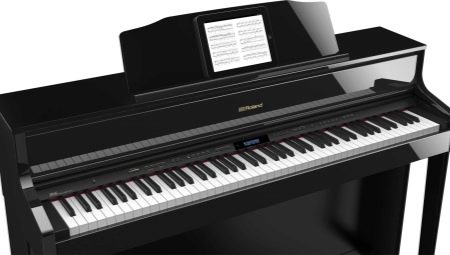
Содержание
- Расположение
- Составляющие нотного стана
- Обозначение знаков альтерации
- Тональность
- Как легко выучить?
- Как читать ноты с листа?
- Примеры красивых мелодий
Играть музыку без знания нот возможно. Однако такой уровень вряд ли выйдет дальше любительского. Чтобы иметь возможность сочинять мелодии, важно сперва выучить ноты.
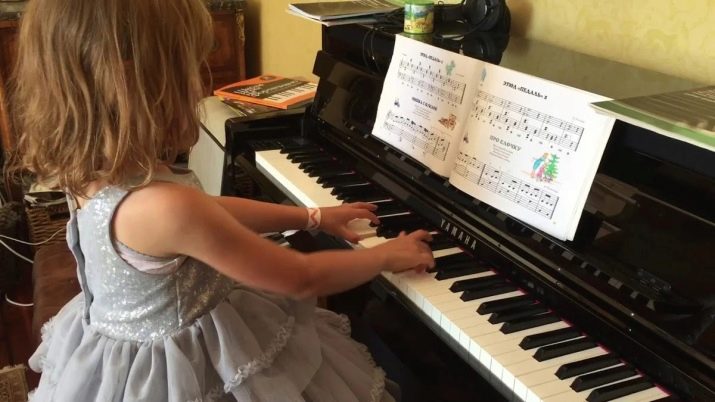
Расположение
Всего фортепиано имеет 88 клавиш. Из них 52 белого цвета, 36 чёрного. С помощью белых клавиш извлекаются звуки открытых нот. Открытыми они называются, потому что они без изменений. Чёрные клавиши изменяют звучание. С их помощью проигрываются диезы и бемоли.
Светлые музыкальные кнопки располагаются в ряд. Чёрные расположены по 2-3 кнопки между белыми. Эта особенность связана со звукоизвлечением.
Порядок нот на пианино следующий: До-Ре-Ми-Фа-Соль-Ля-Си-До. Эти ноты входят в первичную базовую гамму «До мажор». Начальная нота «До» относится к первой октаве, конечная «До» – ко второй. Последовательность этих звуков повторяется по всей клавиатуре фортепиано. «До» находится слева от группы из двух тёмных клавиш.
Помимо расположения и названия нот, важно то, какими пальцами нажимаются клавиши. Пальцы нумеруются следующим образом: первый – большой, второй – указательный, третий – средний, четвёртый – безымянный, пятый – мизинец. Это делается для удобства игры и эстетического процесса. Начинающим подписывают ноты цифрами, чтобы быстрее запомнить, каким пальцем нужно играть. Обучение по цифрам помогает довести процесс до автоматизма.
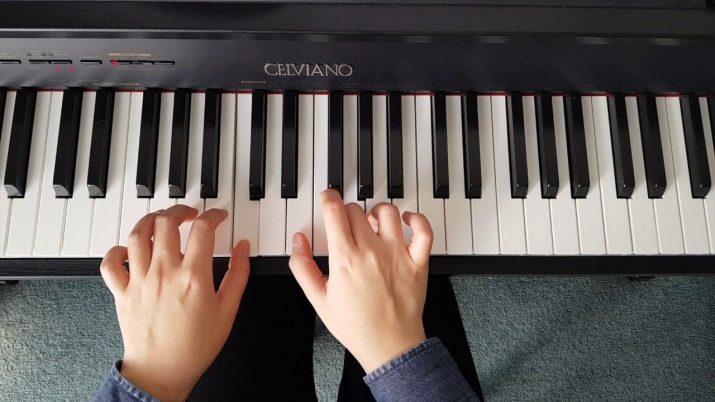
Составляющие нотного стана
Обучение музыкальной грамоте начинается с нотного стана. Он представляет собой пять горизонтальных параллельных друг другу линий. Нотный стан нужен, чтобы записывать музыку. Каждой ноте отведена своя линеечка. Когда линий не хватает, рисуют добавочные полосы.
Например, «До» располагается на первой добавочной линии. Под пятой полосой отмечается короткая черта, на которой рисуется нота «До». «Ре» находится под первой линией. «Ми» занимает первую линию. «Фа» находится между первой и второй. «Соль» занимает вторую линейку. «Ля» рисуется между второй и третьей линиями. «Си» располагается на третьей полосе. «До» второй октавы находится между третьей и четвёртой полосами.
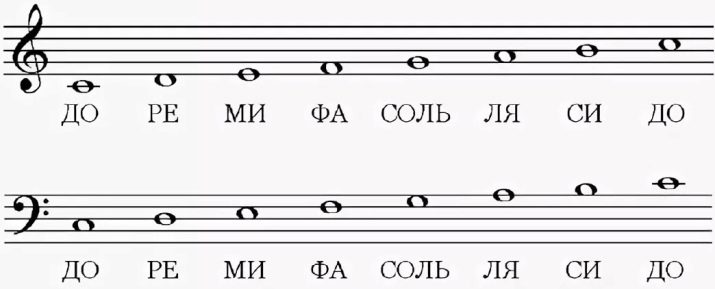
Помимо основных нот, стан вмещает в себя знаки альтерации. Эти символы используют для обозначения чёрных клавиш, расположенных на инструменте. Они находятся в начале гаммы после скрипичного ключа. Например, гармонический мажор. Это помогает заранее понять, где нужно играть чёрные клавиши, а где не нужно. Также альтерация указывается рядом с нотой. Расшифровка диеза и бемоля следующая: первый символ меняет звук, повышая его на полтона, бемоль, наоборот, настолько же понижает звучание.
Также в музыке используется такой символ, как бекар. Он имеет некоторое сходство с бемолем. Начинающие могут перепутать его. Значение же бекара прямо противоположное. Наличие бекара свидетельствуют об отмене любых изменений в целом такте или по отношению к одной ноте.
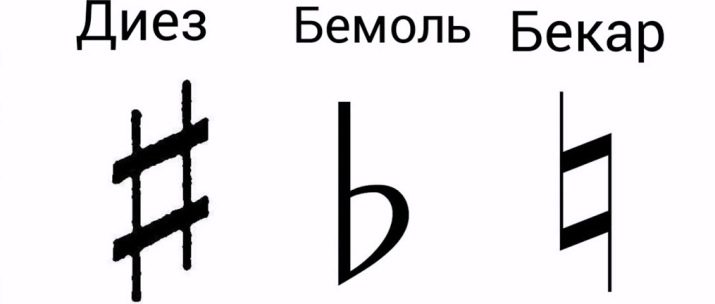
Ключи
Важными деталями нотоносца являются скрипичный и басовый ключи. Эти знаки пишутся перед всеми другими знаками, занимая самую первую позицию. Скрипичный ключ относится к звукам высокого регистра, басовый – к звукам низкого регистра. В фортепианной системе скрипичный ключ чаще всего используют для обозначения нот правой руки, а басовый – левой.
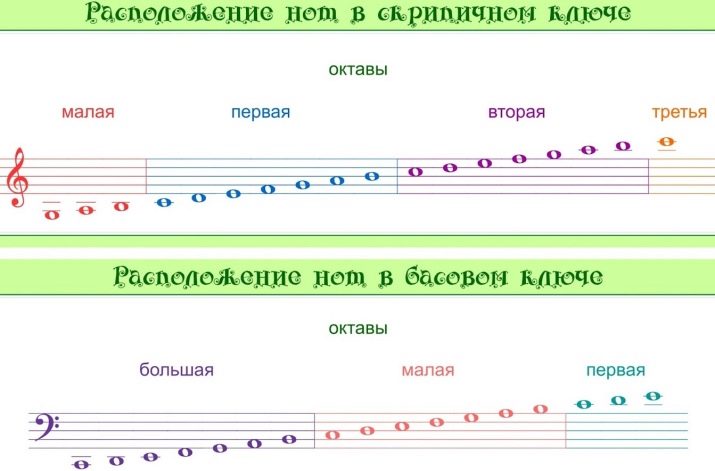
Размер
Чтобы музыка не звучала хаотично и была упорядочена, используют разные ритмы тактов. Музыкальный ритм определяет, сколько нот будет располагаться в одном ладу. Это придаёт мелодии частотную периодичность. Ритм обозначается двумя числами, расположенными одно над другим. Подобным образом пишется дробь в математике. Отличием является отсутствие черты деления.
Музыкальные ритмы бывают следующими: 2/4, 3/4, 4/4, 3/8, 6/8. Произносится ритм так: две четверти, три четверти, четыре четверти, шесть восьмых, две вторых. Число, расположенное наверху, указывает на то, сколько нот в ладу, выражаясь иными словами, до скольки нужно вести счёт: до двух, трёх и так далее. Число, находящееся внизу, показывает, сколько будет длиться нота. Ноты бывают целыми, длятся весь такт, половинными, продолжительностью в полтакта. Также выделяют четвертные, восьмушки и шестнадцатые.
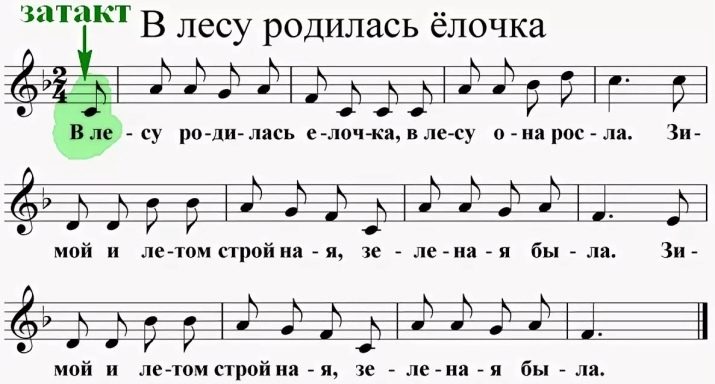
Две четверти – распространённый простой ритм. Он говорит о том, что один такт состоит из 2 четвертных нот. Ритмический рисунок размера 2/4 бывает разным. В ладу находятся 2 восьмушки и 1 четвертная или 6 шестнадцатых, объединённых по три. Вариаций много. Главное, чтобы их длительность соответствовала ритму 2/4. В начале изучения лучше не дробить и не объединять ноты. Экспериментировать можно, когда основы уже изучены.
Самый распространённый вариант ритмического рисунка 3/4 – 3 четвертных ноты в ладу. Возможен вариант использования одной половинной с точкой, расположенной сбоку. Тогда одна нота будет звучать весь такт. Размер 3/8 схож с 3/4. Однако вместо четвертных лад вмещает восьмушки.
Помимо простых, используются сложные музыкальные ритмы. В их число входят 4/4 и 6/8. Ритм 4/4 вмещает 4 доли, длительность которых равняется длительности 1 четвертной. Для обозначения ритма 4/4 нередко используют знак, схожий с буквой «С».
Шесть восьмых – ритм, состоящий из 6 долей. Он получается при соединении двух трёхчетвертных и представлен восьмыми нотами.
Похожим образом образованы другие сложные размеры: 4/8, 6/4, 9/8, 12/8. Самое важное, что нужно запомнить – соотношение размера с длительностью нот. Тогда не возникнут проблемы со счётом и с ритмом игры.
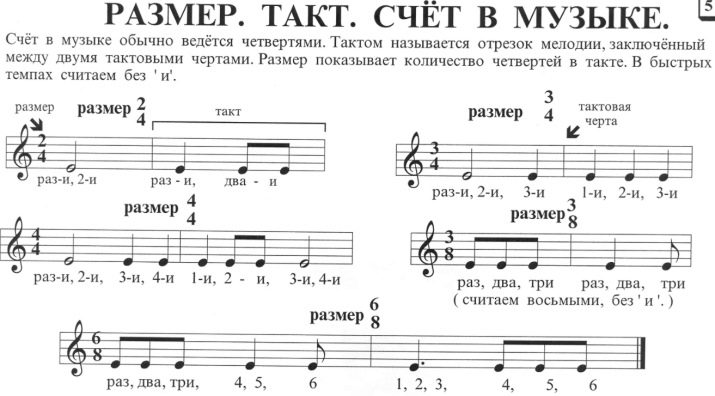
Такты и тактовые черты
Тактом называется отрезок музыки от одной сильной доли до другой. Тактовая черта представляет собой вертикальную черту, которая пересекает нотный стан. Эта черта разделяет два такта между собой. Так как мелодия может начаться и со слабой доли, существует такое понятие, как «затакт». Так называют неполный такт. Мелодия, начавшаяся с затакта, им же и заканчивается.
Окончание композиции обозначается двойной тактовой чертой. При этом вторая вертикальная линия утолщена.
Намного проще «отбивать» такт или считать вслух. Музыкальный счёт ведётся на «раз и», «два и»; так до четырёх. «Раз и» – относится к одной четвертной ноте. Переход к «два и» говорит о переходе на следующую ноту.
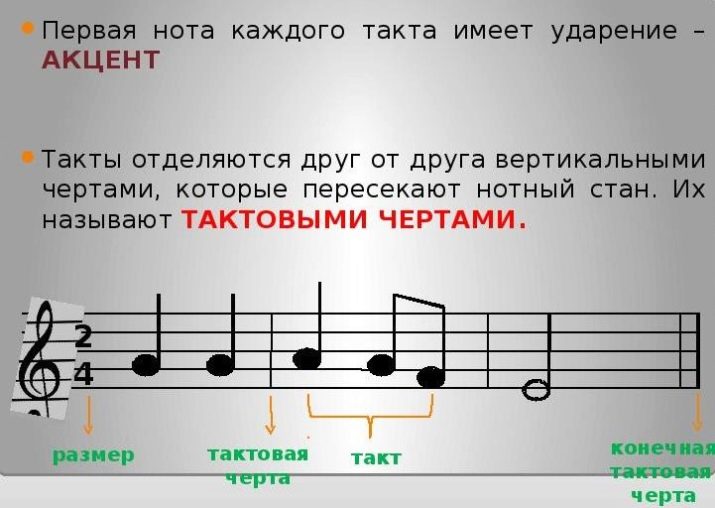
Обозначение знаков альтерации
Под музыкальной альтерацией понимается изменение звучания нот. Символами альтерации являются диез, двойной диез, бемоль, двойной бемоль и бекар.
Диез внешне напоминает решётку на кнопках мобильного телефона. Это знак повышения звука на полтона. Бемоль похож на английскую букву «b». Этот символ понижает звук на полтона. Бекар отменяет любые изменения звучания. Символ выглядит как цифра «4» с квадратом наверху. Двойной диез повышает звучание на два тона. Он пишется как крест с острыми концами, напоминающими ромб. Двойной бемоль понижает лад на два тона. Символ пишется как две буквы «bb», расположенные вплотную друг другу.
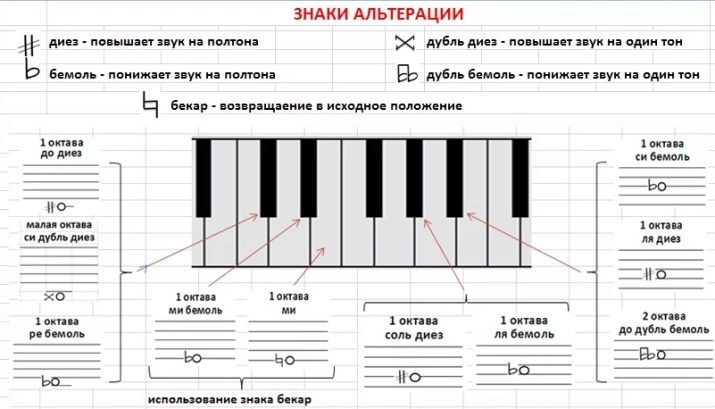
Тональность
Для того чтобы разобраться, что представляет собой тональность, стоит осветить такие понятия как «звукоряд», «лад» и «тоника». Звукоряд – это расположенные друг за другом ноты. Они имеют либо восходящий, либо нисходящий порядок. То есть звукоряд может начинаться либо со стандартного До-Ре-Ми-Фа-Соль-Ля-Си-До, либо выглядеть так: До-Си-Ля-Соль-Фа-Ми-Ре-До.
Ладом называется связь звуков между собой, их созвучность и упорядоченность. Ступеней лада 7, по количеству основных нот. Ступени обозначают римскими цифрами.
Тоника – первая и главная ступень лада. На ней находится устойчивое трезвучие: До-Ми-Соль. Оно задаёт окраску всему ладу.
Тональностью называется лад, имеющий определённую тонику. Тоникой является нота, от которой строится лад. Стоит рассмотреть на простом примере: гамма «До мажор». Здесь нота «До» выступает в качестве тоники, так как с неё начинается мелодия. Мажор окрашивает гамму позитивным настроением, а значит, является ладом. В гамме «До минор» «До» остаётся тоникой, при этой лад будет минор. Соответственно «настроение» мелодии изменится на грустное.
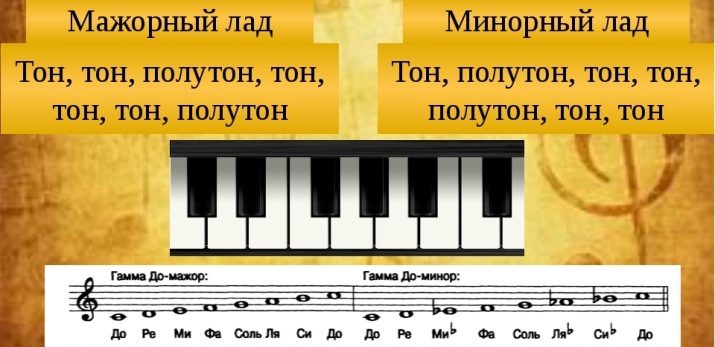
Как легко выучить?
Чтобы самостоятельно выучить ноты, достаточно выполнить ряд нетрудных упражнений. Первое, что нужно запомнить, – названия нот. Необходимо проговорить их в прямом и обратном порядке. Знание нужно довести до автоматизма. Также знания теоретические нужно соотнести с практическими. Наличие инструмента в домашних условиях обязательно. Нужно проиграть гамму «До мажор» несколько раз. Игру на фортепиано тоже важно доводить до автоматизма.
Существует множество тренажёров для новичков, по которым можно быстро учить нотную грамоту с нуля. Простой способ запомнить составляющие нотного стана – сверять их по клавишам. Одной теории недостаточно для свободной игры на фортепиано. Важно совместить изучение теории и практических занятий. Теоретические понятие и термины станет намного проще понять, проверяя всё с помощью музыкального инструмента.
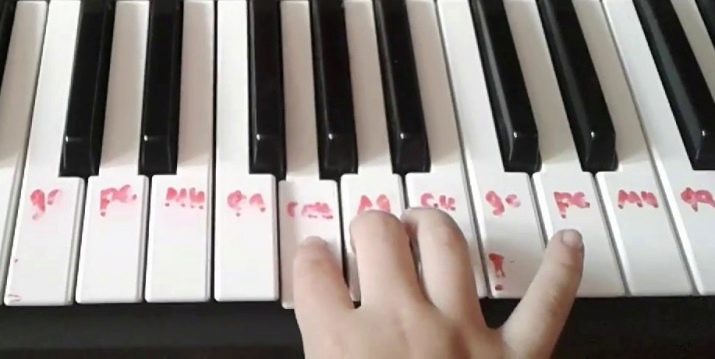
Как читать ноты с листа?
Для начинающих фортепиано может показаться сложным. Особенно новичков ставит в тупик чтение нот с листа. На первых порах обучения нотной грамоте допускается подписывание нот. Однако лучше сразу переходить к чтению музыкальных знаков без дополнительных подписей. В этом поможет несколько упражнений.
Необходимо записывать основные ноты на нотном стане. Это позволит быстрее запомнить, на каких линейках находятся музыкальные знаки, что поможет в чтении с листа.
Стоит заучить, что скрипичный ключ указывает на «Соль» первой октавы. Басовый ключ указывает на «Фа» малой октавы. Важно запомнить, что нота «До» первой октавы всегда расположена на первой добавочной линеечке.
Для контроля своих знаний стоит воспользоваться преимуществами технологий и установить программу «нотный тренажёр». Можно потренироваться с незнакомым нотным текстом. Программа поможет определить, правильно ли подобраны ноты.
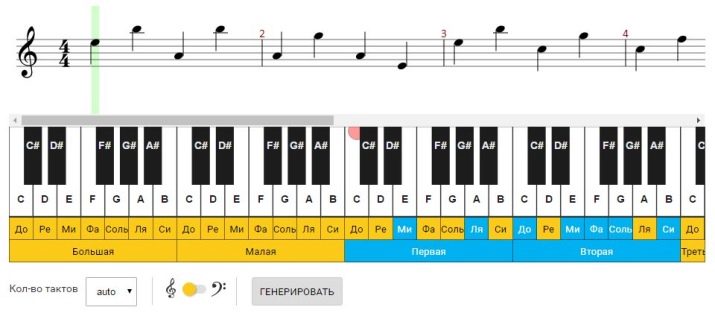
Примеры красивых мелодий
Прежде чем начать играть мелодии по нотам, важно осветить такое понятие, как «музыкальный штрих». Штрихом называют способ исполнения нот. Начинающие исполняют мелодии штрихом нон-легато, то есть не связно. При этом пауза между звуками составляет не больше 1/4. Также существует такой способ звукоизвлечения, как легато, или связно. Легато предполагает плавную игру, когда одна нота «перетекает» в другую. Ещё один штрих – стаккато, отрывисто. При этом ноты играются резко, остро, не сливаясь в цельную мелодию.

Начинающим лучше всего обратить внимание на детские песни. Не стоит сразу выбирать сложные произведения, занимающие 2-3 листа. Существует множество песен, которые состоят не больше, чем из 5-8 тактов. Новичкам можно посоветовать музыкальный сборник Б. Милича. В нём содержатся простые песни для детей.
- «Праздничная». Мелодия состоит из восьми тактов. Установленный размер – 4/4. Музыка записана четвертными и целыми нотами. Звуки альтерации отсутствуют.
- «Зима». Зимняя мелодия, состоящая из восьми тактов, отлично подойдёт для тренировки. Размер составляет 4/4. Медленный ритм и небольшое количество нот помогут быстро освоить игру на фортепиано.
- «Флажки». Эта мелодия немного сложнее. Она играется со знаками альтерации в тональности «До диез мажор» и «Фа диез мажор». Также здесь появляется нота с точкой. Точка, располагающаяся под нотой или над ней, показывает, что её нужно исполнять штрихом стаккато.
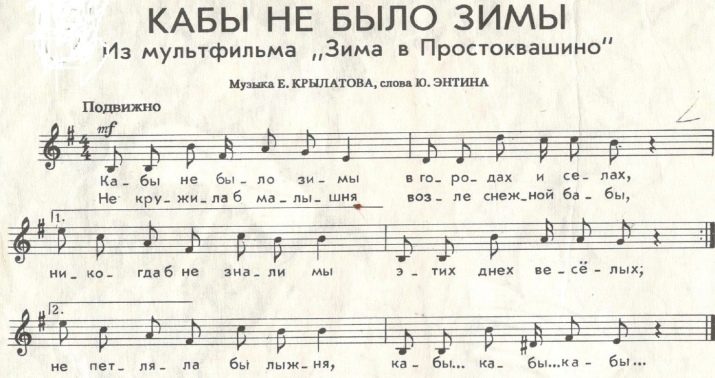
Потренировавшись на простых песенках, можно переходить к более сложным. Такие мелодии могут состоять из 15-20 тактов.
- «В траве сидел кузнечик». Популярная мелодия, которая имеет знаки альтерации, ноты с точками. Песня поможет закрепить и улучшить умения, полученные ранее.
- «Перепёлочка». Эта грустная мелодия познакомит с гаммой «Ля минор». Она играется в размере 2/4. Существует несколько вариантов этой песни. В одном отсутствуют знаки альтерации, в другом – присутствуют. Это позволяет выбрать между простым и усложнённым вариантами исполнения.
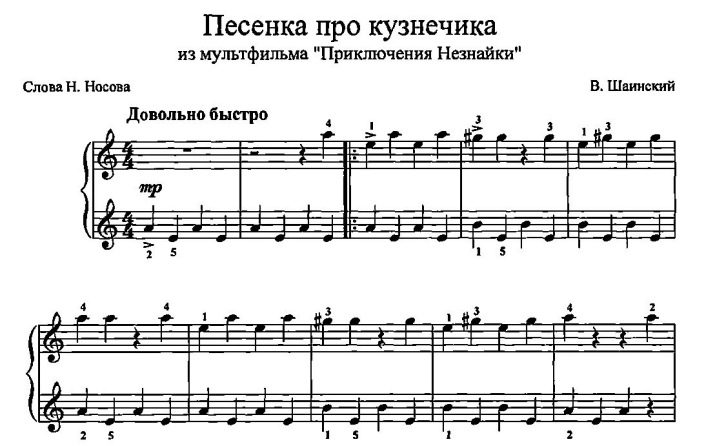
Чтобы увлечь детей занятиями, можно предложить сыграть современные песни из мультфильмов.
- Мелодия из «Фиксиков». Мелодия кажется незатейливой, однако это только на первый взгляд. Нотный стан представлен скрипичным и басовым ключами, присутствуют бемоль, диез и бекар. Чтобы сыграть эту песню, нужно «познакомиться» с шестнадцатыми и аккордами.
- «Мой маленький пони». Мелодия «Дружба – это магия» представлена только скрипичным ключом. Она играется в тональностях «До диез мажор» и «Фа диез мажор». Другие знаки альтерации отсутствуют.
Помимо чтения с листа и запоминания нот, важно уделить время извлечению звуков на слух. Можно прослушать любую мелодию и попытаться подобрать на музыкальном инструменте. Это поможет развить творческие навыки.

Для того чтобы в совершенстве овладеть игрой на фортепиано, уйдёт не один год. Однако начать можно буквально с нуля. Необходимая теория изучается в процессе обучения. Остальное зависит от желания и упорства.
Для того чтобы сохранить музыкальное произведение на века, были изобретены ноты. Неподготовленный музыкант не сумеет воспроизвести его, не понимая, как читать ноты. В то время как профессионал без труда воспроизведет любую музыку, лишь заглянув в нотную тетрадь. Все дело в наличии навыка и опыта. С помощью знаний, можно с легкостью играть музыку, складывая ноты как во время прочтения книги.
Содержание
- 1 Краткая историческая справка
- 2 Основная информация
- 2.1 Нотный звукоряд
- 2.2 Понятие интервалов
- 2.3 Октавы
- 3 Расположение нот на стане
- 3.1 Скрипичный ключ
- 3.2 Басовый ключ
- 3.3 Обозначение нот на линейках
- 3.4 Дополнительные линейки
- 4 Определенные особенности записи нот
- 4.1 Знак восьмерки
- 4.2 Длительность нот
- 4.3 Ноты с точкой
- 4.4 Динамика и музыкальные штрихи
- 5 Как считать длительность и такт
- 6 Счет по пульсу
- 7 Дополнительные знаки в нотной записи
- 8 Как самому записать ноты
Краткая историческая справка
Для успешного понимания сути нотной грамоты нужно обратиться к истокам.
Раньше музыка передавалась из уст в уста, как и литературные произведения. Но люди понимали, что ее необходимо сохранять, а соответственно – научиться систематизировать и записывать особым образом. Попытки сделать это были разнообразны.
В III в. н. э. Древнегреческий теоретик музыки Алипий из греческих букв составил список символов, каждый из которых интерпретировал звук конкретной высоты. Римляне также воспользовались данным способом, заменив греческие буквы на латинские.
В Средневековье для фиксации нот использовали невменную нотацию. Особенно часто к данному способу прибегали для фиксации направления движения мелодии при воспевании католических псалмов. Однако данная техника не была совершенной. С помощью нее певцы псалмов могли только вспомнить уже ранее разученную мелодию. Такая система не передавала высоту звука точно.
Решением данной проблемы теоретики музыки занимались долго. В результате, было решено ввести определенный ориентир – линию для звука fa. От нее вели счет остальных звуков вверх и вниз. Позже для звука do была введена еще одна линия.
Педагог Гвидо Аретинский ввел четыре параллельных линии, на которых стали изображать невмы, каждая из которых обозначала определенную высоту звука. Так в истории музыки появился нотный стан. Отличие современного нотного стана от невменной системы той поры лишь в том, что линий стало пять, а невмы заменили нотами.
Основная информация
Современная нотная грамота, знание которой необходимо для написания музыки и ее воспроизведения, основывается на базовых элементах. Музыканту необходимо выучить азы нотного звукоряда, разобраться в интервалах и октавах.
Нотный звукоряд
Музыкальная система вмещает в себя ряд звуков. Они размещены в порядке возрастания. Всего таких звуков 88. Их основная составляющая – ноты. Это своеобразные буквы музыки, которые отражают высоту звука, а также его длительность.
Современная музыкальная система состоит из семи хорошо известных всем звуковых обозначений. Они расположены в определенной последовательности:
- До;
- Ре;
- Ми;
- Фа;
- Соль;
- Ля;
- Си.
Их повторение определенное количество раз и образует в конечном итоге звукоряд из 88 звуков.
Понятие интервалов
Каждая нота обозначает определенную высоту звука. Соответственно, каждая определенная нота выше, чем предыдущая, записанная перед ней.
Для того чтобы правильно читать ноты, необходимо запомнить суть обозначений интервала. Это отношение между одновременно и последовательно взятыми звуками. Существует два вида интервалов:
- Гармонический (при одновременном звучании);
- Мелодический (при последовательном звучании).
Интервал вмещает в себя вершину и основание. Между ними есть расстояние, которое в музыкальной грамоте измеряется количеством тонов или ступенями. Интервалы принято обозначать арабской цифрой. А их названия происходят от латинских числительных.
Основные характеристики интервала:
- Прима – указывает на расстояние между одной и той же нотой. Как правило, это минимальное или нулевое значение, поэтому прима является формальным интервалом.
- Секунда – расстояние, измеряемое в две ступени.
- Терция – расстояние, измеряемое в три ступени.
- Кварта – расстояние, измеряемое в четыре ступени.
- Квинта – расстояние, измеряемое в пять ступеней.
- Секста – расстояние, измеряемое в шесть ступеней.
- Септима – расстояние, измеряемое в семь ступеней.
- Октава – расстояние, измеряемое в восемь ступеней.
Октавы
Согласно пределам возможностей, голос или инструмент может звучать определенно низко или высоко. Расстояние между этими значениями называется диапазоном. В музыке диапазон измеряется октавами. Она выбрана мерой измерения потому что охватывает весь звукоряд из семи нот. Всего в музыке девять октав.
Удобнее всего понять суть нюансов, связанных с октавами на примере фортепиано. Его клавиатура содержит две неполных и 7 полных октав.
Октавы на примере клавиш пианино.
Считать их принято в музыке от ноты До. Поэтому первое, чему учат в любой музыкальной школе – находить на пианино именно эту ноту. Для этого необходимо найти группу из двух черных клавиш. Нота До будет слева.
Расположенные правее клавиши звучат выше, те что левее звучат ниже.
Эти правила позволяют нажать нужную ноту в случае необходимости. В том случае, если необходимо просто нажать ноту До, можно нажать любую клавишу, обозначающую эту ноту. Однако если нужно нажать ноту До в определенной октаве, музыкант коснется конкретной клавиши.
Расположение нот на стане
Музыкальные инструменты способны звучать в различном диапазоне. Туба может извлекать звуки контроктавы, а флейта звучит вплоть до пятой октавы. На фортепиано расположено 88 клавиш, и она способна звучать как на пятой октаве, так и на контроктаве.
Современный нотный стан содержит в себе только пять параллельных линий. Вопрос в том, как разместить на них ноты, которые способные обозначить такую разность звуков. Для этого используются скрипичный и басовый ключи.
Скрипичный ключ
Скрипичный ключ в музыкальной грамоте иначе обозначается как ключ Соль из-за того, что рядом с ним расположена нота Соль.
Этот ключ используется для записи высоких нот и подходит не для каждого инструмента. Если записать в этом ключе ноты для фортепиано, музыкант будет играть их правой рукой.
ВАЖНО! Данная нота является нотой именно первой октавы.
В этом ключе в основном пишутся ноты для скрипки, гитары или духовых инструментов, так как они способны воспроизвести ноты с малой октавы и выше.
Басовый ключ
Рядом с данным ключом расположена нота Фа, поэтому его иначе обозначают как ключ Фа. Применение басового ключа используется не так часто, как скрипичного. Басовые линии применяются в музыке для воспроизведения звука, который расположен ниже малой октавы.
В основном такой ключ подходит для записи нот для таких инструментов как фагот, бас-гитара или контрабас.
Существует колоссальное отличие в написании нот в скрипичном и басовом ключе и в том, как это выглядит в нотной тетради. На нотном стане у них совершенно разное расположение. Написание нот на басовом ключе требует отдельного запоминания.
Обозначение нот на линейках
Расположение нот в скрипичном ключе имеет принципиальное значение в музыкальной грамоте. Основные правила расположения таковы:
- До – располагается на первой добавочной линейке.
- Ре – под первой линейкой.
- Ми – на первой линии.
- Фа – между 1 и 2.
- Соль – на 2.
- Ля – между 2 и 3.
- Си – на 3.
- До2 – между 3 и 4.
Расположение нот в басовом ключе:
- До – между 2 и 3.
- Ре – на 3.
- Ми – между 3 и 4.
- Фа – на 4
- Соль – между 4 и 5
- Ля – на 5
- Си – над 5.
- До – на первой верхней добавочной линии.
Как видно, ноты в басовом и скрипично ключе на нотном стане записываются по-разному.
Дополнительные линейки
Для того чтобы написать низкие звуки, удобнее всего использовать именно басовый ключ. Но многие композиторы и музыканты для записи небольшого количества звуков иногда используют дополнительные линейки. К примеру, для записи ноты До первой октавы используется дополнительная линейка.
СПРАВКА! Если записывать ноту в скрипичном ключе, дополнительная линейка будет расположена ниже обычного нотного стана, если же в басовом – выше нотного стана.
Определенные особенности записи нот
Для записи очень высоких или очень низких нот можно использовать не дополнительные линейки, а знак восьмерки.
Знак восьмерки
В случае расположения специального знака восьмерки выше обычного нотного стана, все ноты, расположенные под пунктиром следует играть на октаву выше. Если знак восьмерки расположен ниже нотного стана – ноты играются на октаву ниже.
Пунктир и сама восьмерка должны быть расположены или над нотоносцем, или под ним.
Длительность нот
Ноты способны отражать не только высоту звука, но и его длительность – протяженность во времени. Самая продолжительная нота называется «целая». Остальные виды протяженности происходят за счет деления целой.
Виды длительности ноты:
- Целая. Обозначается в виде прозрачного овала. Например, протяженность ее 4 секунды.
- Половинная. Обозначается в виде прозрачного овала со штилем. Эта нота будет звучать уже 2 секунды.
- Четвертная. Обозначается в виде закрашенного овала со штилем. Звучит в четыре раза короче, чем целая – 1 секунду.
- Восьмая. Обозначается также как и четвертная, только штиль на конце имеет специальный флажок в виде хвостика. По длительности занимает всего полсекунды.
- Шестнадцатая. Имеет два флажка. Для того чтобы заполнить время целой, таких нот нужно будет шестнадцать.
- Тридцать вторая. Имеет три флажка. Для заполнения времени целой ноты понадобится уже тридцать две таких нот.
- Шестьдесят четвертая. Имеет четыре флажка. Шестьдесят четыре таких ноты заполняют одну целую.
Ноты могут группироваться между собой, образуя ребро (похоже на букву П). В зависимости от количества флажков объединенных нот формируется и количество ребер.
Ноты с точкой
Использование точки рядом с нотой необходимо для отображения увеличения или уменьшения продолжительности звучания.
Если точка располагается правее от ноты, на половину от ее обычной длительности должна быть увеличена и продолжительность звучания. Также можно увеличить и паузы.
Динамика и музыкальные штрихи
Также как и в человеческой речи, для того чтобы придать музыке эмоциональности, необходимо увеличить или уменьшить силу звука. Это достигается с помощью специальных динамических оттенков.
Еще одним способом придания музыкальной композиции тех или иных оттенков является метод звукоизвлечения, именуемый штрихом. Для каждого музыкального инструмента он индивидуален. Так, для придания оттенка во время игры на фортепиано, внимание обращено на особый образ прикосновения к клавишам. Во время игры на скрипке – на прикосновение смычка. Такие приемы называются «туше».
В музыкальной грамматике используется два основных вида штрихов:
- Легато. Обозначается в виде нарисованной под нотами дуги. Извлекаемый звук должен быть плавным и перетекаемым;
- Стаккато. Обозначается в виде точек, расположенных над каждой нотой. Извлекаемый звук должен быть точным, кротким и прерывистым.
Как считать длительность и такт
Для того чтобы «уловить» процесс счета длительности нот, лучше всего представить механические часы. В них секундная стрелка разделяет минуту на определенные отрезки в равных долях. Такие отрезки можно сравнить с сердцебиением. Измерение обычно происходит проверкой пульса.
Музыка тоже имеет свой пульс, который измеряется количеством ударов в минуту. Для измерения необходимо всего лишь знать соотношение этих длительностей.
ВАЖНО! Для того чтобы научиться играть ритмично, музыкант должен придерживаться чувства равномерной пульсации. Равномерность пульса – основа ритмичности в музыке.
Счет по пульсу
Пульс – это определенные сигналы, отражающие течение ритма музыки, временную разницу между тишиной и нотами, составляющими музыкальное произведение.
Для того чтобы произвести счет по пульсу, необходимо всего лишь взять за основу один интервал между ударами. Деление этого интервала на доли будет осуществляться в зависимости от того, какой ритм у музыки – быстрый или медленный.
Зная интервал, можно просчитать, быстрее или медленнее будет пульс в музыкальном произведении на определенном отрезке в сравнении с предыдущим.
Дополнительные знаки в нотной записи
Помимо нот и ключей в музыкальной грамоте используются дополнительные знаки, которые тоже важно знать. Одной из распространенных разновидностей являются знаки сокращения:
Как самому записать ноты
Для того чтобы записать ноты, необходимо расчертить нотоносец (нотный стан) или приобрести в магазине тетрадь, в которой он уже расчерчен. Не стоит забывать про скрипичный или басовый ключ, на основе которого будут записаны ноты.
Современные технологии также предоставляют возможность записывать ноты в режиме онлайн в различных программах и приложениях.
Нотная грамота – это своеобразный язык, используемый для чтения музыкальных произведений. Научиться читать, понимать и играть ноты достаточно просто. Следует только вникнуть в основные правила, изобретенные уже очень давно, и чаще тренироваться.

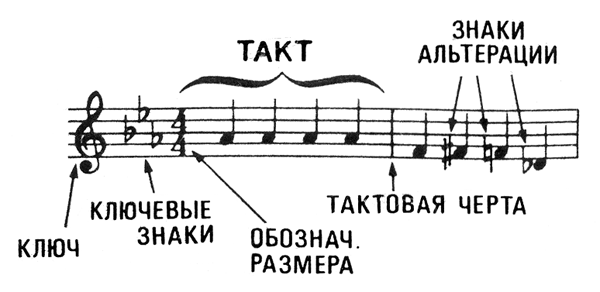
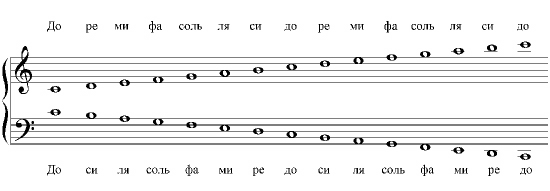





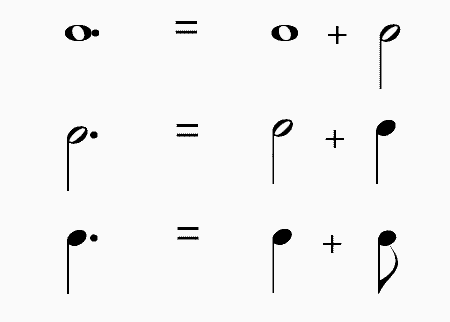

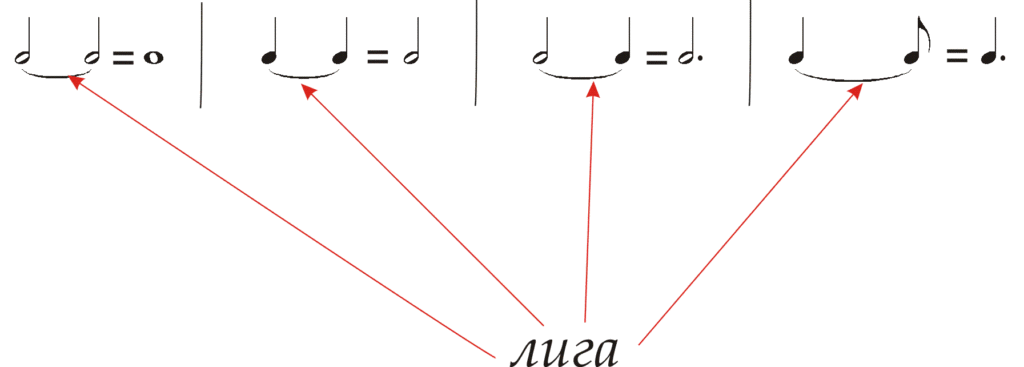
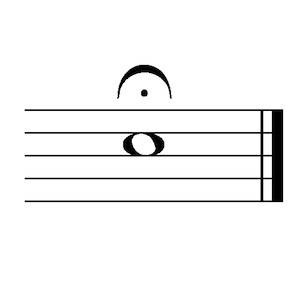


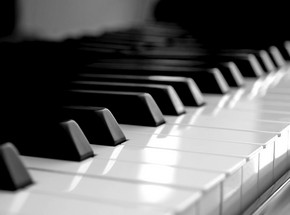







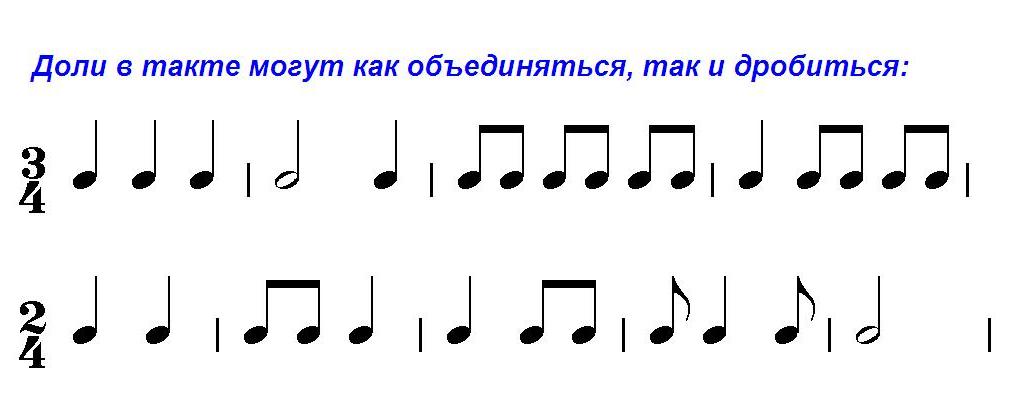
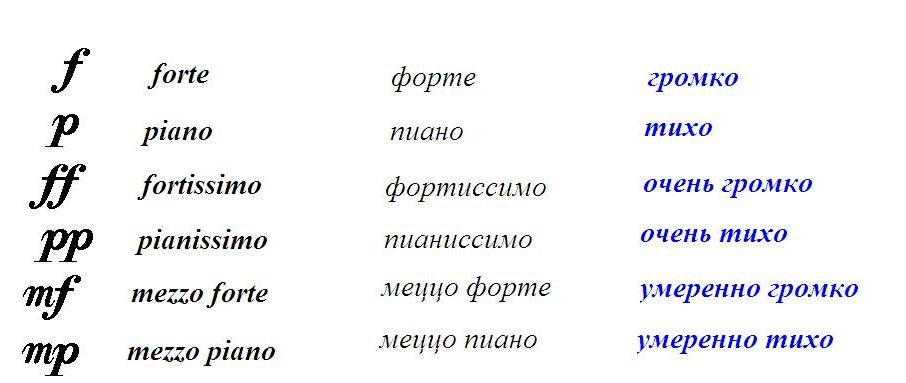











































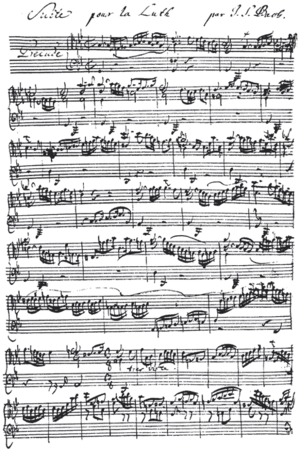
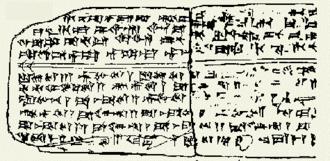
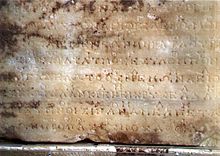
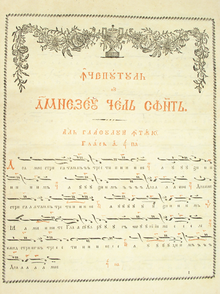


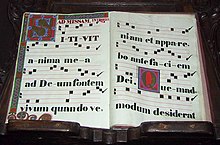
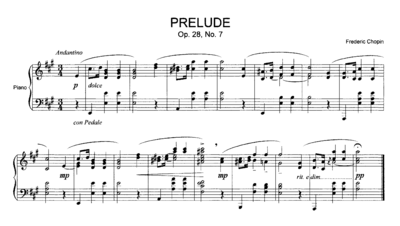





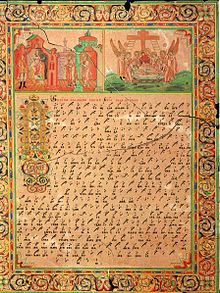
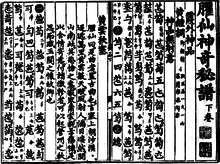
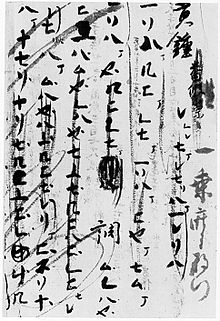
![A short melody in slendro notated using the Surakarta method.[27]](https://upload.wikimedia.org/wikipedia/commons/thumb/f/fc/Surakarta_gamelan_notation_slendro.png/120px-Surakarta_gamelan_notation_slendro.png)
![The same notated using the Yogyakarta method or 'chequered notation'.[27]](https://upload.wikimedia.org/wikipedia/commons/thumb/8/8d/Yogyakarta_gamelan_notation_slendro.png/84px-Yogyakarta_gamelan_notation_slendro.png)
![The same notated using Kepatihan notation.[27]](https://upload.wikimedia.org/wikipedia/commons/0/08/Kepatihan_gamelan_notation_slendro.png)

 preserved this gestic notation based on the practice of cheironomia, and transcribed the gestic signs into sticherarion notation in a second row. For more about kondakar, see Floros & Moran (2009) and Myers (1998).
preserved this gestic notation based on the practice of cheironomia, and transcribed the gestic signs into sticherarion notation in a second row. For more about kondakar, see Floros & Moran (2009) and Myers (1998).





















